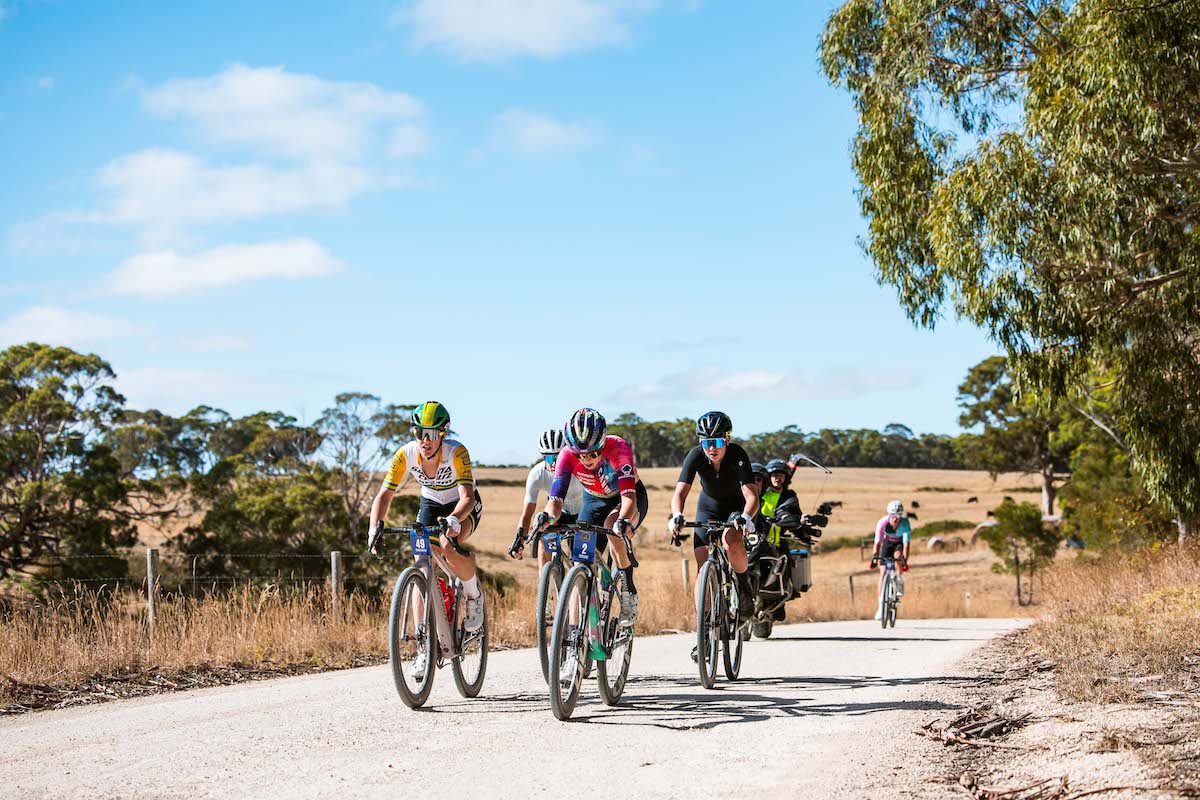Wind tunnel tested: 47 helmets go head to head in world's most comprehensive aero shootout
47 helmets, 55 tests, one wind tunnel, multiple price points, all styles and a whole heap of data
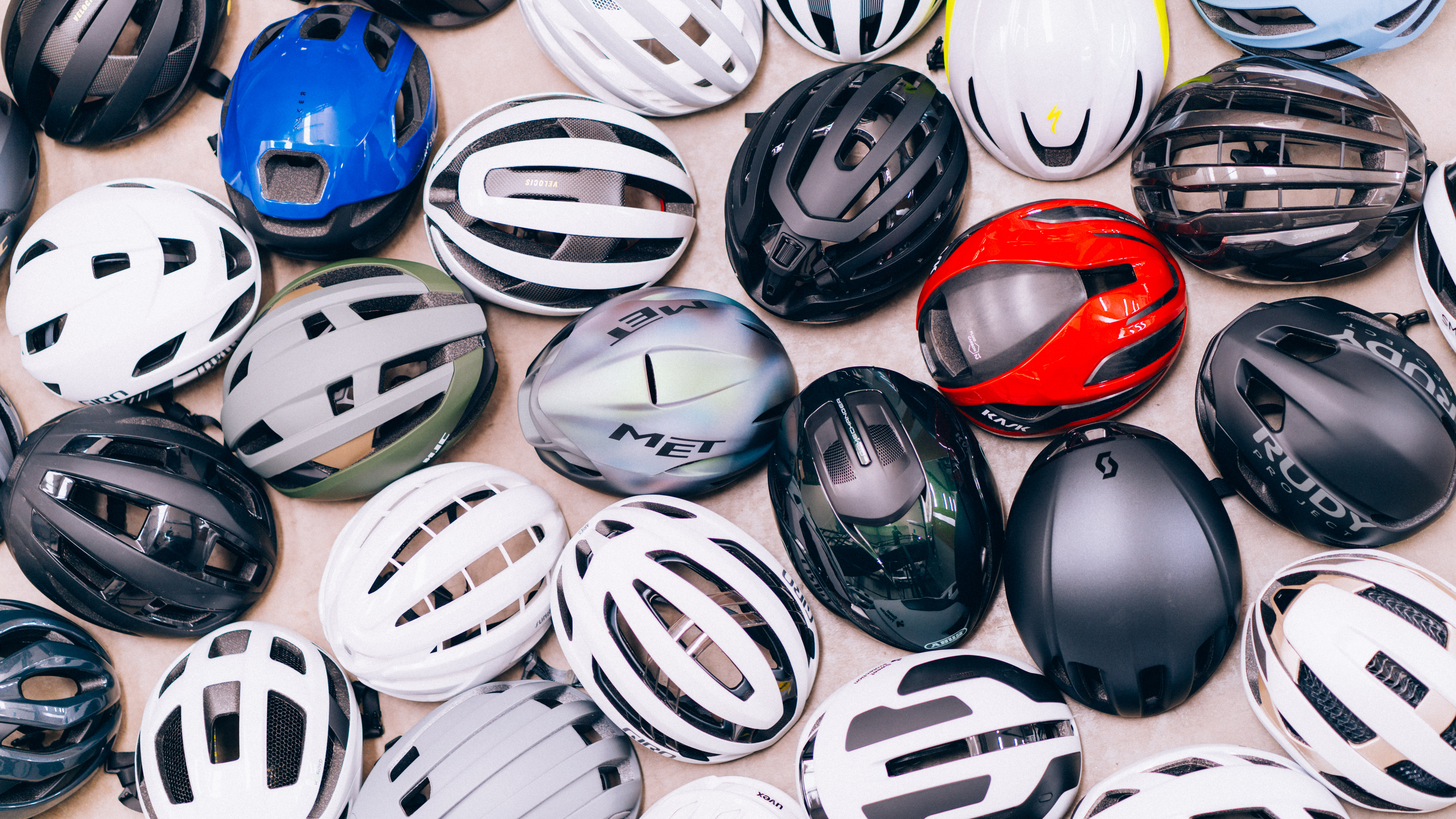
When it comes to choosing a new road bike helmet, there will be multiple factors that you need to balance to choose the right one for you. Safety will be your primary concern, but price, aerodynamics, weight, ventilation and of course style will come into play too.
Naturally, these factors play off against each other. Generally speaking, an aerodynamic helmet is considered less well ventilated and heavier, whereas a better-vented helmet is lighter but slower. Pick one that does all things well, and you're going to need deep pockets to pay for it.
The problem is that not many of those metrics are particularly well published, so you can often feel like you're flying blind when trying to find the best road bike helmet for you.
A few third parties perform independent safety tests – the best-known of these being Virginia Tech University – but at an industry level, all we can know for sure is that a helmet has passed your local authority's minimum standard. This is little more than a pass/fail test, and according to our sources it is a low bar.
Beyond this, we're at the whim of brands' claims, online reviews, and feedback from our friends.
Road helmets come in a few distinct categories. Standard 'ventilated' helmets are the most common, but almost every brand now offers a dedicated 'aero' helmet.
These burst onto the scene in the mid-2010s and are ubiquitous nowadays. Some of which are subtle in their aero intentions, others unashamedly not, with long protruding rears and closed-off fronts.
They are almost always launched with claims of an aerodynamic saving, but most often the helmets being compared against are the same brand's old model or an unnamed competitor. Rarely will they name the competition.
It's tough, therefore, to know how the various helmets on the market compare to one another, but that's where we come in.
We collated almost 50 road bike helmets from around the industry and took them to Silverstone Sports Engineering Hub's cycling-specific wind tunnel - the same facility used by WorldTour teams and renowned manufacturers, and where the majority of our Cyclingnews Labs empirical tests have been run - in order to find the best aero helmet on the market.
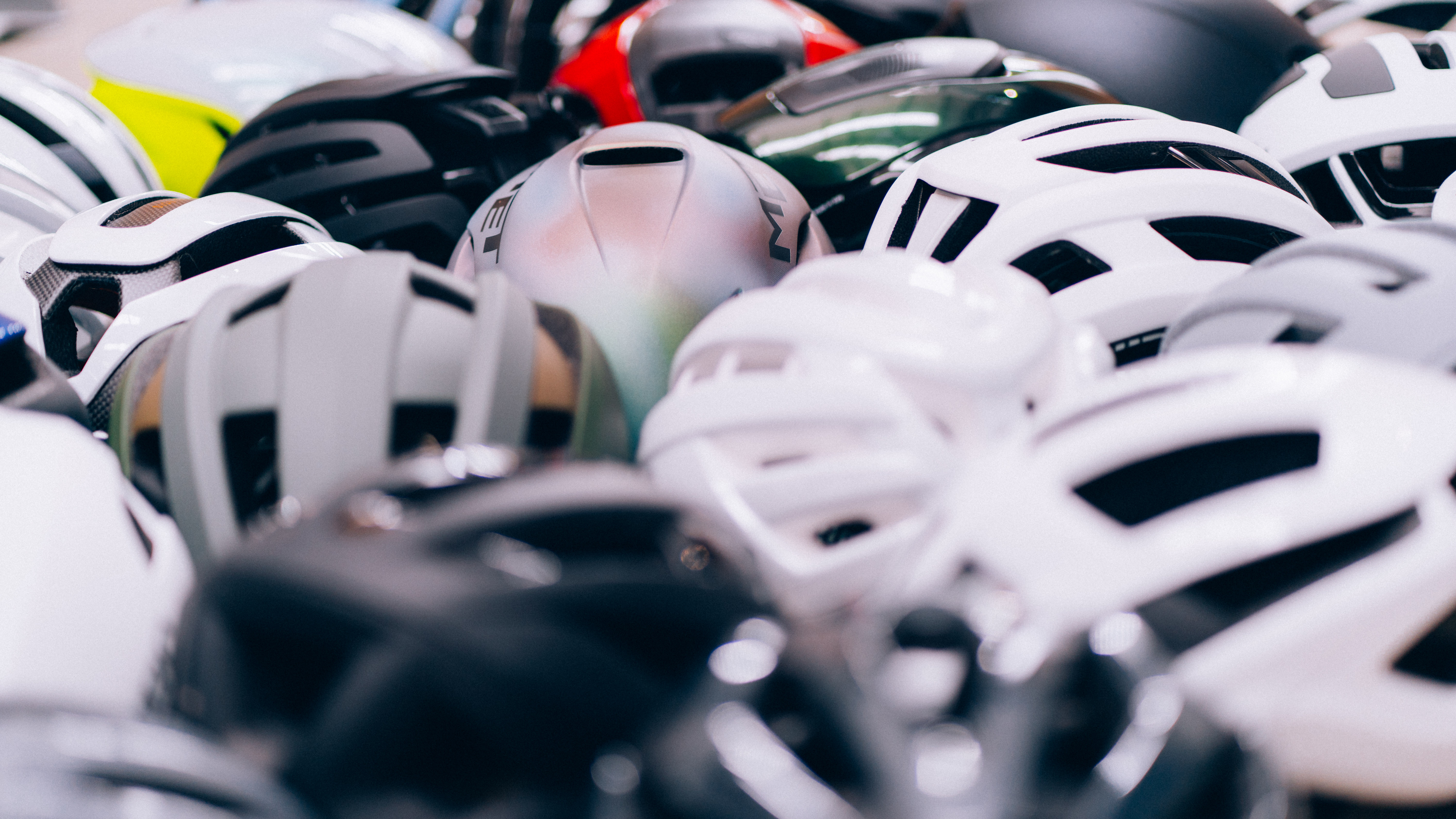
The helmets
Aerodynamics affects all of us. No matter if we're commuting to work, pottering around on a Sunday gravel ride at 18km/h, or racing at 50km/h in the Tour de France.
Therefore, we've tested a range of helmets from budget-level ventilated helmets to hyper-focused aero helmets and everything in between. We even threw in a handful of time trial helmets, given that certain WorldTour teams have worn them in road races this season, although the UCI does look set to ban them next year.
Our aim, over time, is to build a database of road bike helmet aerodynamic performance. Not only will this become a simple leaderboard of the fastest helmets out there, but it will also help our readers understand the difference between two helmets they're thinking of buying, or to understand the benefits of spending extra to get the next model up.
If your Cyclingnews subscription helps you to save money, go faster, or a combination of both when buying your next helmet, I'll be a very happy boy.
The full list of helmets we tested, in alphabetical order, is as follows.
- Abus Airbreaker
- Abus Gamechanger 2.0
- Abus Powerdome
- Abus Stormchaser
- Bell Falcon XR
- Bell XR Spherical
- Canyon Stingr (size M - with Highbar strap)
- Fizik Kudo Aero
- Giant Rev
- Giant Rivet (time trial helmet, tested with and without visor)
- Giro Aerohead (time trial helmet, tested with and without visor)
- Giro Aries
- Giro Eclipse
- HJC Furion 3
- HJC Ibex 3
- Kask Elemento
- Kask Nirvana
- Kask Protone Icon
- Kask Utopia Y
- Lazer Vento Kineticore
- Lazer Z1 Kineticore
- Met Manta (tested in size medium and large, then size large with badly adjusted straps)
- Oakley Velo Mach
- POC Cytal
- POC Cytal Carbon
- POC Procen Air (tested with and without visor)
- Rudy Project Nytron
- Rudy Project Nytron Pro
- Scott Cadence
- Smith Ignite
- Smith Network
- Smith Trace
- Specialized Propero 4
- Specialized S-Works Evade 3
- Specialized S-Works Prevail 3
- Specialized Search
- Sunrimoon Alien
- Sunrimoon Sariel
- Sweet Protection Falconer (tested with and without aero covers)
- Sweet Protection Tucker 2Vi
- Trek Ballista
- Trek Circuit Wavecel
- Trek Velocis
- Uvex Surge (tested with and without aero cover)
- Van Rysel RCR
- Van Rysel RCR-F
- Van Rysel XCR (time trial helmet, tested with and without visor)
Each helmet was size large, with the exceptions of the medium Met Manta which we included in order to compare different sizes, and the Canyon Stingr, which we could only source in a size medium but included out of curiosity, given its use of the new Highbar strap system.
The helmets included are the ones that we, the Cyclingnews tech team, believe are the ones that our readers might consider buying. We looked at all major brands and requested the key helmets from each range across multiple price points.
To a point, it was limited to what we could get our hands on. For example, we tried to include helmets from Ekoi, but our repeated attempts to contact the brand went unanswered. We also wanted to test the 'aero plugs' that you can buy aftermarket for the Scott Cadence, but no stock was available. And while we tested the Uvex Surge with and without the aero shell, I completely forgot that a similar shell was available for the Lazer Z1, so apologies for not testing that. Lazer tells me that's worth about four watts in its own tests (velocity unconfirmed).
We initially failed to get the new Velo Mach helmet from Oakley, but some sweet-talking of Tudor Pro Cycling's staff saw them kindly let us borrow one of theirs for the day.
Since running the test in mid-June, we've also seen a handful of new helmets on show in the Tour de France. Sadly, none of those made it into our test, but our protocol, outlined below, should be repeatable. As such, we can test again in future with confidence that new helmets will slot into the results table.
The helmet 'types' listed above are my own, rather than anything formal. You might disagree with some of them, but it's not particularly relevant to the outcome of the test. If the UCI makes good on its threat to categorise helmets, I will adopt their approach.
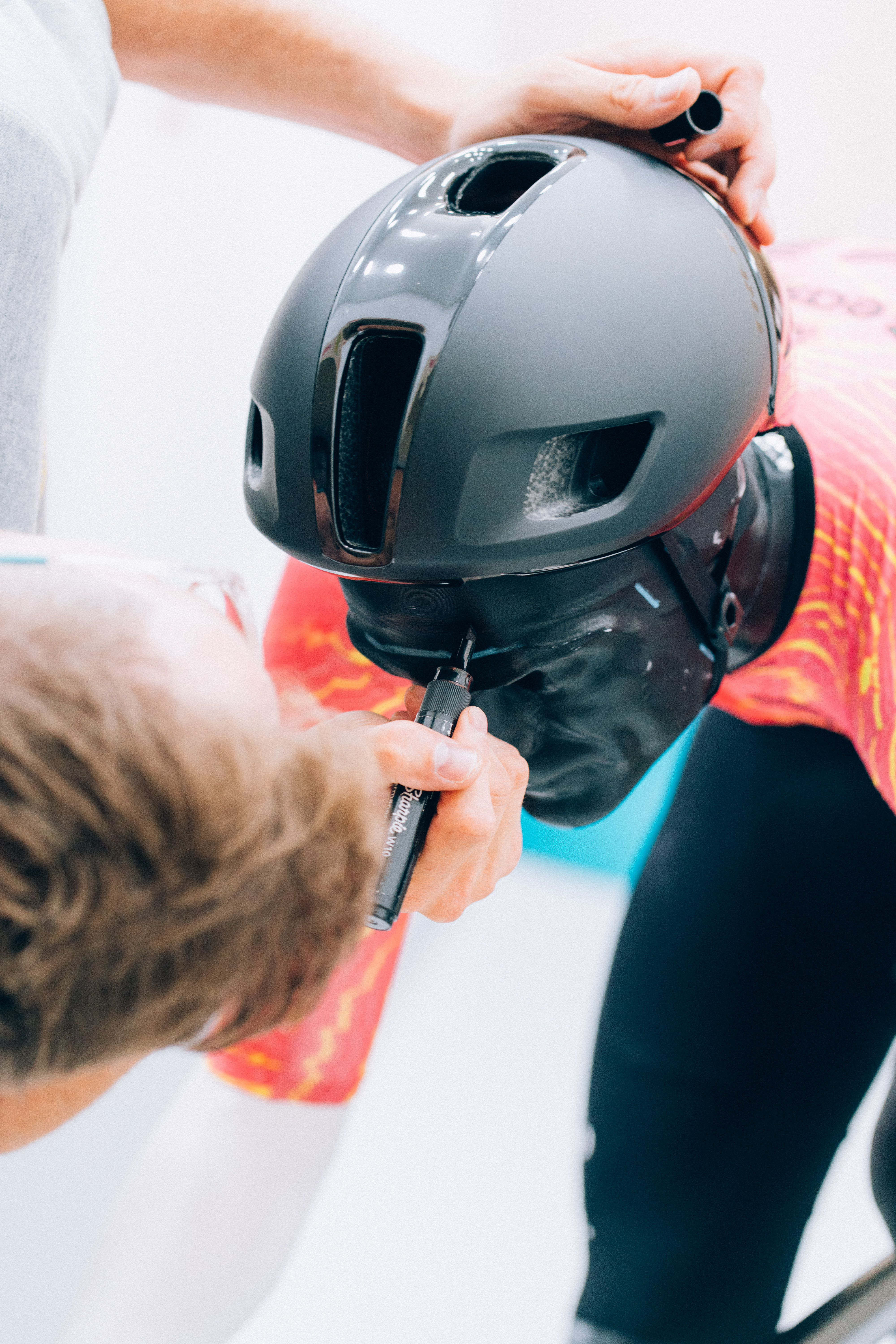
The test and protocol
As with many of the Cyclingnews Labs tests, the helmets were tested in the wind tunnel at the Silverstone Sports Engineering Hub.
Each helmet was tested at 40km/h (24.95mph), at four yaw angles: 0°, 5°, 10° and 15°. This is the angle at which the wind hits the rider, with 0° being a straight-on headwind, and 15° coming from the rider's left. There was no reason to test at -5°, -10°, or -15°, given that helmets are symmetrical.
Each helmet was tested in a sweep in the same positive direction (0 to 15) for consistency and held for 15 seconds per capture.
The fastest 10 road helmets from the original cohort (including the Giro Aerohead without a visor - blame Visma-Lease A Bike) were then re-tested at 50km/h (31.07mph), to add more data and to see if any of their relative positions changed at a speed more representative of a WorldTour peloton.
The wind tunnel measures CdA, or Coefficient of drag x Area. This is the measure of how aerodynamic an item is, as a combination of how well air passes over an item's surface (Coefficient of drag) and the item's size (Area).
Each helmet was tested on a mannequin. This gave us increased reliability and repeatability and therefore greater confidence in the accuracy of our results versus using a real rider.
The mannequin was fitted into a skinsuit to try to better mimic the surface texture of a real rider. Rapha sponsored this test, and as such, we chose one of EF Education First's Rapha Pro Team TT skinsuits from a recent season.
The mannequin was placed with its hands in the drops to reflect a relatively aggressive aero breakaway position. The mannequin's position remained untouched all day to prevent affecting the results.
The bike in use was a Worx WX-R track bike. The wheels were fixed for the test - they did not spin during the captures, and the position of the valves was captured in the 'edge' files to ensure we can replicate it in future tests.
We ensured each helmet was sitting in the same position before each run, and the straps for each helmet were clean against the mannequin's face without any strap 'tail' flapping in the wind. We also tested one helmet with 'bad straps' to see what the effect of this would be. To our surprise, it made very little difference at all.
On a couple of helmets, we were forced to cut the strap short because it was too long to neatly tuck against itself.
The wind tunnel itself was operated by staff from SSEH. It was tared – similar to zeroing your power meter or your kitchen scales – before each capture to ensure accuracy. The wind tunnel is also designed to account for changes in environmental factors such as temperature and air pressure.
Holding the bike in place was a set of stanchions, and no corrections were made for these, since they were the same across all tests. We're primarily interested in the difference between helmets here, not the absolute values.
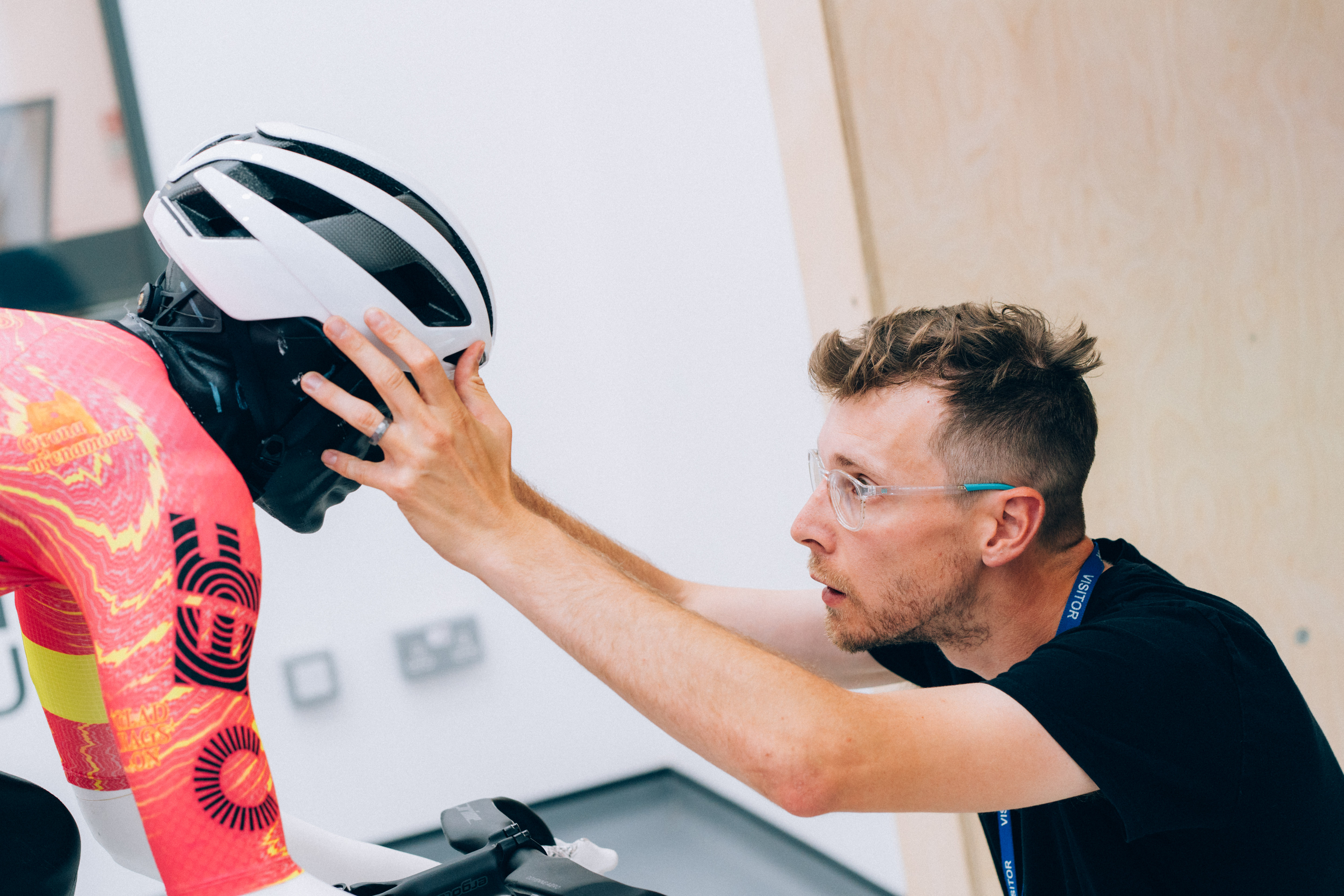

Confidence
Our confidence interval, otherwise known as error margin, is 0.0009 M² CdA, which equates to 0.74 watts at 40km/h, or 1.45 watts at 50km/h.
This was calculated by testing our two baseline helmets, the Abus Powerdome and the Trek Ballista MIPS (the reason for choosing these is explained below), multiple times throughout the day.
Specifically, we tested them both at the start of the day with an immediate repeat, then an 'off-on repeat' in which we removed the helmet and refitted it to account for the human error that could occur in fitting a helmet (different straps position, different helmet position, etc).
We tested them both again in the middle of the day, and again at the end. We then looked at the average CdA from each of those tests and calculated the maximum difference between two identical setups.
The purpose of finding this confidence margin is to account for what errors can creep into our testing protocol. By seeing a 0.0009 M² difference despite the helmet being the same, we must assume that all other helmets are subject to an equal error, even if the reality is that most will fall somewhere within.
Since we have multiple results for those two helmets, I have averaged them in the results below.
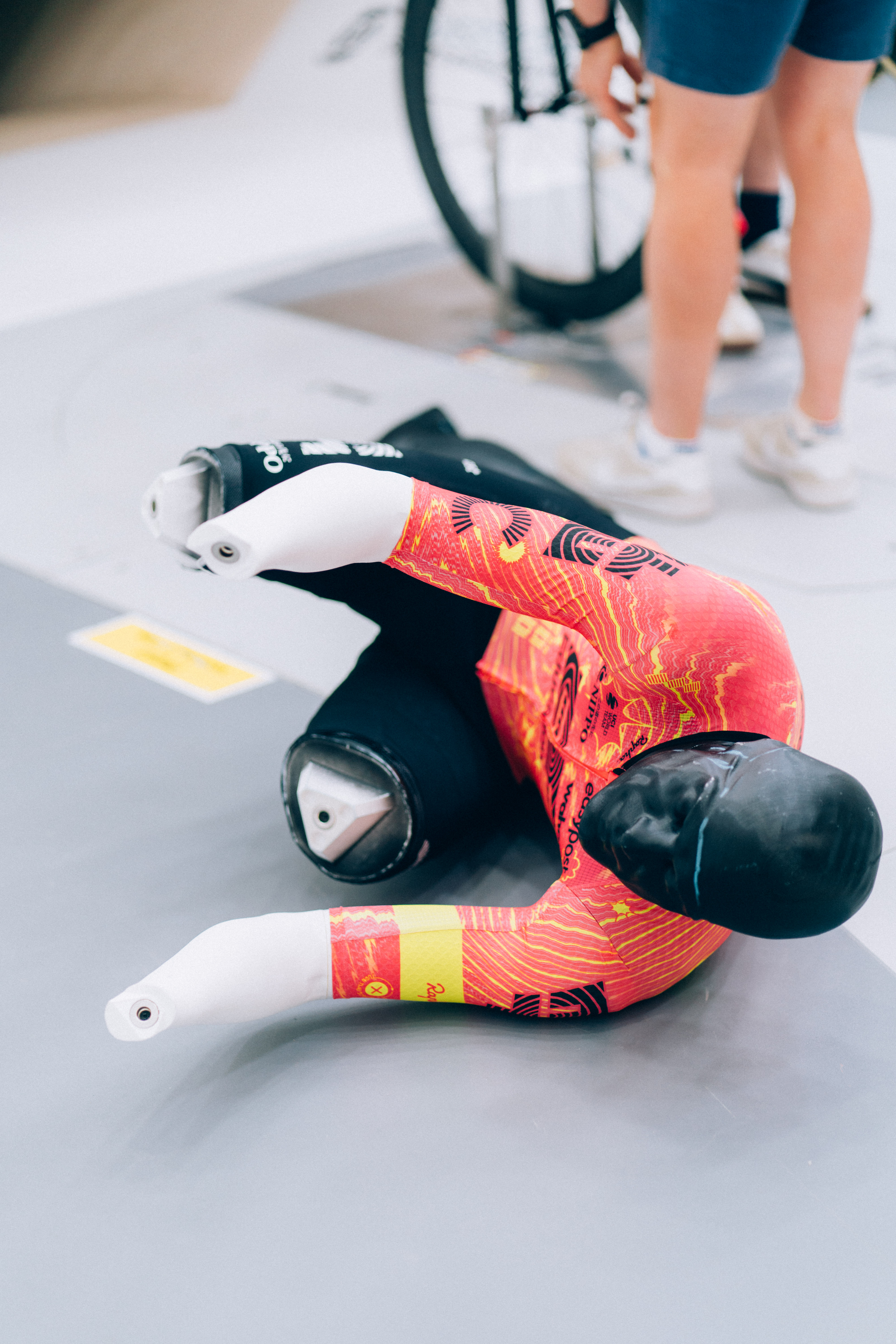
Caveats
The results of our testing are representative of just that: our testing. We understand that helmet brands might see different results based on different tests or different protocols. We don't intend to claim that our results are the final word in helmet aero testing, but rather an additional stream of independent, unbiased testing and information for Cyclingnews readers.
We also understand that other factors come into play when buying an aero road bike helmet. For example, how comfortable it is, its ventilation properties, its weight, its style, how well it plays with glasses, and of course, how well it will protect you in the event of a crash. They should all be considered when deciding which to buy.
It's important to remember that the aerodynamic performance of a helmet can differ from person to person depending on how it interacts with the body. In this case, using a mannequin with its hands in the drops means the airflow coming off the helmet will interact with the body a little more than our previous test, which used our tech writer Tom in an upright position.
The mannequin's head was also slightly angled off-centre, facing to the right. This was the same for all helmets, so the comparisons remain fair.
This more aero position, which is suited to shorter, faster rides, favours the more aggressive aero helmets more, and that is reflected in the results. Our head angle here puts the helmets into a position of approximately 32° (where 0° is horizontal). Very few brands outline exactly what head angle they design for, but Lazer did explain that their process works towards a helmet angle of 25°.
Reassuringly, despite the bigger margin for error in our prior test, many of the helmets that performed well there have continued to do well this time around.
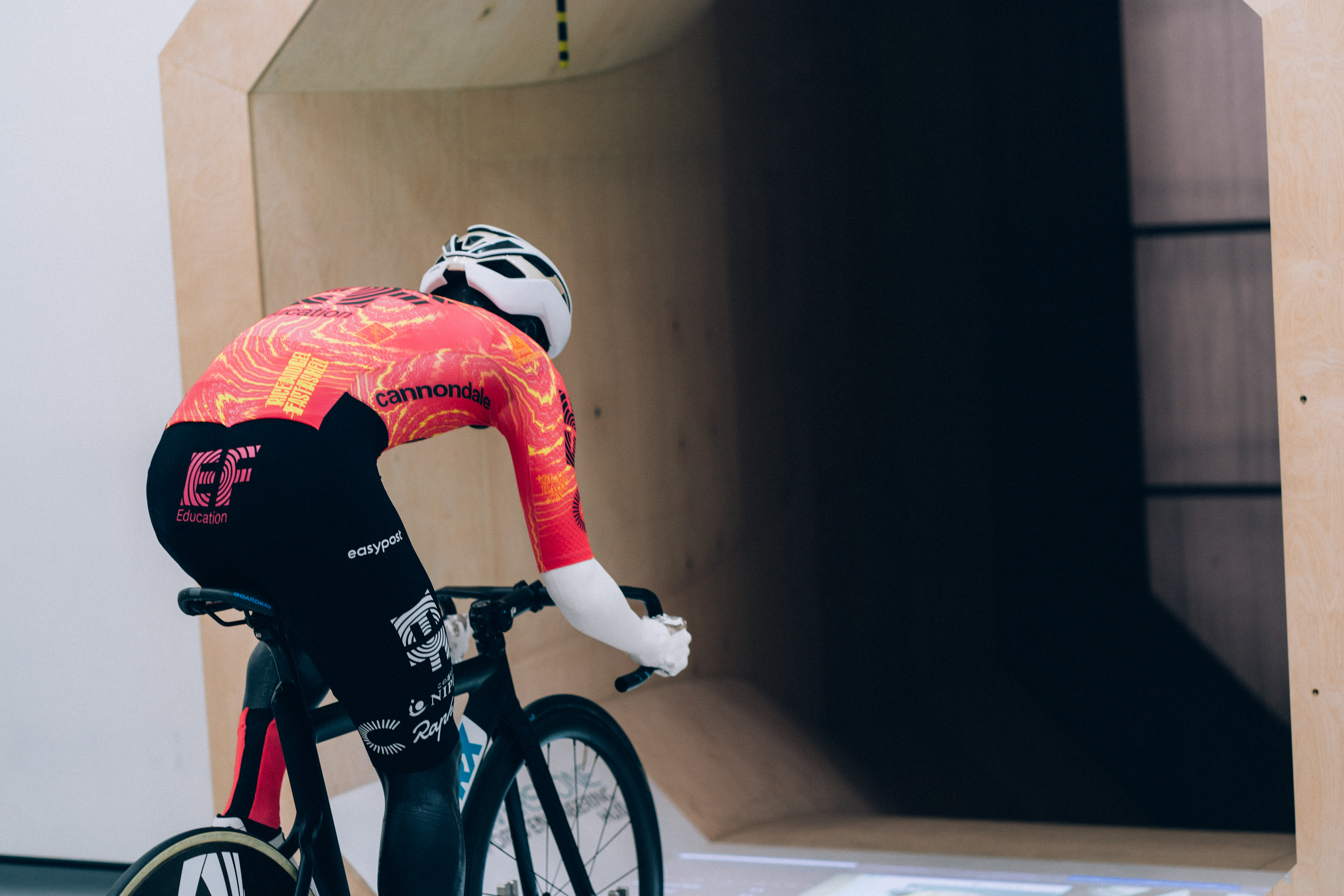
Sponsor declaration
Before we get stuck into the results, a brief note to say that this story includes paid product placement from Rapha, hence the use of the EF Pro Cycling skinsuit - Hugh Carthy's, to be specific.
I personally approved Rapha's inclusion in this test having concluded they would offer no unfair bias, nor the appearance of bias, to any of the helmets on test.
I wanted to dress the mannequin in a skinsuit anyway, so it made no difference to the protocol we used. A skinsuit is more reflective of a real rider (hopefully none of our readers are planning to ride naked). And it helps to smooth out any knocks or dings the mannequin might have had.
As ever, we paid the same rate that any member of the public would pay for the use of the wind tunnel and borrowed everything used in this test. Without our subscribers, these tests cannot happen, and so a fair and impartial protocol is essential to their success and the ability to continue doing them.
The results
As ever, I'll share all the data I have, because I know there are a few of you who like to see it, unpack it, and understand how we landed on the results we did.
This data will include the four raw CdA figures for each helmet, the weighted CdA averages, and the aerodynamic drag, in watts, that our test mannequin is being subjected to.
We use weighted CdA, calculated per the research set out by Nathan Barry in his 2018 paper, A New Method for Analysing the Effect of Environmental Wind on Real World Aerodynamic Performance in Cycling, because it's well documented that when cycling, you experiencee low yaw angles more often than high yaw angles, and as such it ensures the data is more real-world applicable.
To make all that data simple and comparable, I chose a baseline helmet that we'll compare everything against.
This is the Abus Powerdome; a relatively affordable, nominally all-round helmet with little in the way of aero features. We selected it beforehand as a good example of the helmet you might be upgrading from.
Where you see 'Watts Saved', this is what we're comparing against.
And we'll take it to all future tests to provide a consistent baseline comparison when we test next year's helmets.
In the 50km/h test, we opted to use the Trek Ballista as the baseline, simply because it was the second helmet we tested on the day and thus became our second baseline for establishing our error margin, and thus we had multiple tests confirming its CdA.
The results table
If you just want the numbers, you'll find them here. The data is graphed out below to visualise the differences nicely, but the specific aero drag, comparisons, weights and prices are outlined here, ordered from fastest to slowest.
Helmet | Aerodynamic drag 40km/h | Watts saved vs baseline | Weight (g) | Price GBP | Price USA | Type |
|---|---|---|---|---|---|---|
Van Rysel XCR TT (With visor) | 237.14w | 11.24w | 480g | £249.99 | N/A | Time Trial |
Giant Rivet (With visor) | 237.18w | 11.21w | 500g | £269.99 | $350.00 | Time Trial |
Van Rysel XCR TT (Without visor) | 238.76w | 9.62w | 440g | £249.99 | N/A | Time Trial |
Giro Aerohead (With visor) | 239.60w | 8.78w | 520g | £289.99 | $349.95 | Time Trial |
Giant Rivet (Without visor) | 239.66w | 8.72w | 420g | £269.99 | $350.00 | Time Trial |
Oakley Velo Mach | 240.28w | 8.11w | 300g | £255.00 | $310.00 | Aero |
Giro Aerohead (Without visor) | 240.43w | 7.95w | 450g | £289.99 | $349.95 | Time Trial |
Trek Ballista | 240.85w | 7.53w | 270g | £199.99 | $329.99 | Aero |
Canyon Stingr | 241.19w | 7.20w | 300g | £249.95 | Row 8 - Cell 5 | Aero |
Specialized S-Works Evade 3 | 241.39w | 6.99w | 300g | £250.00 | $299.99 | Aero |
Smith Ignite | 241.51w | 6.87w | 310g | £239.99 | $250.00 | Aero |
Kask Utopia Y | 242.01w | 6.37w | 280g | £245.00 | $300.00 | Aero |
Kask Nirvana | 242.29w | 6.09w | 305g | £320.00 | $400.00 | Aero |
Van Rysel RCR-F | 242.30w | 6.08w | 345g | £130.00 | N/A | Aero |
POC Procen Air (Without Visor) | 242.40w | 5.98w | 330g | £360.00 | $449.95 | Aero |
Sweet Protection Tucker 2Vi | 242.41w | 5.97w | 440g | £270.00 | N/A | Aero |
Scott Cadence | 242.64w | 5.75w | 325g | £229.99 | $229.99 | Aero |
Rudy Project Nytron Pro | 242.92w | 5.46w | 365g | £210.00 | N/A | Aero |
POC Procen Air (With Visor) | 242.93w | 5.45w | 355g | £360.00 | $449.95 | Aero |
Met Manta L (Bad Straps) | 243.50w | 4.88w | 270g | £225.00 | $299.00 | Aero |
Specialized Propero 4 | 243.50w | 4.88w | 320g | £165.00 | $229.99 | Semi-aero |
Met Manta (Size L) (Good Straps) | 243.51w | 4.87w | 270g | £225.00 | $299.00 | Aero |
Abus Gamechanger 2.0 | 243.80w | 4.58w | 270g | £225.00 | $299.99 | Aero |
Sweet Protection Falconer (without aero covers) | 243.81w | 4.57w | 330g | £269.00 | $299.95 | Aero |
Sweet Protection Falconer (with aero covers) | 243.93w | 4.45w | 360g | £269.00 | $299.95 | Aero |
Lazer Vento Kineticore | 244.24w | 4.14w | 305g | £249.99 | $319.99 | Aero |
Fizik Kudo Aero | 244.30w | 4.08w | 310g | £269.99 | $319.99 | Aero |
Met Manta (size M) | 244.66w | 3.72w | 250g | £225.00 | $299.00 | Aero |
Kask Protone Icon | 244.84w | 3.54w | 275g | £245.00 | $300.00 | Semi-aero |
HJC Ibex 3 | 244.90w | 3.48w | 290g | £249.99 | $224.99 | Vented |
HJC Furion 3 | 245.12w | 3.26w | 270g | £199.99 | N/A | Aero |
Rudy Project Nytron | 245.20w | 3.18w | 305g | £189.99 | $356.99 | Aero |
Abus Stormchaser | 245.78w | 2.60w | 230g | £130.00 | $219.99 | Vented |
Giro Aries | 245.99w | 2.39w | 305g | £289.99 | $349.95 | Vented |
Uvex Surge (With aero cover) | 246.16w | 2.22w | 390g | £219.99 | N/A | Aero |
Kask Elemento | 246.45w | 1.93w | 310g | £335.00 | $400.00 | Semi-aero |
Specialized Search | 246.81w | 1.57w | 330g | £125.00 | $189.99 | Vented |
Giant Rev | 246.89w | 1.49w | 360g | £189.99 | $287.00 | Vented |
Van Rysel RCR | 247.07w | 1.31w | 330g | £79.99 | N/A | Vented |
POC Cytal | 247.22w | 1.17w | 305g | £290.00 | $349.95 | Vented |
Abus Airbreaker | 247.26w | 1.12w | 225g | £225.00 | $249.95 | Vented |
Giro Eclipse | 247.28w | 1.10w | 320g | £234.99 | $299.95 | Semi-aero |
Specialized S-Works Prevail 3 | 247.28w | 1.10w | 305g | £250.00 | $299.99 | Vented |
Bell XR Spherical | 247.31w | 1.07w | 325g | £210.00 | $225.00 | Semi-aero |
Bell Falcon XR | 247.40w | 0.98w | 370g | £119.99 | $149.95 | Vented |
Sunrimoon Sariel | 247.62w | 0.77w | 285g | N/A | $65.00 | Vented |
Trek Velocis | 247.87w | 0.51w | 260g | £199.99 | $329.99 | Vented |
Uvex Surge (Without aero cover) | 247.97w | 0.41w | 310g | £219.99 | N/A | Vented |
Trek Circuit Wavecel | 248.36w | 0.02w | 370g | £150.00 | $174.99 | Vented |
Abus Powerdome | 248.38w | 0.00w | 230g | £130.00 | $159.99 | Vented |
POC Cytal Carbon | 248.69w | -0.31w | 285g | £360.00 | $450.00 | Vented |
Sunrimoon Alien | 248.70w | -0.32w | 265g | N/A | $85.00 | Vented |
Smith Network | 248.77w | -0.39w | 245g | £149.99 | $170.00 | Vented |
Smith Trace | 248.96w | -0.58w | 330g | £219.99 | $250.00 | Vented |
Lazer Z1 Kineticore | 249.12w | -0.74w | 270g | £229.99 | $299.99 | Vented |
The data above is after we've run our equations and comparisons. Below, I'll show the raw CdA as it came out of the wind tunnel.
Given we're looking at over 50 tests, I've chosen not to add labels to that, because it becomes a bit of a mess. If you want more detail, you can hover over each line, and a pop-up will show the helmet in question, but my main reason for including it is to show the consistency of the results. The lines don't cross over very much, meaning if a helmet is faster at 0°, it's likely faster at 5°, 10° and 15° too, with a few exceptions, of course.
Of course, this is also partly down to the fact that we're looking for small differences between helmets by measuring a full rider on a bike that, importantly, remains unchanged between tests.
Regardless, to see what all those lines mean in terms of comparative aero performance, see the graph below.
The graph above shows the aerodynamic drag (in watts) for each helmet in purple, with the error margin (+/-0.74w) added in green, to show the best-case and worst-case options for each of the helmets we tested.
Take the Specialized S-Works Evade III as an example. This sits in 10th place overall with a drag of 241.39 watts, plus or minus 0.74w. That gives it a best-case of 240.45w and a worst case of 242.14w (rounded to two decimal places).
Its best-case scenario is faster than the worst-case for the Oakley Velo Mach, the fastest non-TT helmet on test, and so the Evade III could lay claim to top spot (time trial helmets aside). Concurrently, however, its worst-case scenario is slower than the Scott Cadence's best-case, and as such, it could be as low as 17th.
A similar story can be told for all helmets, with almost all results sitting within a few tenths of a watt of the next result, but when you look at the table as a whole, you can see clearly that some helmets are faster than others. For example, we can confidently conclude that the Evade III is at least 4.38w faster than the Abus Airbreaker, which sits down in 41st.
You can use the graph above to make similar comparisons, but for simplicity, given our error margin is the same for all helmets, from here onwards, I will report the data without it.
In the above graph, I have compared each helmet to the Abus Powerdome, for reasons set out earlier.
This gives a clear picture of the number of watts you can save at 40km/h if you were to upgrade from the Powerdome to something else. Naturally, some of them are slower too.
Perhaps unsurprisingly, time trial helmets are clustered at the top of the table, while highly vented helmets such as the Lazer Z1 and the POC Cytal occupy the bottom section of the table.
The middle, however, is a fairly eclectic mix of vented helmets, semi-aero helmets, and aero helmets.
As we'll see below, the different helmet types do cluster as we'd expect them to, with time trial helmets undoubtedly the fastest, aero helmets second, semi-aero helmets third, and vented helmets the slowest of all.
Aerodynamic performance by helmet type
As we can see, there's a clear trend from vented helmets being the slowest (some of which slower than our baseline), semi-aero helmets being slightly faster, aero helmets being faster again, and TT helmets being the fastest. However, it's important to note that there's a significant amount of crossover between each category, with the fastest vented helmet (the HJC Ibex) still outperforming the slowest 'aero' helmet (the Uvex Surge with the aero cover attached).
And to really labour the point the graph above shows the grouped averages.
The average aero helmet saves on average 4.5 watts more than the average vented helmet, with time trial helmets saving 4.26 watts more on top.
Aero vs weight and price
It's often thought that aero helmets, being bigger, longer, and with fewer vents, are heavier than their vented counterparts, but how much truth is there in that?
Well, in addition to putting each helmet through a round of wind tunnel tests, we also weighed them, and the comparative results are graphed below.
The trend lines show that within each category there's no real correlation at all. Looking at the amalgamated data as a whole, time trial helmets are generally faster and weigh more, but the correlation between weight and wattage saved overall is loose.
To muddle the waters, airy helmets aren't necessarily lighter. Just looking at Specialized's two flagship S-Works helmets, this becomes clear. The S-Works Evade III aero helmet weighs 300g, while the extremely airy S-Works Prevail is heavier at 305g.
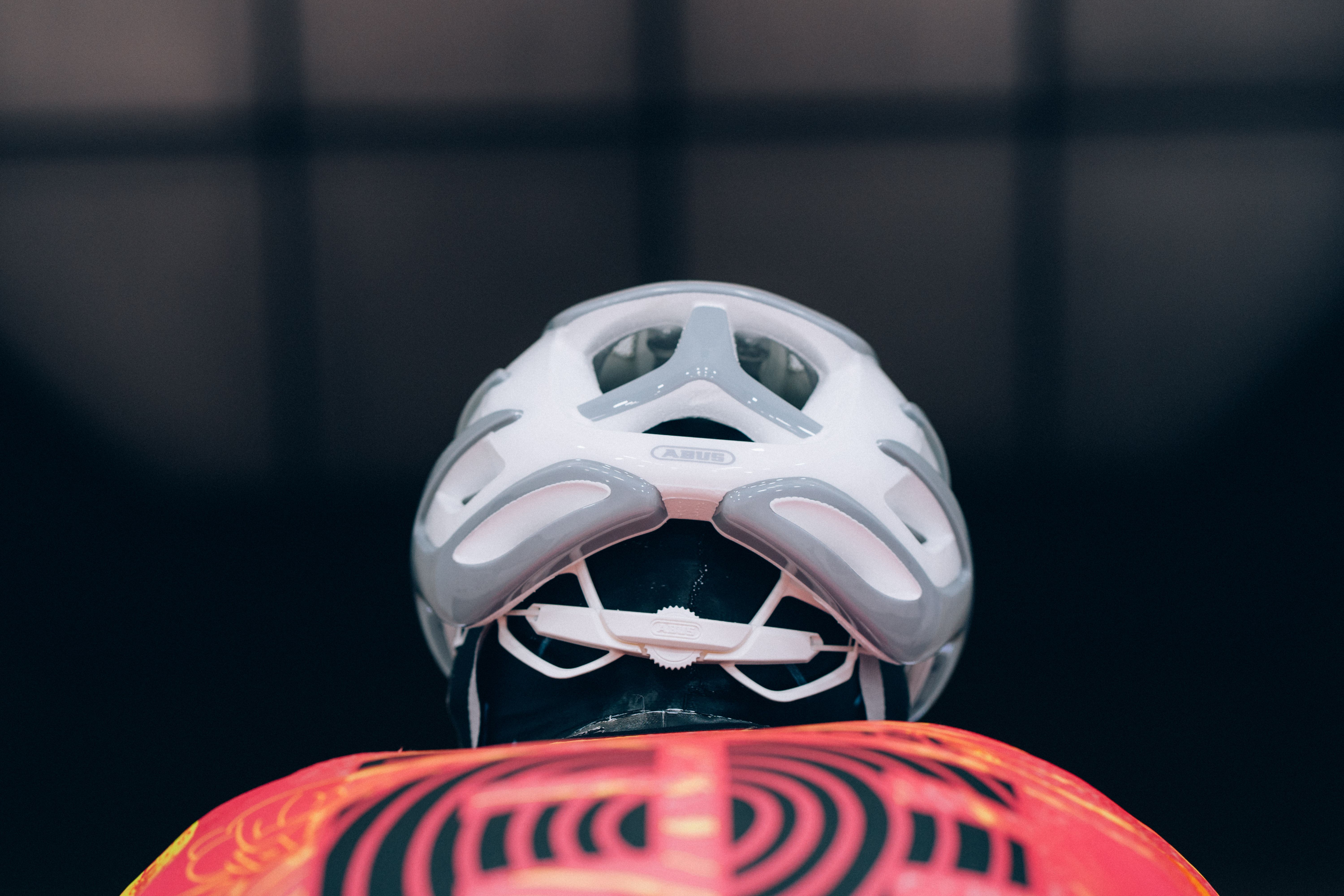
So, with time trial helmets aside, an aero helmet isn't by default a heavier one, but what about price? Does paying more generally mean you'll get a more aero helmet?
Once again, within each category and in general it's clear that there's no correlation at all. This is particularly clear with the POC Cytal Carbon, which is concurrently the most expensive road helmet on test and one of the slowest (it's super well ventilated though, so I don't think POC will mind), and the Van Rysel RCR-F, which is impressively cheap and fast.
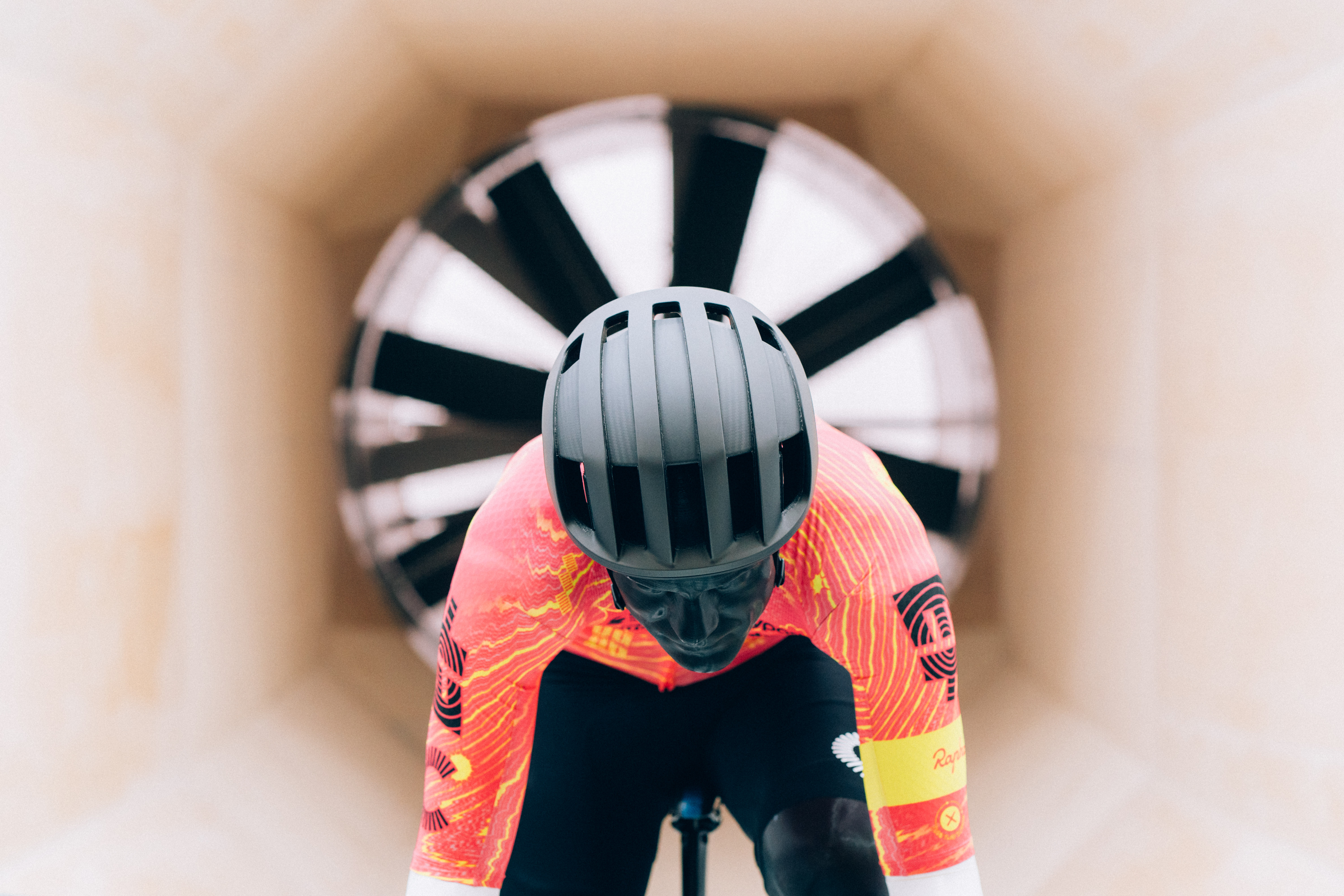
The 50km/h test
As promised, the fastest 10 road helmets were put through a second round of tests at the end of the day at a higher speed, to mimic more of a pro breakaway pace, or that of a Cat 1 / Cat 2 amateur peloton.
This was to try and understand whether any of the helmets performed differently at the higher speed, and to give our readers more context around the performance of helmets at WorldTour level speeds.
This test compares against the Trek Ballista as the baseline, and shows that switching to the Oakley Velo Mach would net you a saving of 1.45 watts. With our error margin accounted for, that's a maximum saving of 2.9 watts, but could equally mean the Ballista is actually the faster of the two.
The Ballista continued to be a good performer, though, because seven of the ten helmets would actually result in a slower performance.
Here we've graphed out the weighted CdA of each helmet in both tests.
It might seem odd that the CdA is lower at the higher speed, but remember we're looking at the CdA for a whole rider, bike and helmet, and the wheels on our test bike will sail more at the higher speed, bringing the CdA down.
What's important here, though, is the order in which the helmets would rank from fastest to slowest.
On the left, ordered from fastest to slowest at 40km/h, we can see that the Velo Mach is the winner, followed by the Giro Aerohead (no visor) and the Trek Ballista. That trend repeats at the higher speed, but the performance of the more rounded Canyon Stingr, which tested fourth-best at 40km/h, drops off to become the slowest on test at this speed. Bear in mind this is a size medium, but as we saw with the Met Manta comparison above, smaller isn't always faster.
The POC Procen Air flipped the other way. The longer-tail, faux-TT helmet was a perhaps-surprising 10th place at 40km/h, but it bumped up to 4th place at the higher speed. I raised this with our contact at POC, who explained they were slightly surprised at the result at 40km/h (as were we, given it won our previous test with a rider), but that POC's engineers use multiple head positions and speeds, perhaps explaining why it jumped up the rankings at the higher speed.
Detailed results, ordered fastest to slowest
Here we've run through each helmet with the full detailed results, including the helmet type, price, weight, aero drag (at both speeds where tested), the weighted CdA, and the raw CdA figure at each yaw angle.
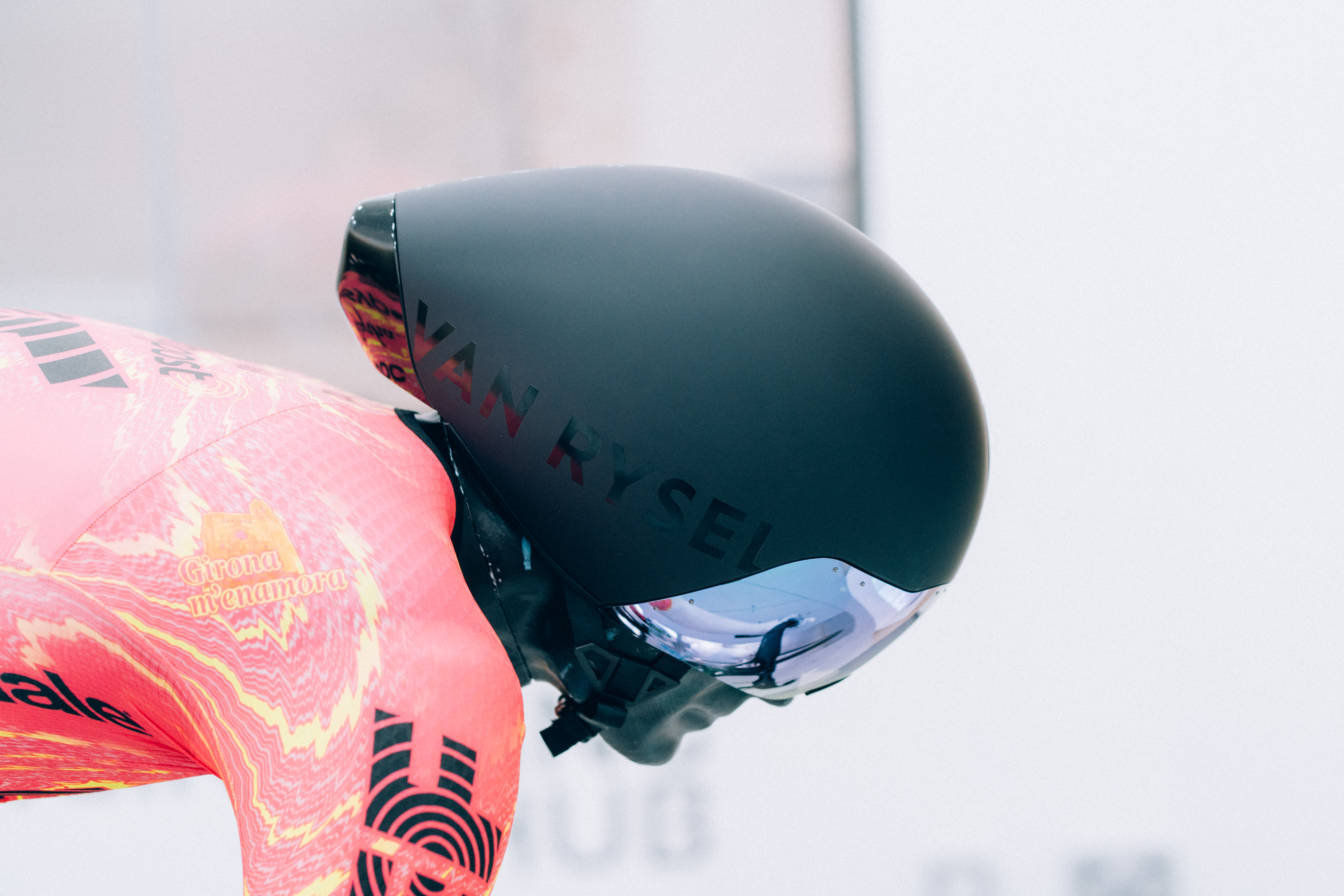
Type: Time Trial
Price: £249.99 / N/A
Weight: 480g
Aero drag at 40km/h: 237.14w
Watts saved vs baseline: 11.24w
CdA 0°: 0.2836 m²
CdA 5°: 0.2777 m²
CdA 10°: 0.3016 m²
CdA 15°: 0.314 m²
Weighted Avg: 0.2881 m²
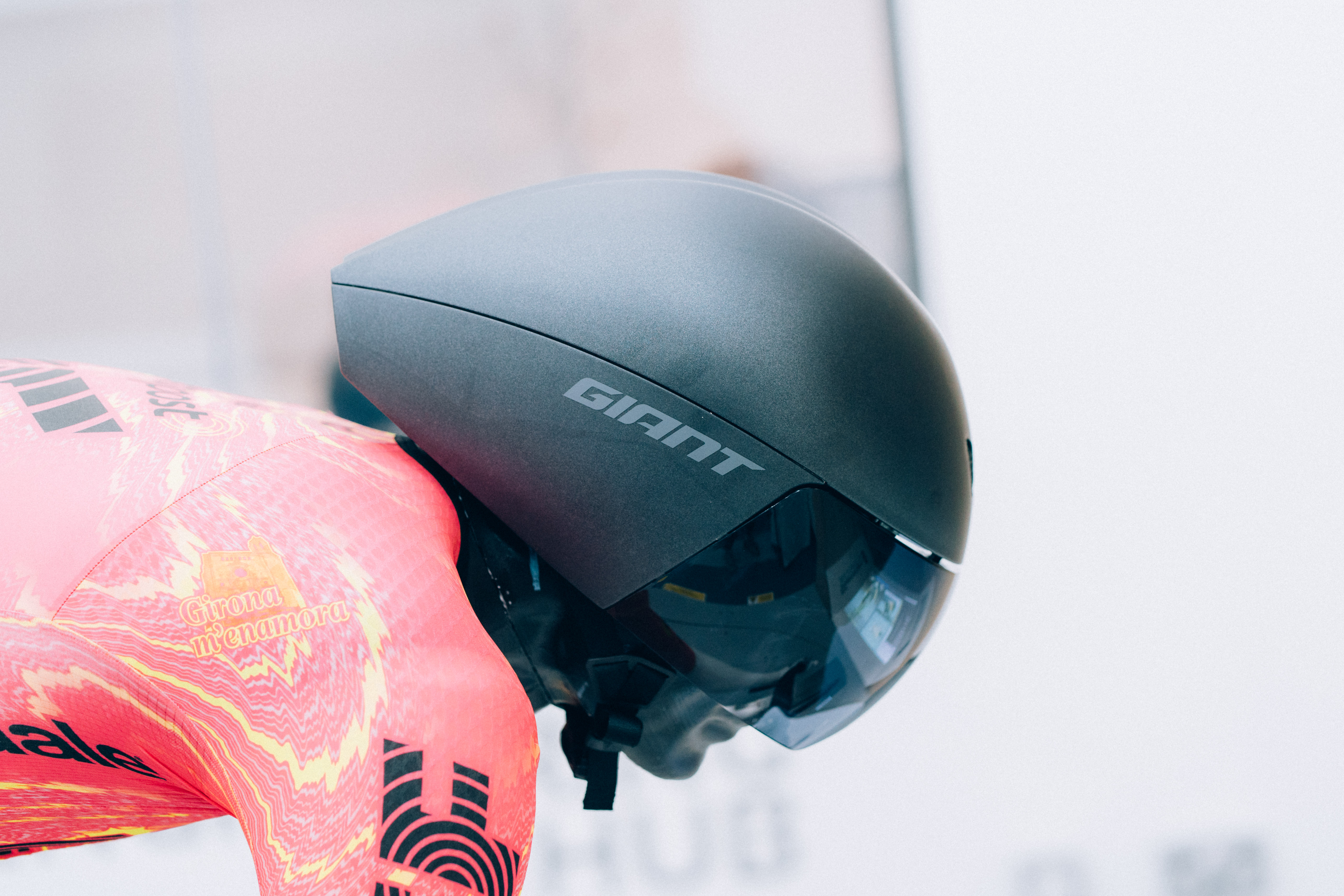
Type: Time Trial
Price: £269.99 / $350.00
Weight: 500g
Aero drag at 40km/h: 237.18w
Watts saved vs baseline: 11.21w
CdA 0°: 0.2836 m²
CdA 5°: 0.2781 m²
CdA 10°: 0.3018 m²
CdA 15°: 0.3126 m²
Weighted Avg: 0.2882 m²
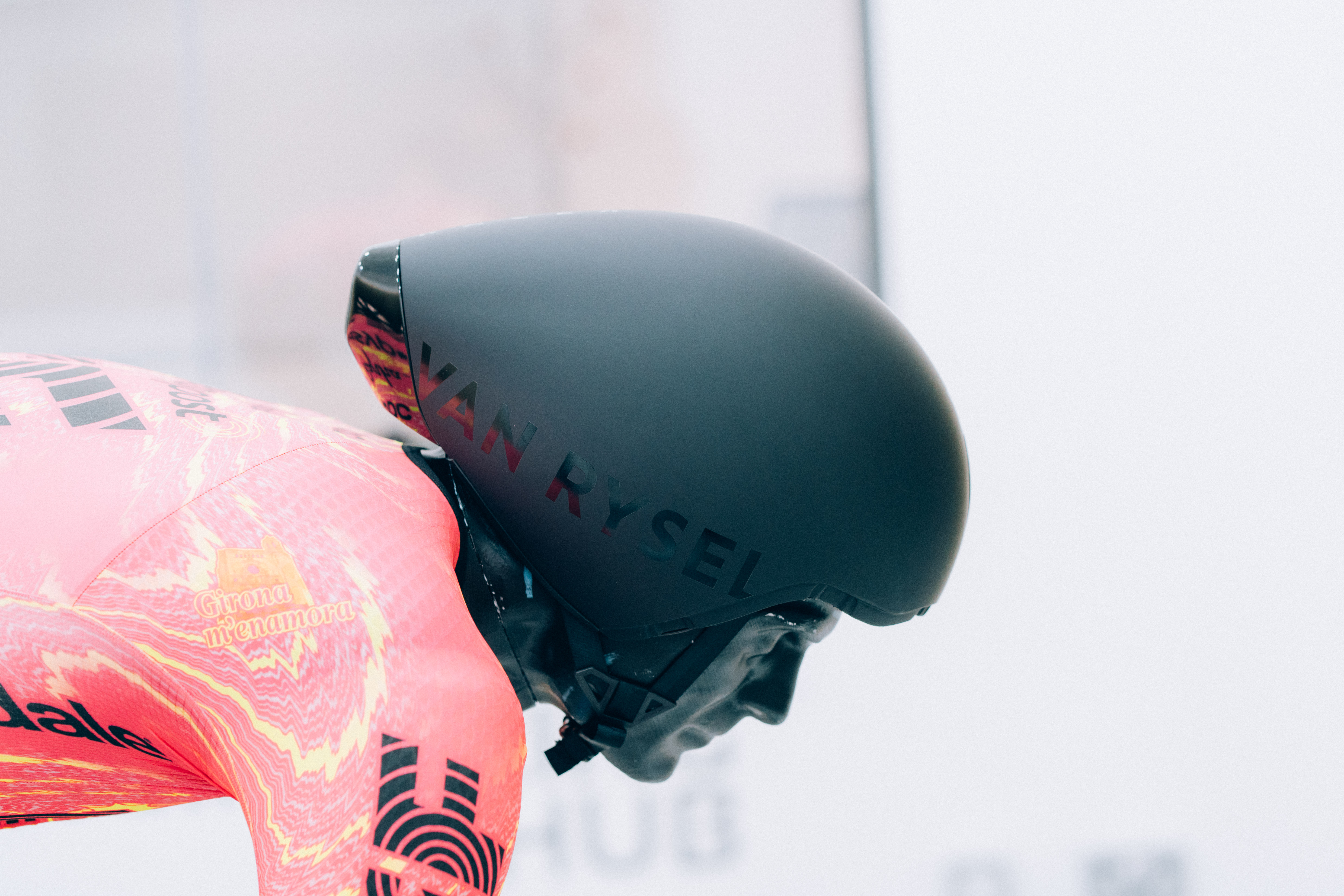
Type: Time Trial
Price: £249.99 / N/A
Weight: 440g
Aero drag at 40km/h: 238.76w
Watts saved vs baseline: 9.62w
CdA 0°: 0.2859 m²
CdA 5°: 0.2795 m²
CdA 10°: 0.3035 m²
CdA 15°: 0.3154 m²
Weighted Avg: 0.2901 m²
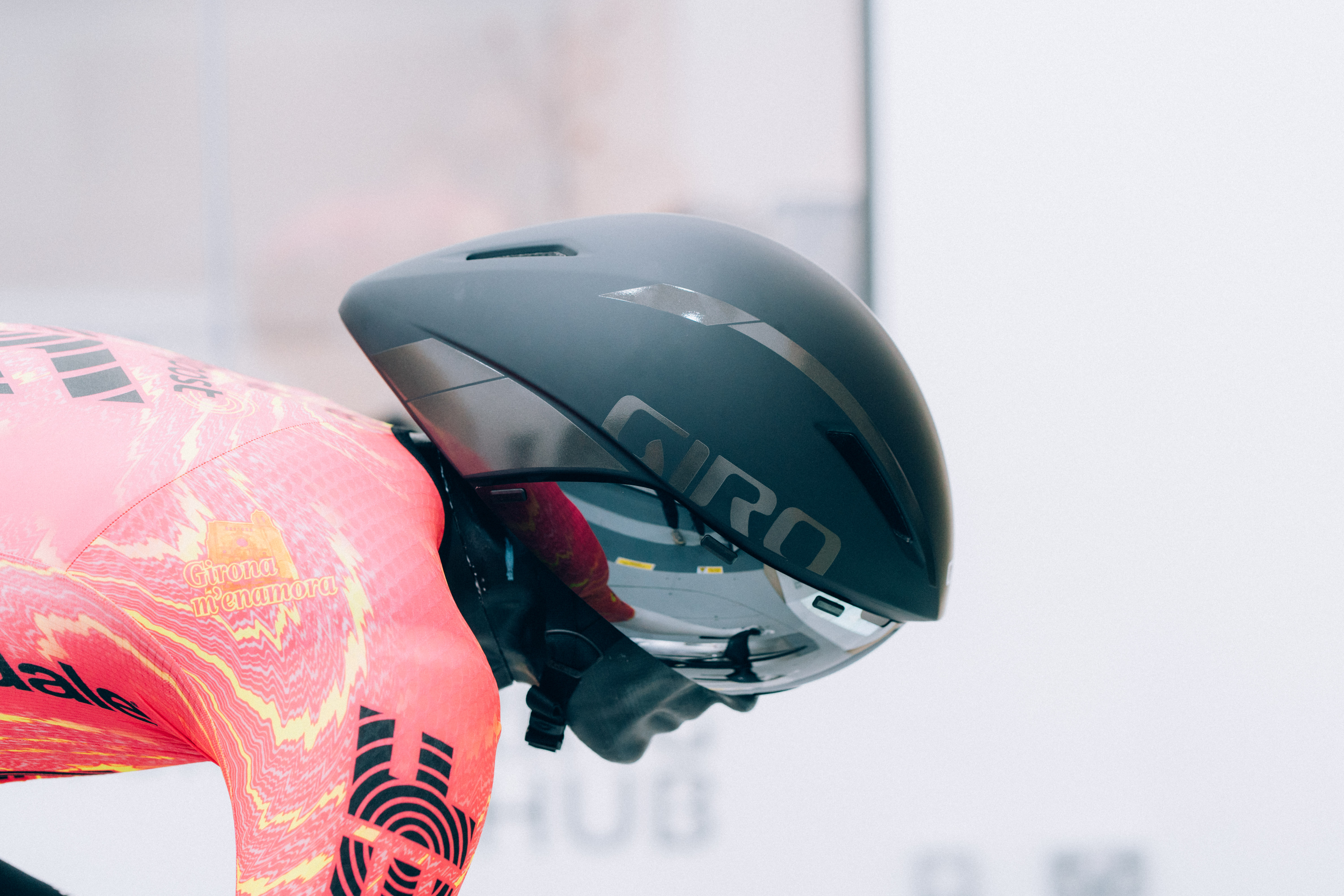
Type: Time Trial
Price: £289.99 / $349.95
Weight: 520g
Aero drag at 40km/h: 239.60w
Watts saved vs baseline: 8.78w
CdA 0°: 0.2865 m²
CdA 5°: 0.2803 m²
CdA 10°: 0.3057 m²
CdA 15°: 0.3163 m²
Weighted Avg: 0.2911 m²
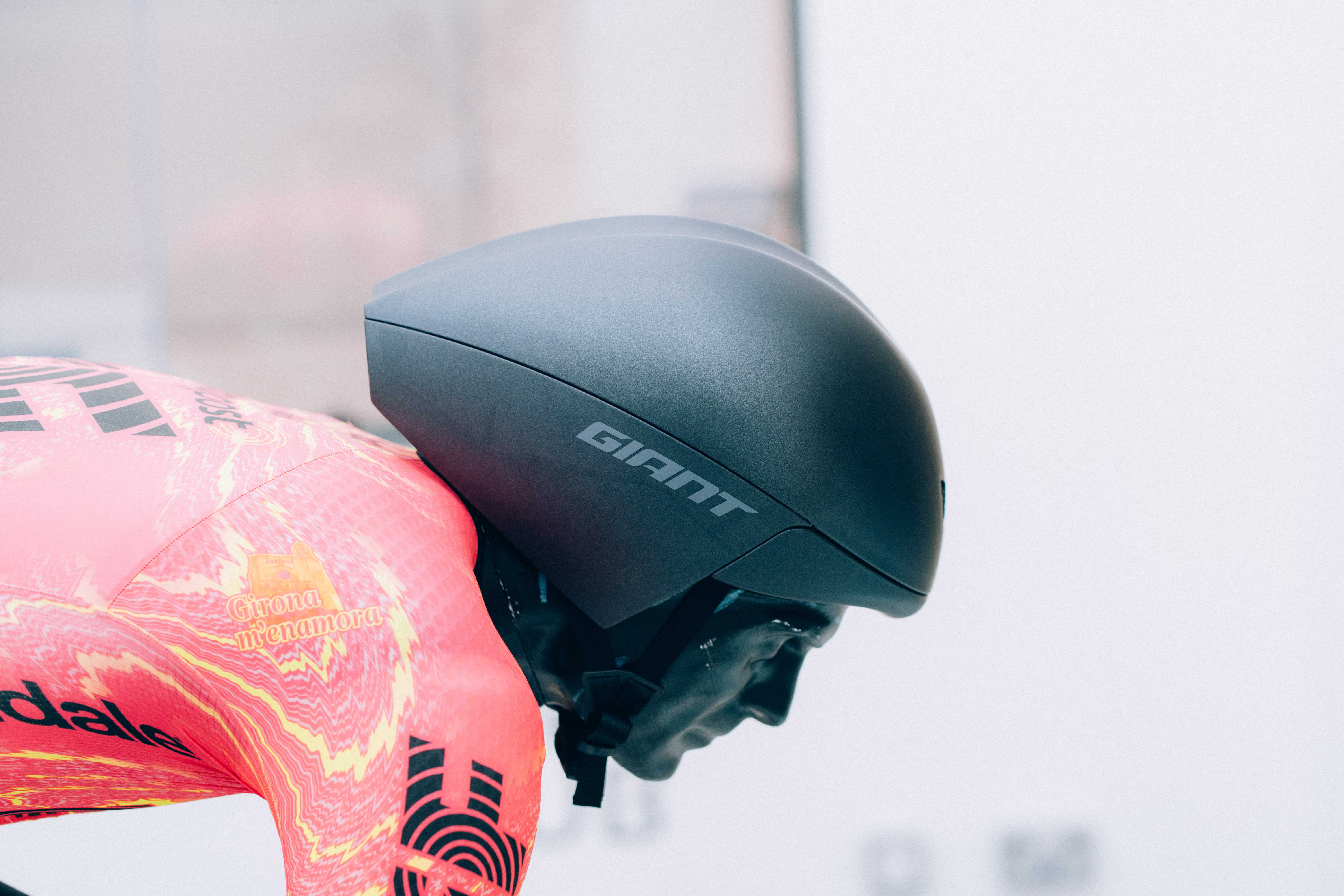
Type: Time Trial
Price: £269.99 / $350.00
Weight: 420g
Aero drag at 40km/h: 239.66w
Watts saved vs baseline: 8.72w
CdA 0°: 0.2878 m²
CdA 5°: 0.2804 m²
CdA 10°: 0.3042 m²
CdA 15°: 0.3146 m²
Weighted Avg: 0.2912 m²
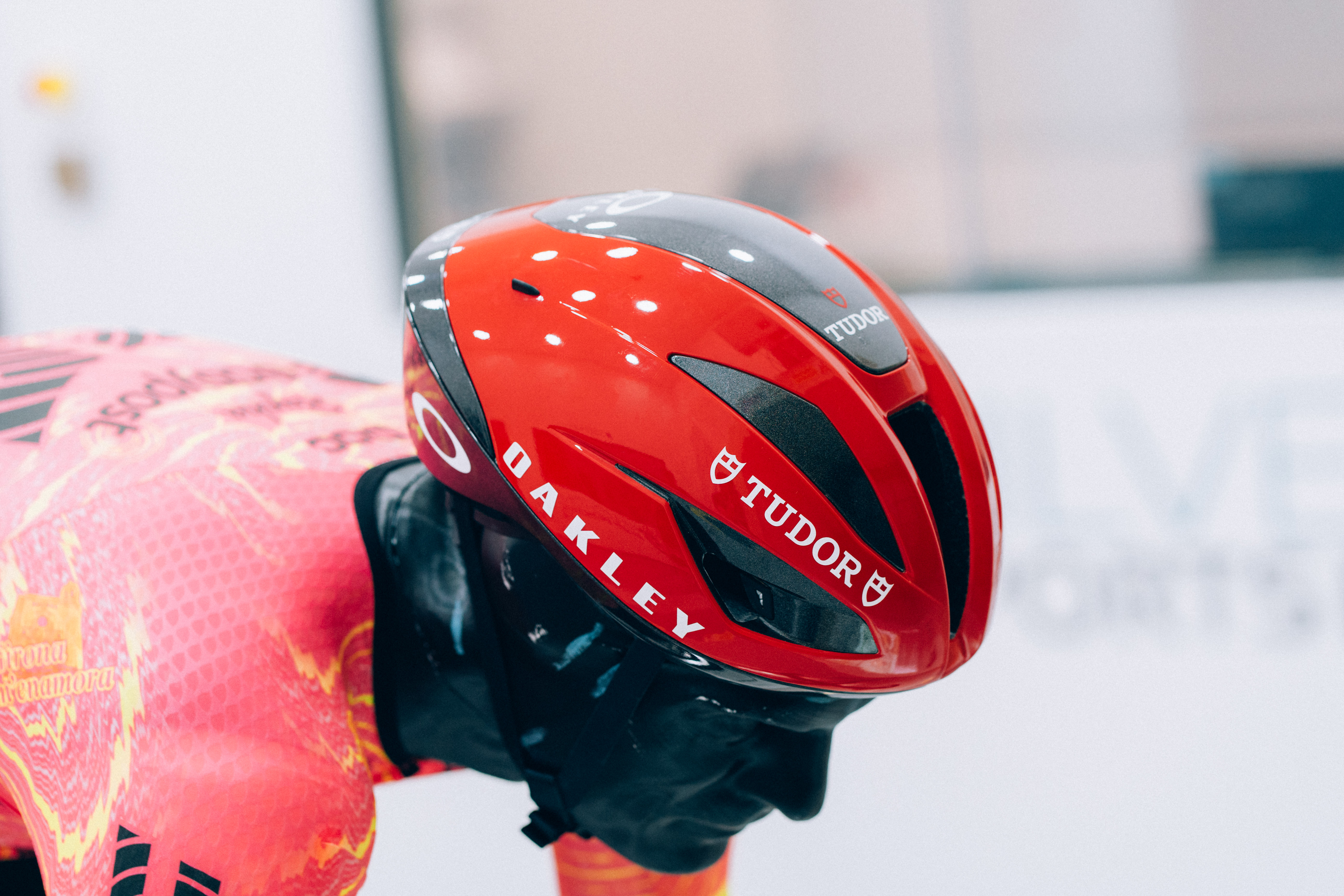
Type: Aero
Price: £255.00 / $310.00
Weight: 300g
Aero drag at 40km/h: 240.28w
Watts saved vs baseline: 8.11w
Aero drag at 50km/h: 451.23w
Watts saved vs baseline: 1.45w
CdA 0°: 0.2882 m²
CdA 5°: 0.2814 m²
CdA 10°: 0.3051 m²
CdA 15°: 0.3156 m²
Weighted Avg: 0.2919 m²
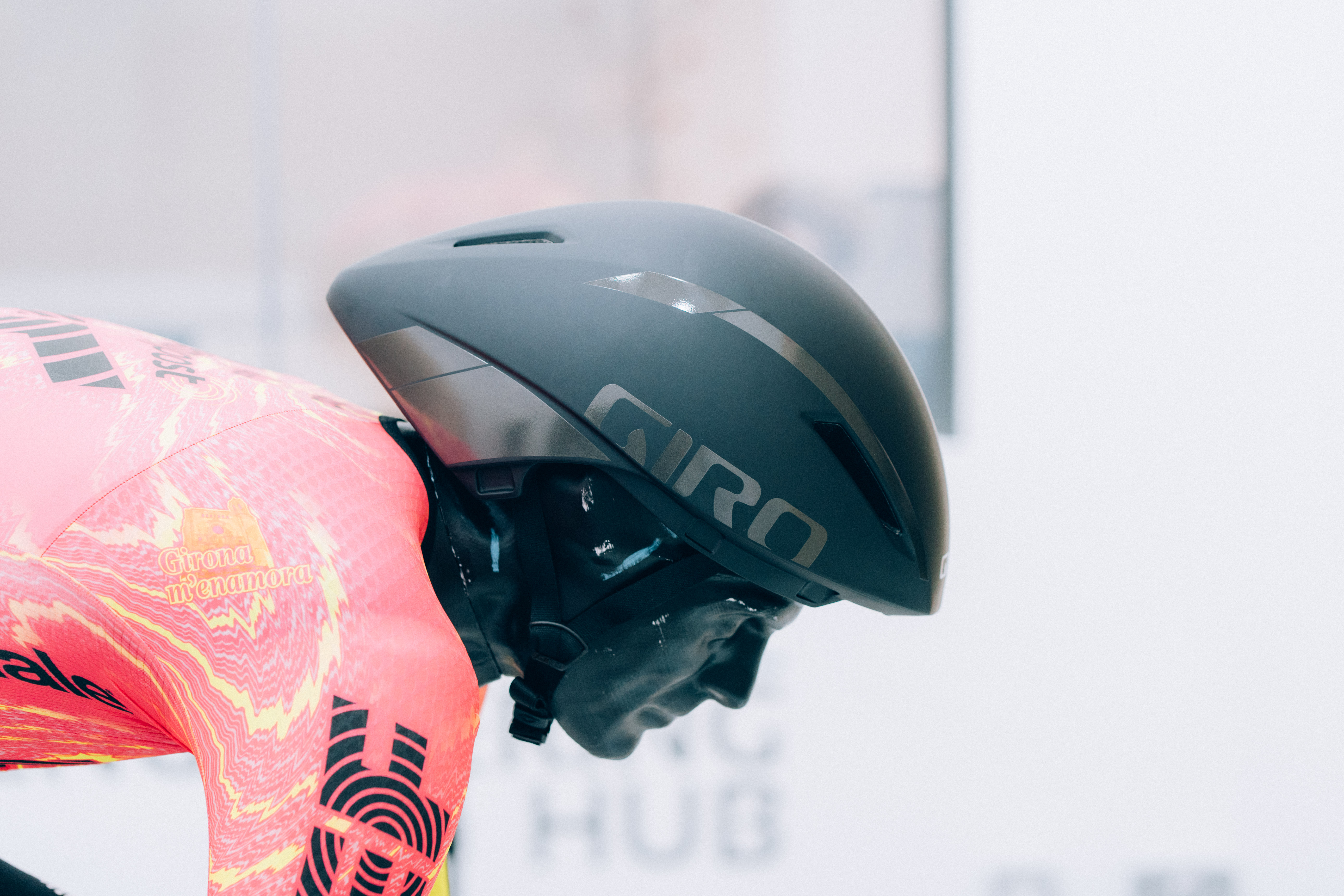
Type: Time Trial
Price: £289.99 / $349.95
Weight: 450g
Aero drag at 40km/h: 240.43w
Watts saved vs baseline: 7.95w
Aero drag at 50km/h: 451.67w
Watts saved vs baseline: 1.00w
CdA 0°: 0.2878 m²
CdA 5°: 0.2814 m²
CdA 10°: 0.3063 m²
CdA 15°: 0.3166 m²
Weighted Avg: 0.2921 m²
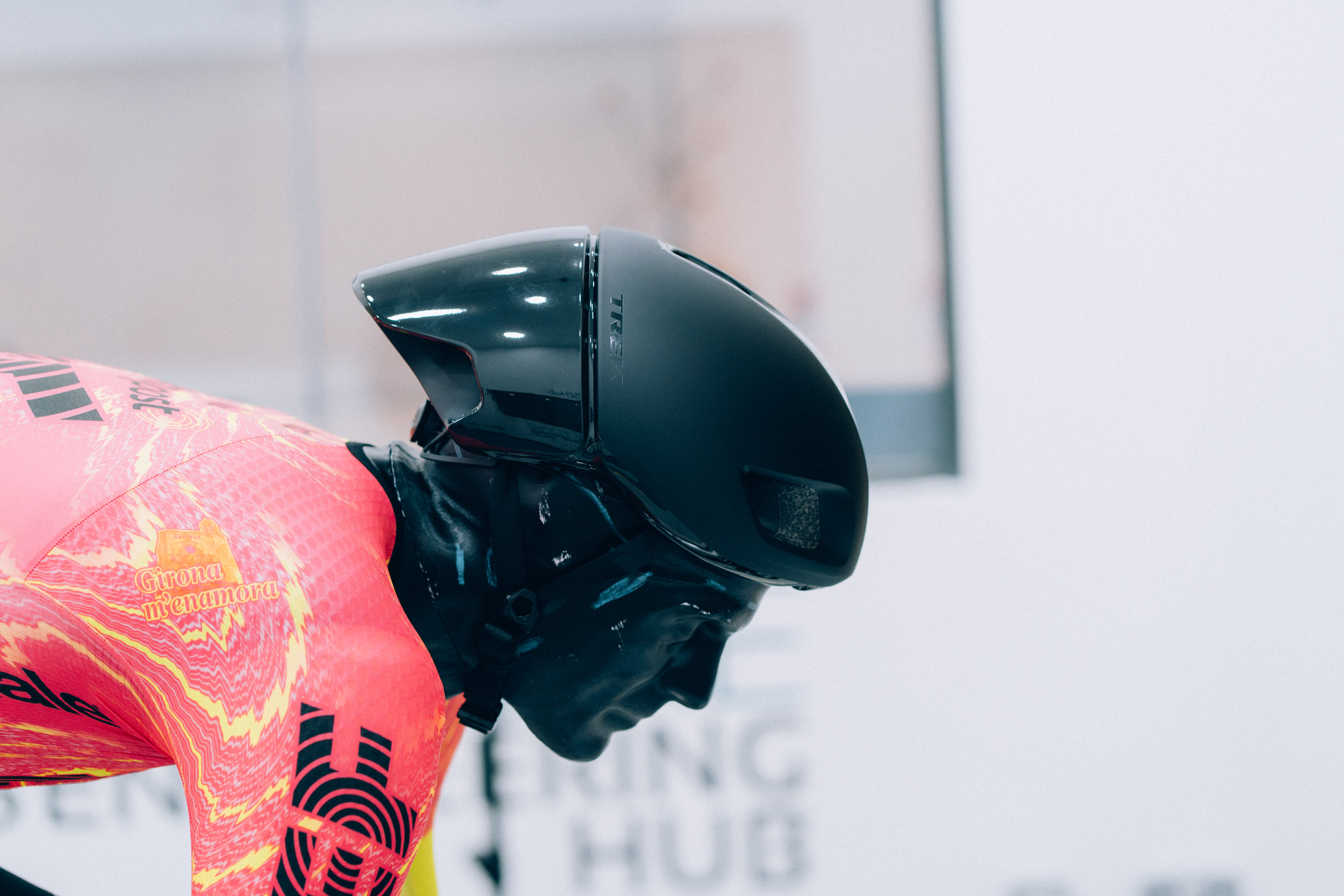
Type: Aero
Price: £199.99 / $329.99
Weight: 270g
Aero drag at 40km/h: 240.85w
Watts saved vs baseline: 7.53w
Aero drag at 50km/h: 452.67w
Watts saved vs baseline: N/.A
CdA 0°: 0.2890 m²
CdA 5°: 0.2811 m²
CdA 10°: 0.3063 m²
CdA 15°: 0.3181 m²
Weighted Avg: 0.2926 m²
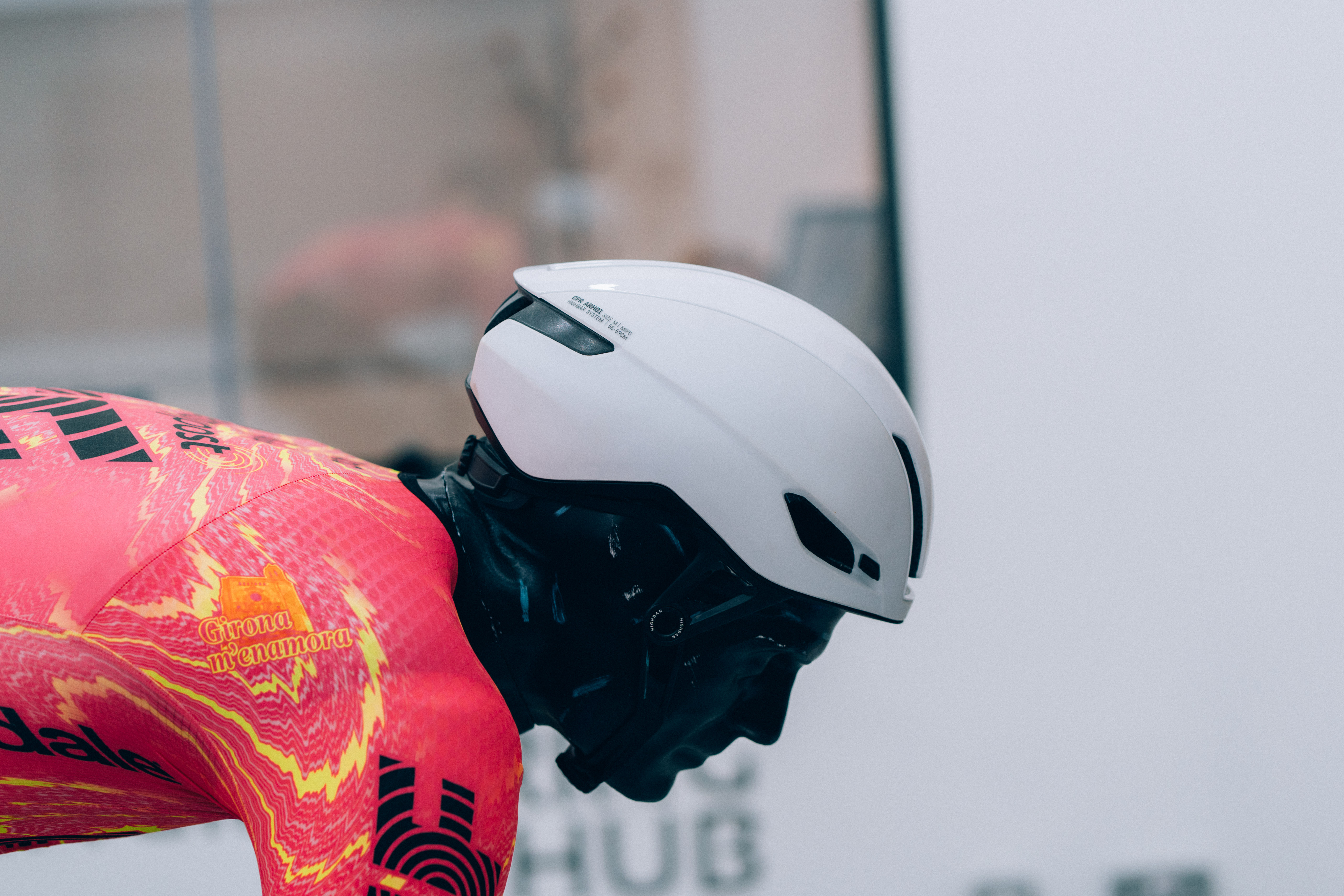
Type: Aero
Price: £249.95 /
Weight: 300g
Aero drag at 40km/h: 241.19w
Watts saved vs baseline: 7.20w
Aero drag at 50km/h: 456.32w
Watts saved vs baseline: -3.65w
CdA 0°: 0.288 m²
CdA 5°: 0.2833 m²
CdA 10°: 0.3071 m²
CdA 15°: 0.3173 m²
Weighted Avg: 0.2930 m²
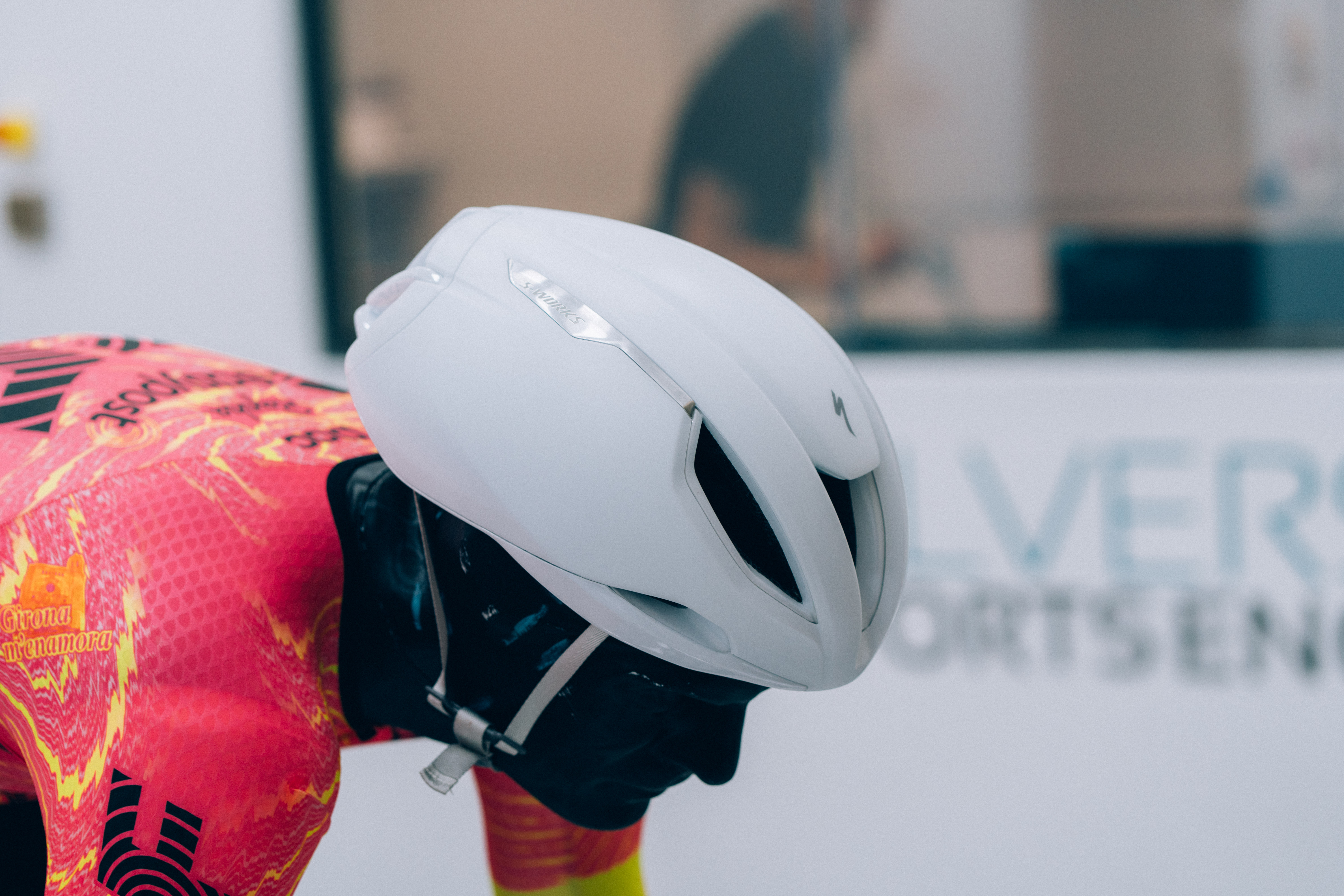
Type: Aero
Price: £250.00 / $299.99
Weight: 300g
Aero drag at 40km/h: 241.39w
Watts saved vs baseline: 6.99w
Aero drag at 50km/h: 455.11w
Watts saved vs baseline: -2.44w
CdA 0°: 0.2897 m²
CdA 5°: 0.2828 m²
CdA 10°: 0.3059 m²
CdA 15°: 0.3175 m²
Weighted Avg: 0.2933 m²
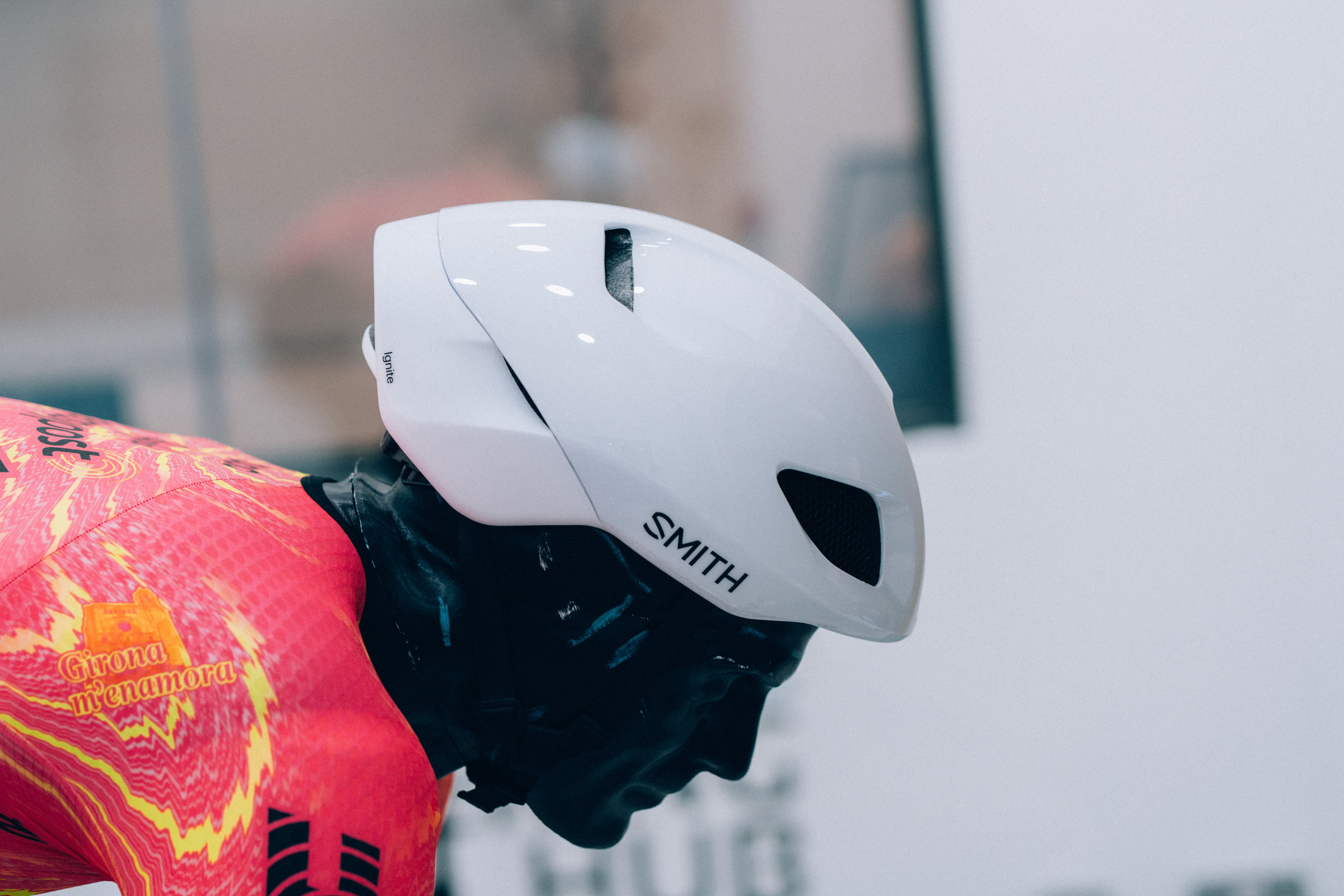
Type: Aero
Price: £239.99 / $250.00
Weight: 310g
Aero drag at 40km/h: 241.51w
Watts saved vs baseline: 6.87w
Aero drag at 50km/h: 455.87w
Watts saved vs baseline: -3.20w
CdA 0°: 0.2897 m²
CdA 5°: 0.2822 m²
CdA 10°: 0.307 m²
CdA 15°: 0.3187 m²
Weighted Avg: 0.2934 m²
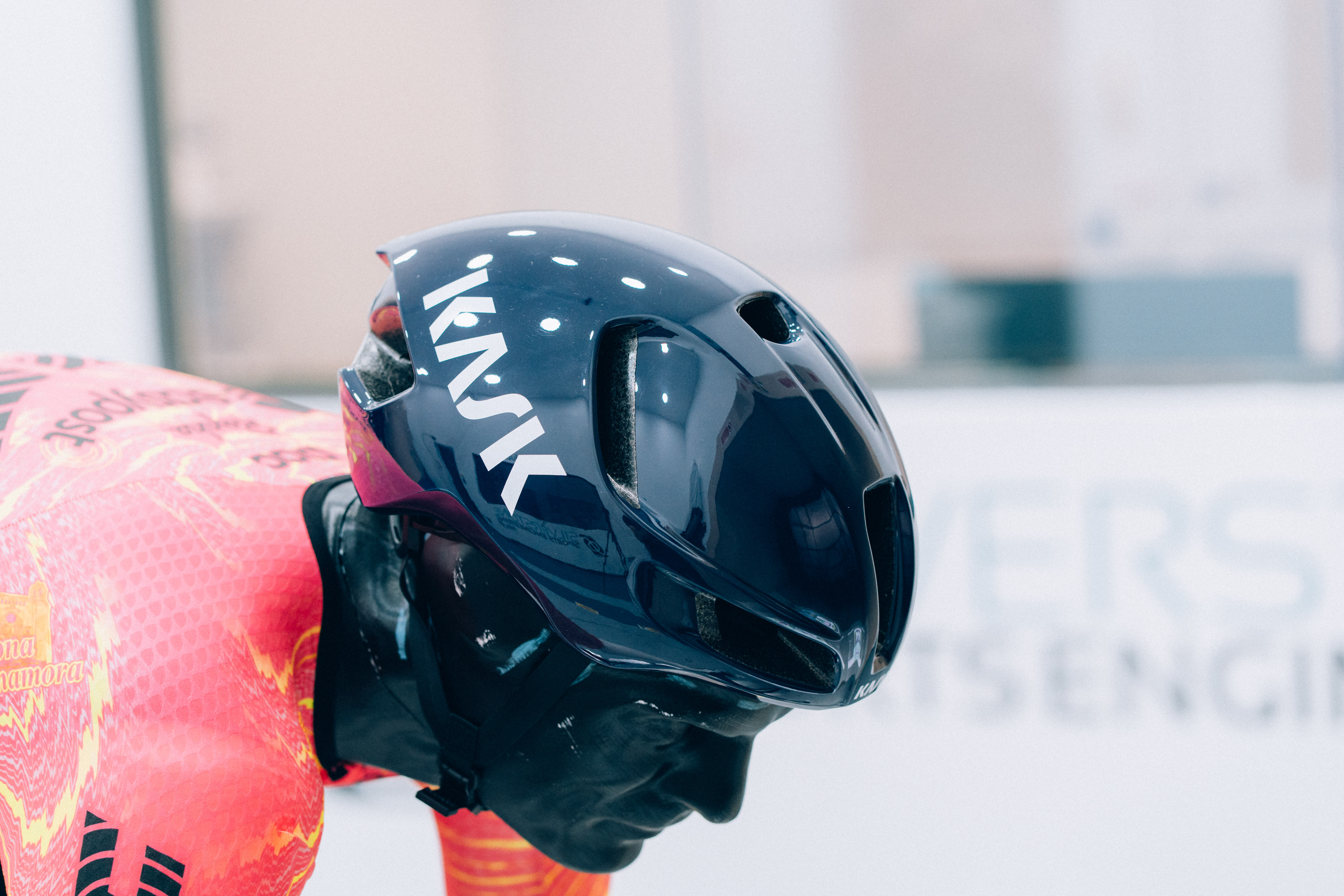
Type: Aero
Price: £245.00 / $300.00
Weight: 280g
Aero drag at 40km/h: 242.01w
Watts saved vs baseline: 6.37w
Aero drag at 50km/h: 455.02w
Watts saved vs baseline: -2.35w
CdA 0°: 0.2901 m²
CdA 5°: 0.2828 m²
CdA 10°: 0.3079 m²
CdA 15°: 0.3195 m²
Weighted Avg: 0.2940 m²
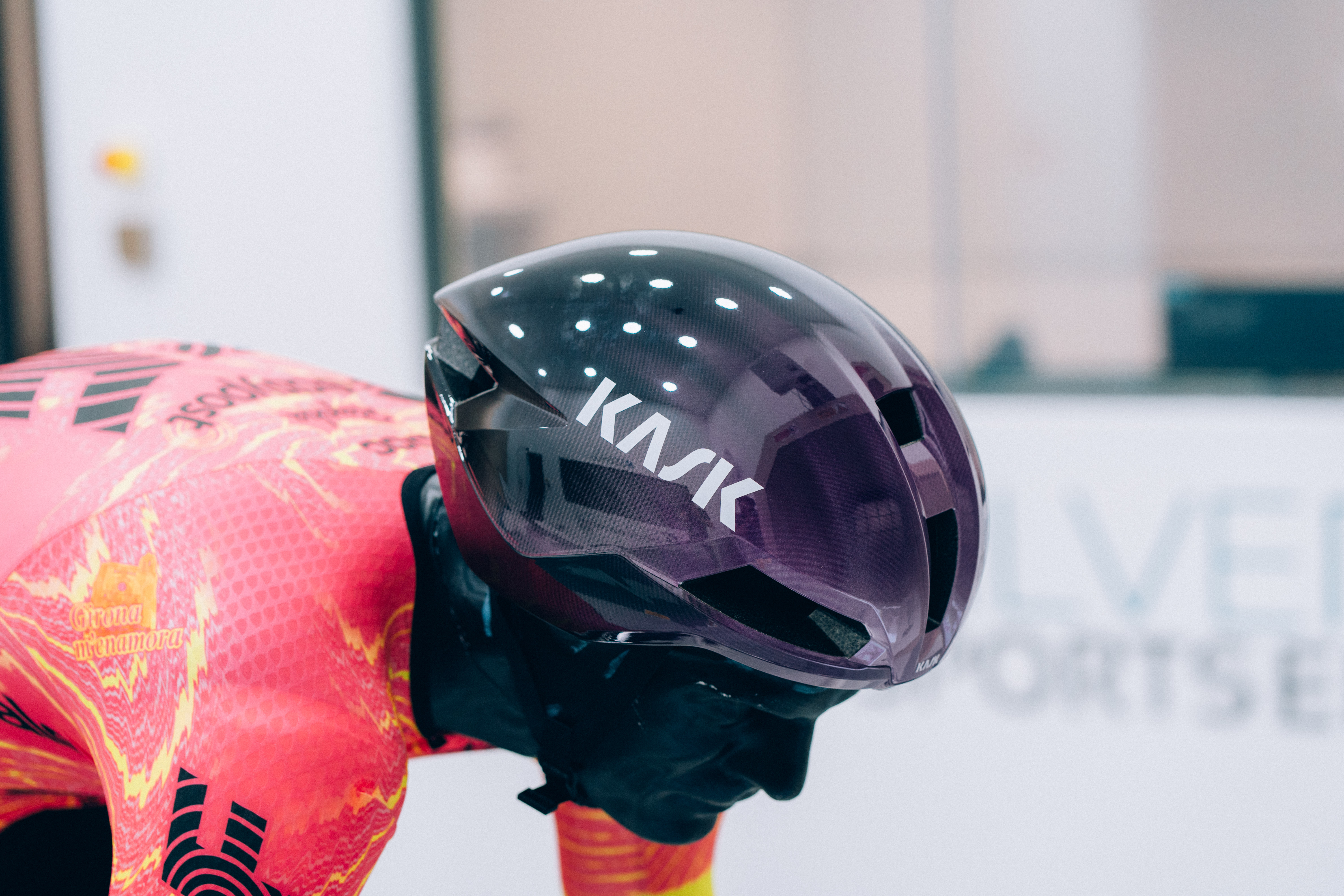
Type: Aero
Price: £320.00 / $400.00
Weight: 305g
Aero drag at 40km/h: 242.29w
Watts saved vs baseline: 6.09w
CdA 0°: 0.2896 m²
CdA 5°: 0.2834 m²
CdA 10°: 0.3089 m²
CdA 15°: 0.321 m²
Weighted Avg: 0.2944 m²
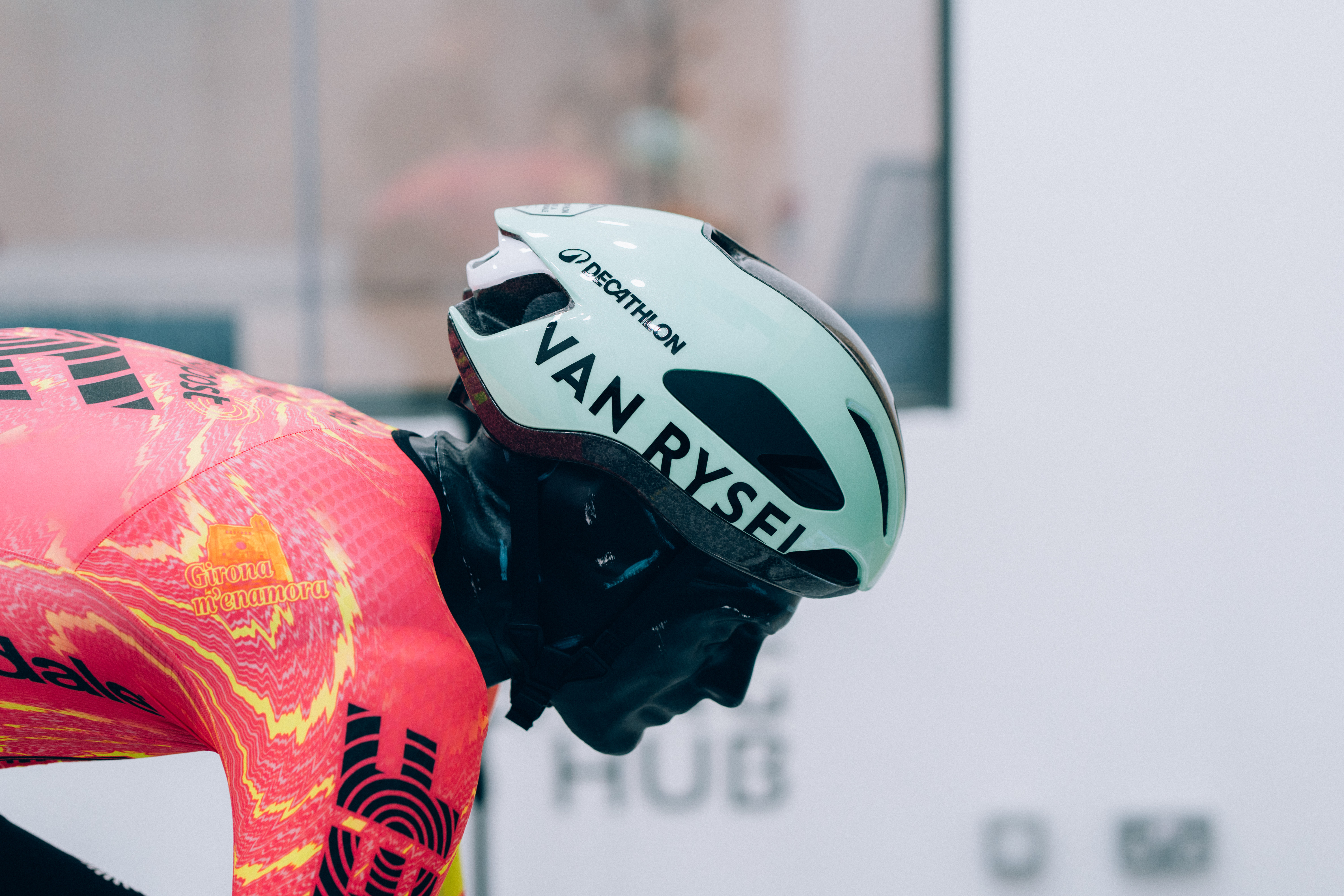
Type: Aero
Price: £130.00 / N/A
Weight: 345g
Aero drag at 40km/h: 242.30w
Watts saved vs baseline: 6.08w
Aero drag at 50km/h: 454.94w
Watts saved vs baseline: -2.26w
CdA 0°: 0.2905 m²
CdA 5°: 0.2827 m²
CdA 10°: 0.3092 m²
CdA 15°: 0.3192 m²
Weighted Avg: 0.2944 m²
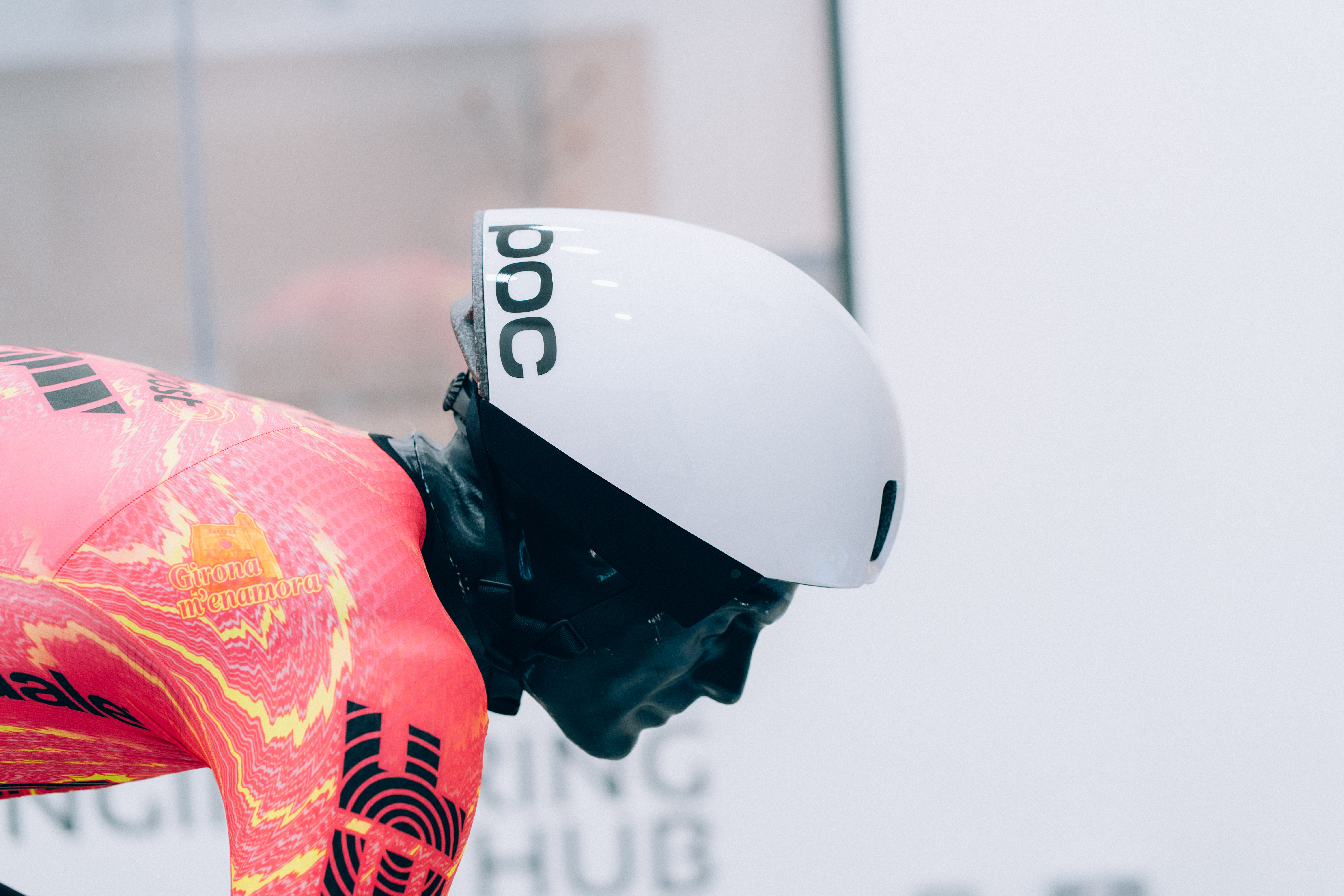
Type: Aero
Price: £360.00 / $449.95
Weight: 330g
Aero drag at 40km/h: 242.40w
Watts saved vs baseline: 5.98w
Aero drag at 50km/h: 453.26w
Watts saved vs baseline: -0.59w
CdA 0°: 0.2915 m²
CdA 5°: 0.2839 m²
CdA 10°: 0.3069 m²
CdA 15°: 0.3172 m²
Weighted Avg: 0.2945 m²
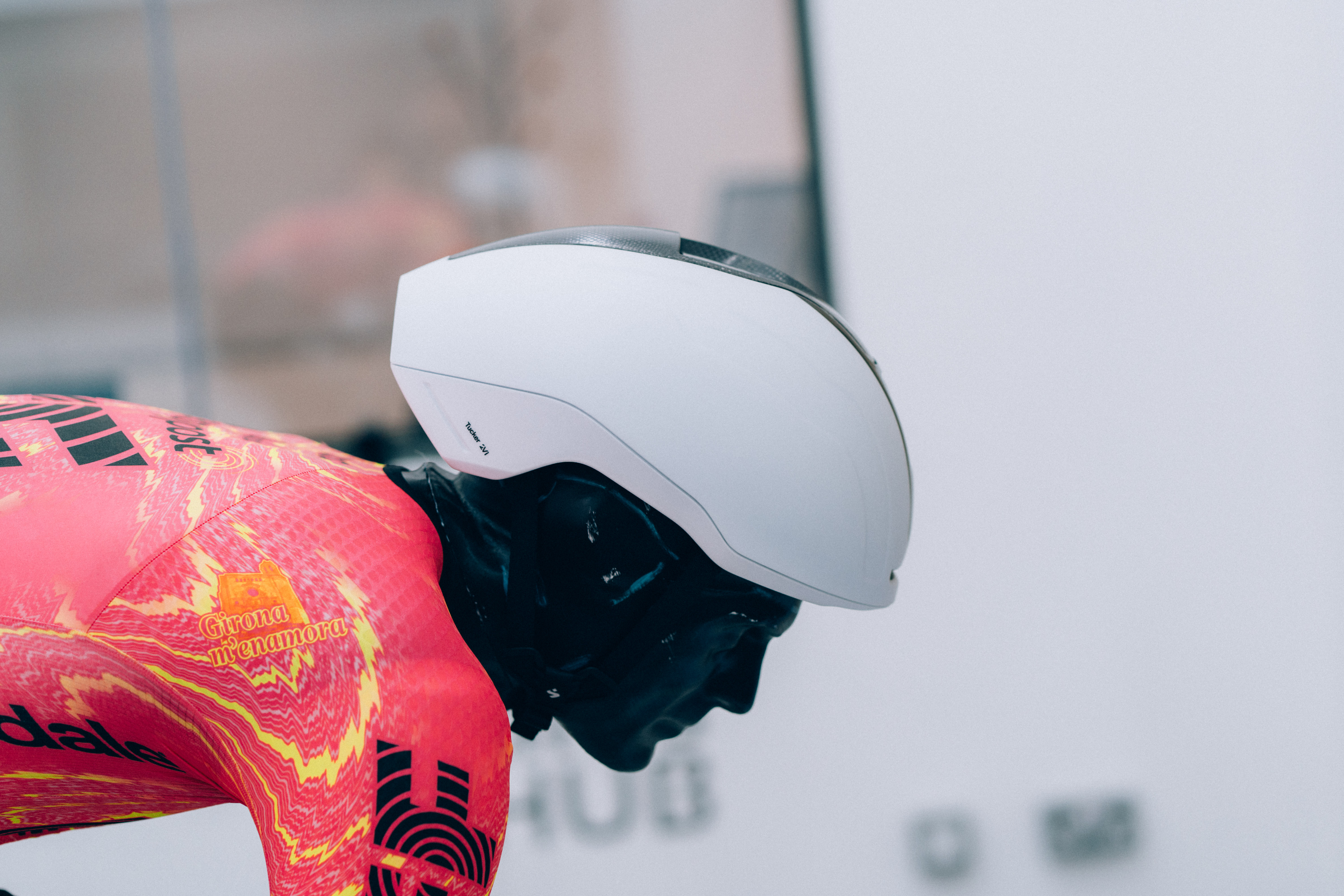
Type: Aero
Price: £270.00 / N/A
Weight: 440g
Aero drag at 40km/h: 242.41w
Watts saved vs baseline: 5.97w
Aero drag at 50km/h: 455.46w
Watts saved vs baseline: -2.79w
CdA 0°: 0.2917 m²
CdA 5°: 0.2834 m²
CdA 10°: 0.3069 m²
CdA 15°: 0.3183 m²
Weighted Avg: 0.2945 m²
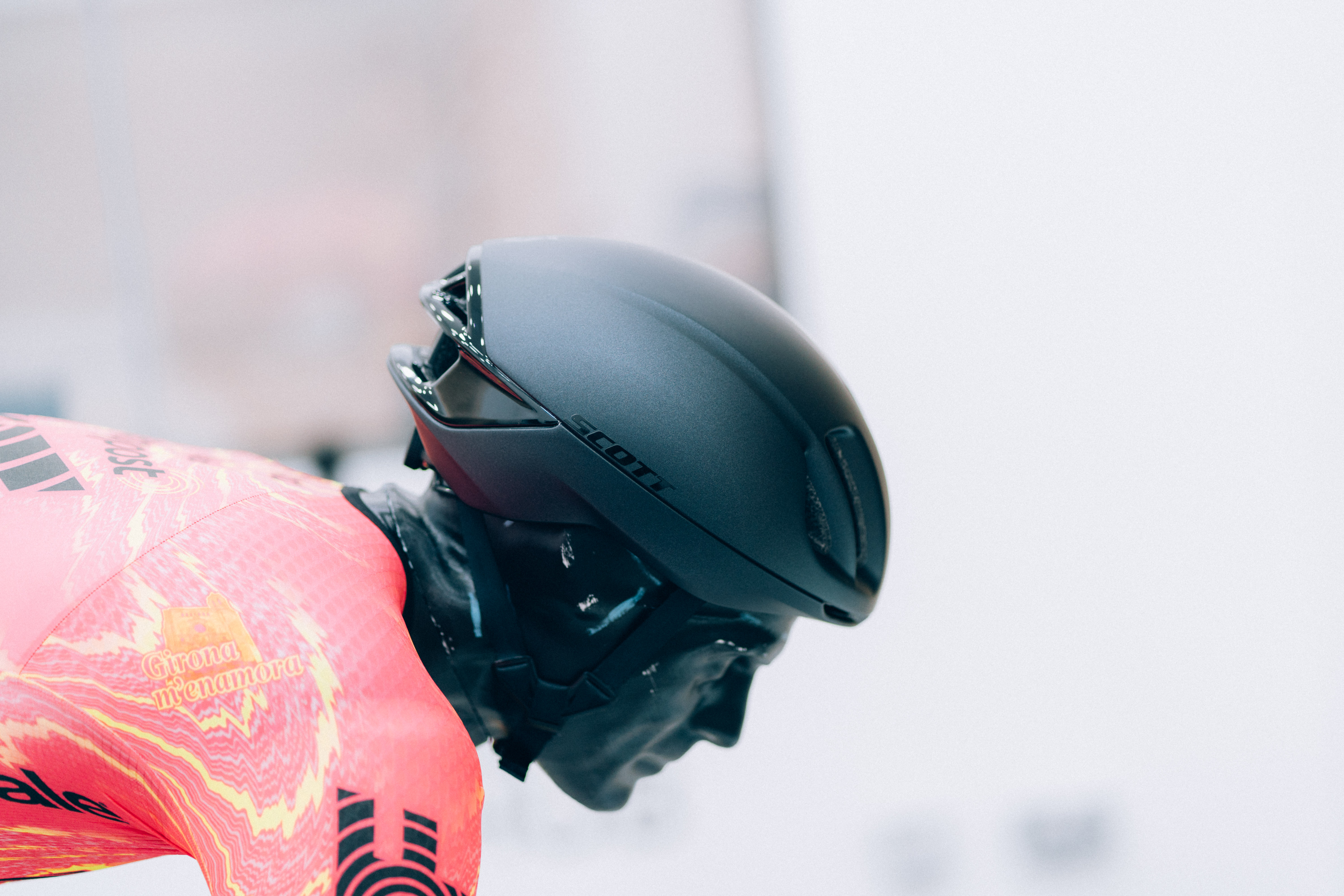
Type: Aero
Price: £229.99 / $229.99
Weight: 325g
Aero drag at 40km/h: 242.64w
Watts saved vs baseline: 5.75w
CdA 0°: 0.2904 m²
CdA 5°: 0.2836 m²
CdA 10°: 0.3091 m²
CdA 15°: 0.3211 m²
Weighted Avg: 0.2948 m²
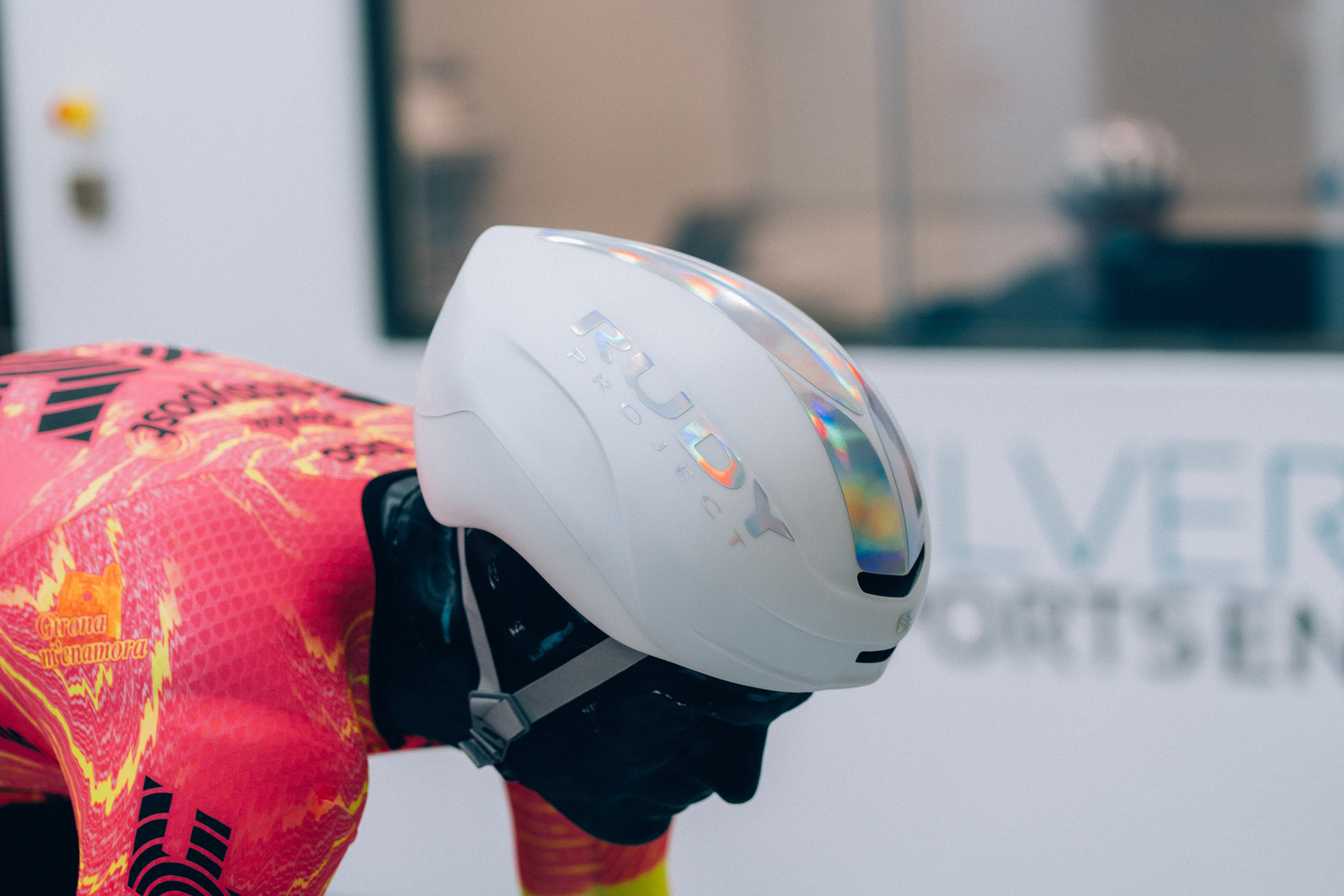
Type: Aero
Price: £210.00 / N/A
Weight: 365g
Aero drag at 40km/h: 242.92w
Watts saved vs baseline: 5.46w
CdA 0°: 0.2922 m²
CdA 5°: 0.2835 m²
CdA 10°: 0.3081 m²
CdA 15°: 0.32 m²
Weighted Avg: 0.2951 m²
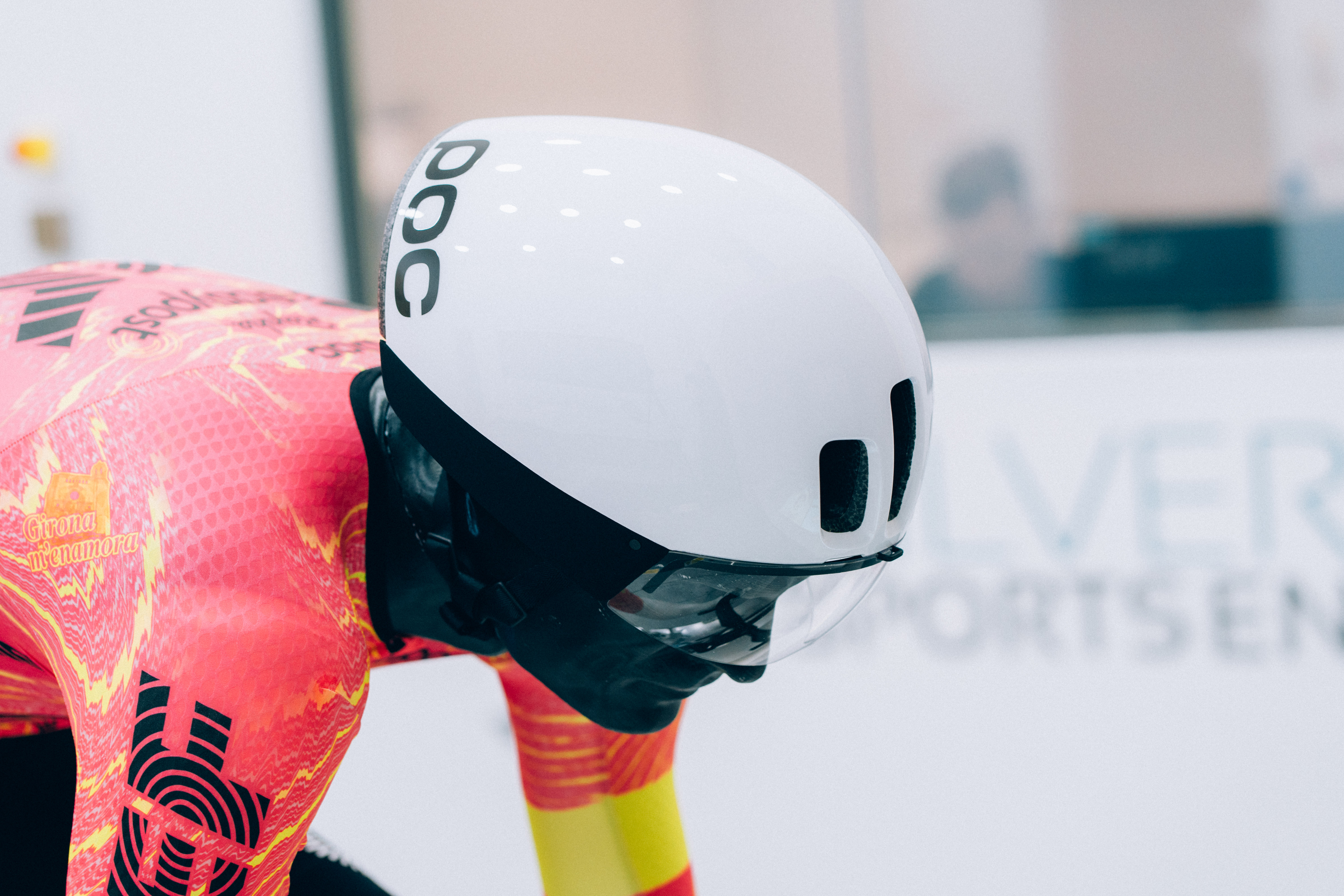
Type: Aero
Price: £360.00 / $449.95
Weight: 355g
Aero drag at 40km/h: 242.93w
Watts saved vs baseline: 5.45w
CdA 0°: 0.2907 m²
CdA 5°: 0.285 m²
CdA 10°: 0.3088 m²
CdA 15°: 0.3194 m²
Weighted Avg: 0.2952 m²
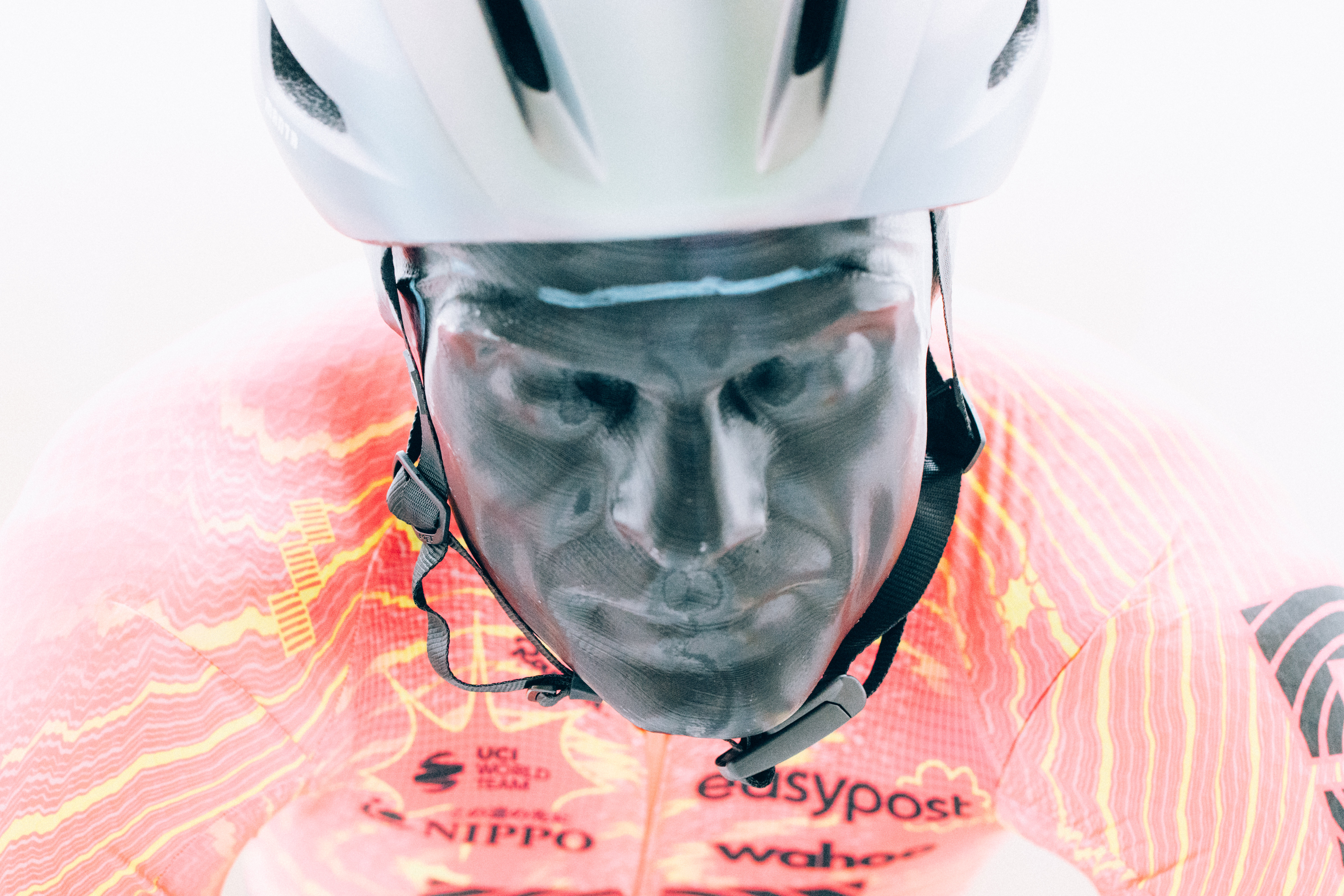
Type: Aero
Price: £225.00 / $299.00
Weight: 270g
Aero drag at 40km/h: 243.50w
Watts saved vs baseline: 4.88w
CdA 0°: 0.2917 m²
CdA 5°: 0.2851 m²
CdA 10°: 0.3094 m²
CdA 15°: 0.3212 m²
Weighted Avg: 0.2959 m²
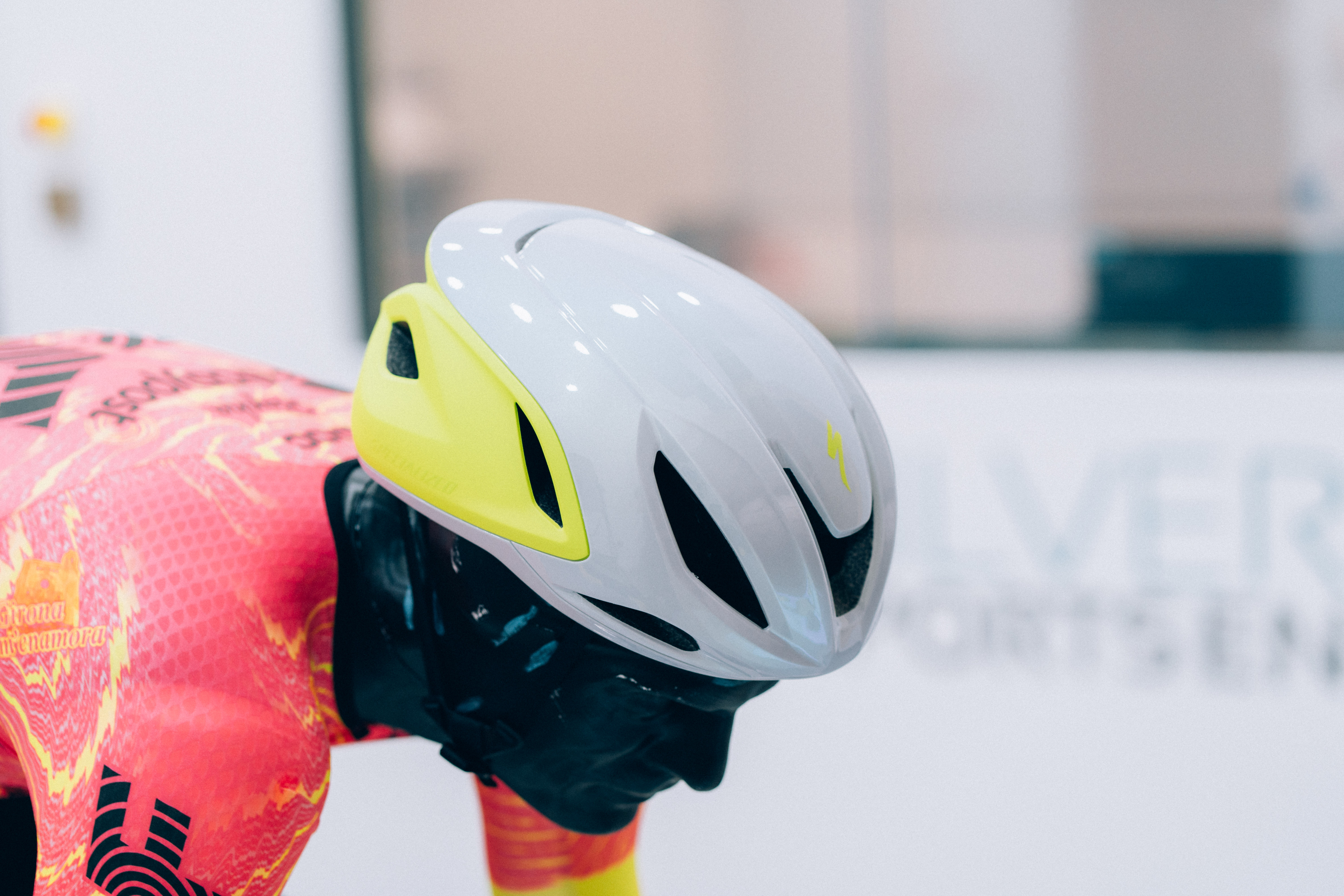
Type: Semi-aero
Price: £165.00 / $229.99
Weight: 320g
Aero drag at 40km/h: 243.50w
Watts saved vs baseline: 4.88w
CdA 0°: 0.2925 m²
CdA 5°: 0.2846 m²
CdA 10°: 0.3086 m²
CdA 15°: 0.3215 m²
Weighted Avg: 0.2959 m²
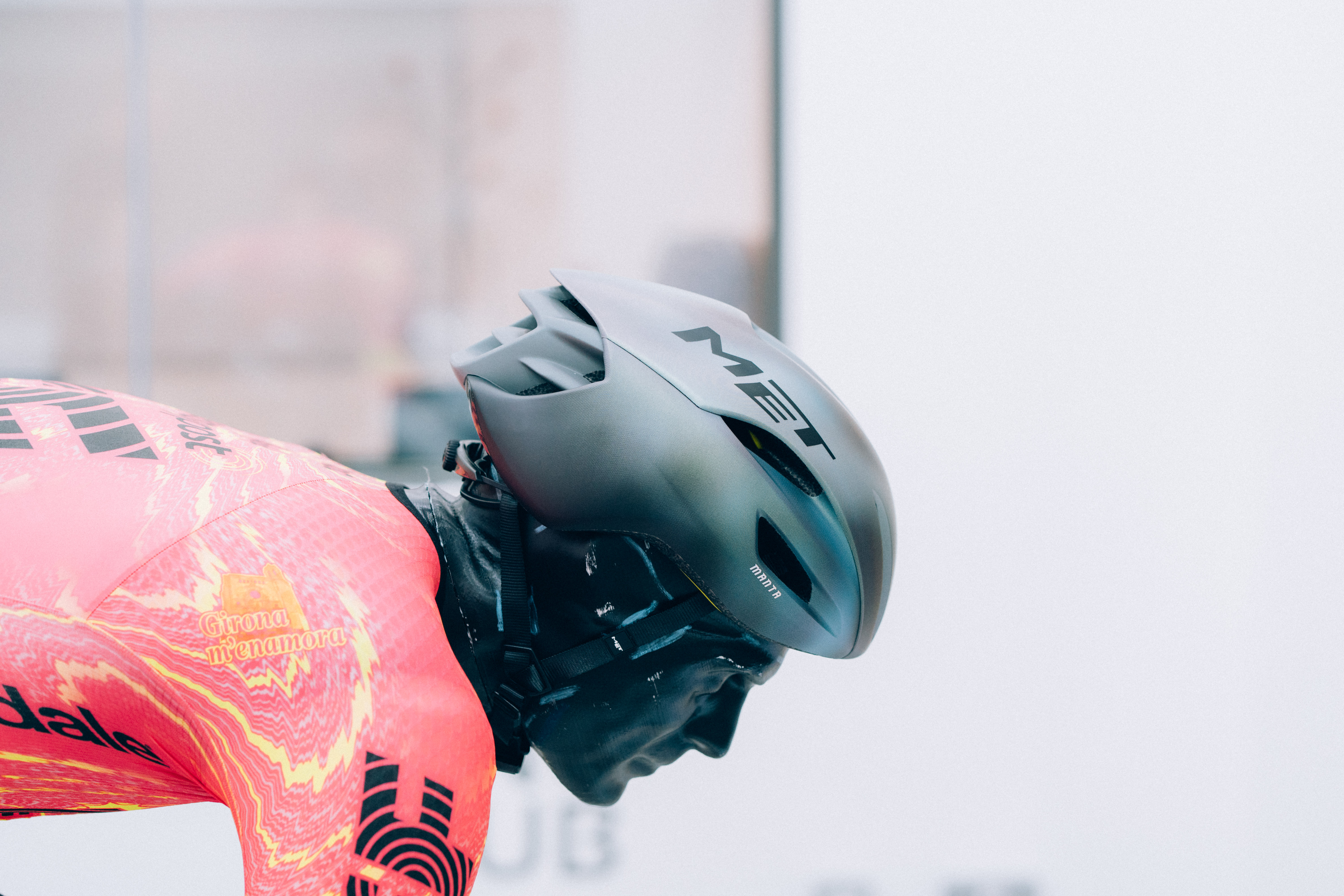
Type: Aero
Price: £225.00 / $299.00
Weight: 270g
Aero drag at 40km/h: 243.51w
Watts saved vs baseline: 4.87w
CdA 0°: 0.2919 m²
CdA 5°: 0.2849 m²
CdA 10°: 0.3096 m²
CdA 15°: 0.3207 m²
Weighted Avg: 0.2959 m²
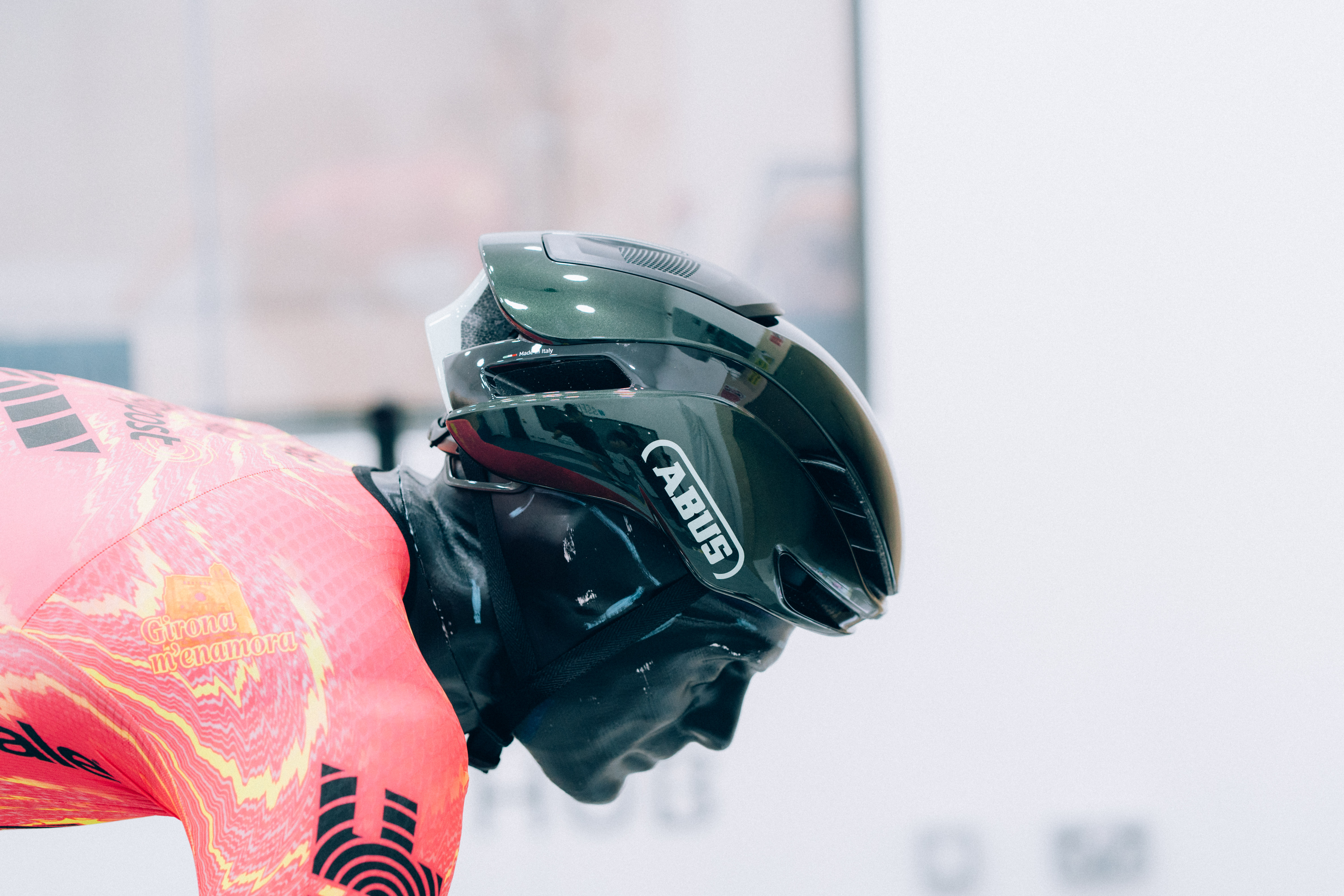
Type: Aero
Price: £225.00 / $299.99
Weight: 270g
Aero drag at 40km/h: 243.80w
Watts saved vs baseline: 4.58w
CdA 0°: 0.2922 m²
CdA 5°: 0.2852 m²
CdA 10°: 0.31 m²
CdA 15°: 0.3214 m²
Weighted Avg: 0.2962 m²
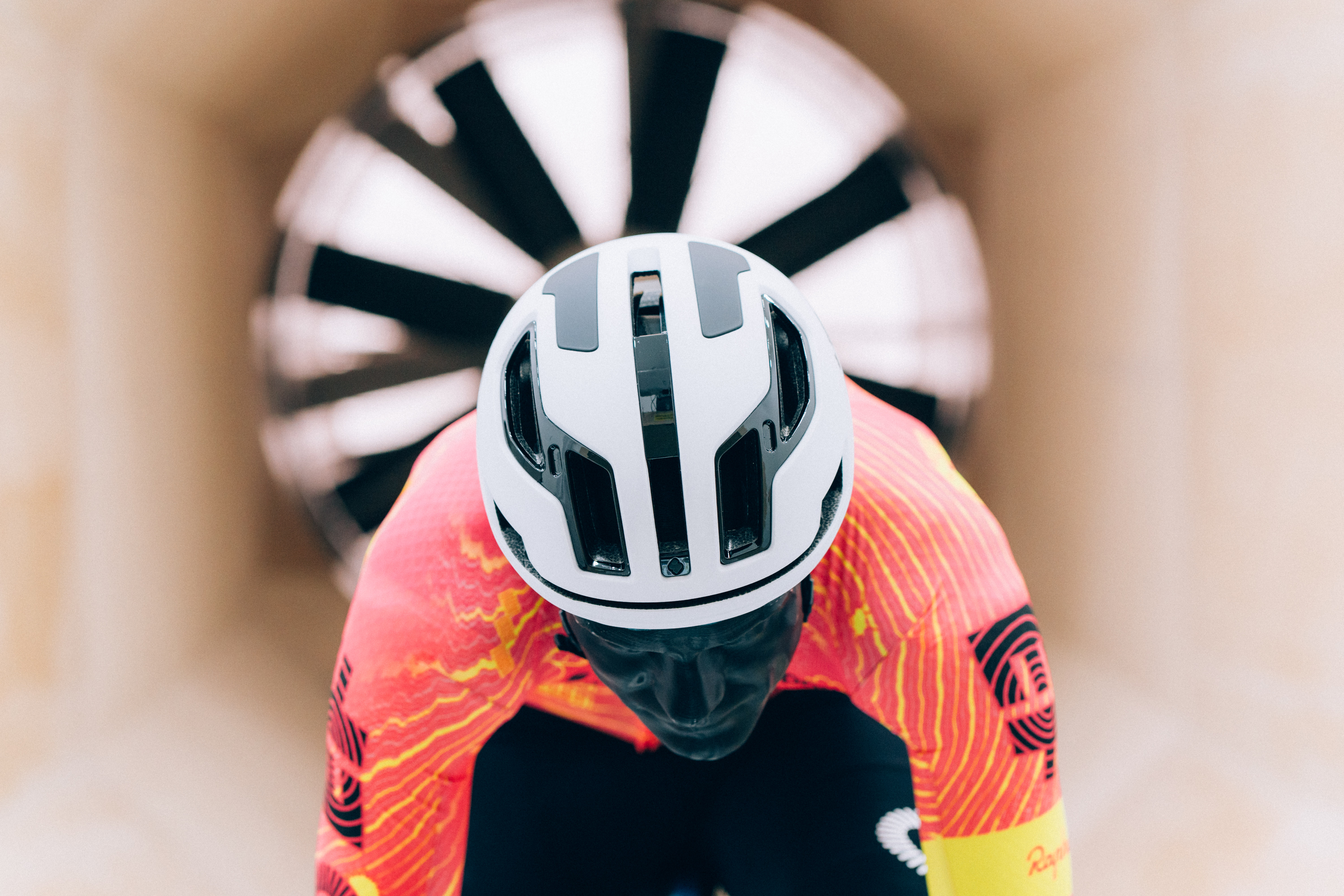
Type: Aero
Price: £269.00 / $299.95
Weight: 330g
Aero drag at 40km/h: 243.81w
Watts saved vs baseline: 4.57w
CdA 0°: 0.2926 m²
CdA 5°: 0.2856 m²
CdA 10°: 0.3086 m²
CdA 15°: 0.3216 m²
Weighted Avg: 0.2962 m²
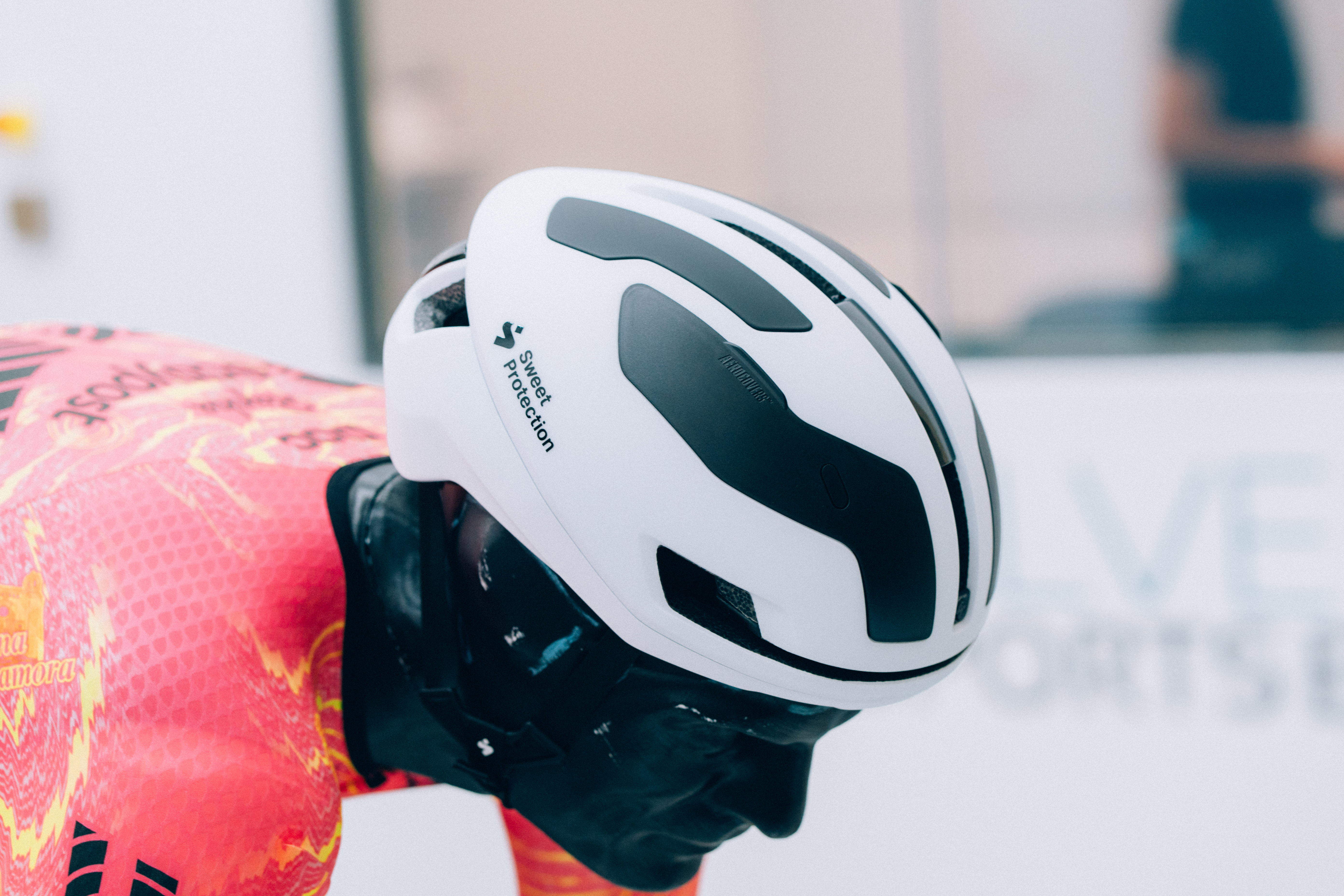
Type: Aero
Price: £269.00 / $299.95
Weight: 360g
Aero drag at 40km/h: 243.93w
Watts saved vs baseline: 4.45w
CdA 0°: 0.2932 m²
CdA 5°: 0.2856 m²
CdA 10°: 0.309 m²
CdA 15°: 0.3198 m²
Weighted Avg: 0.2964 m²
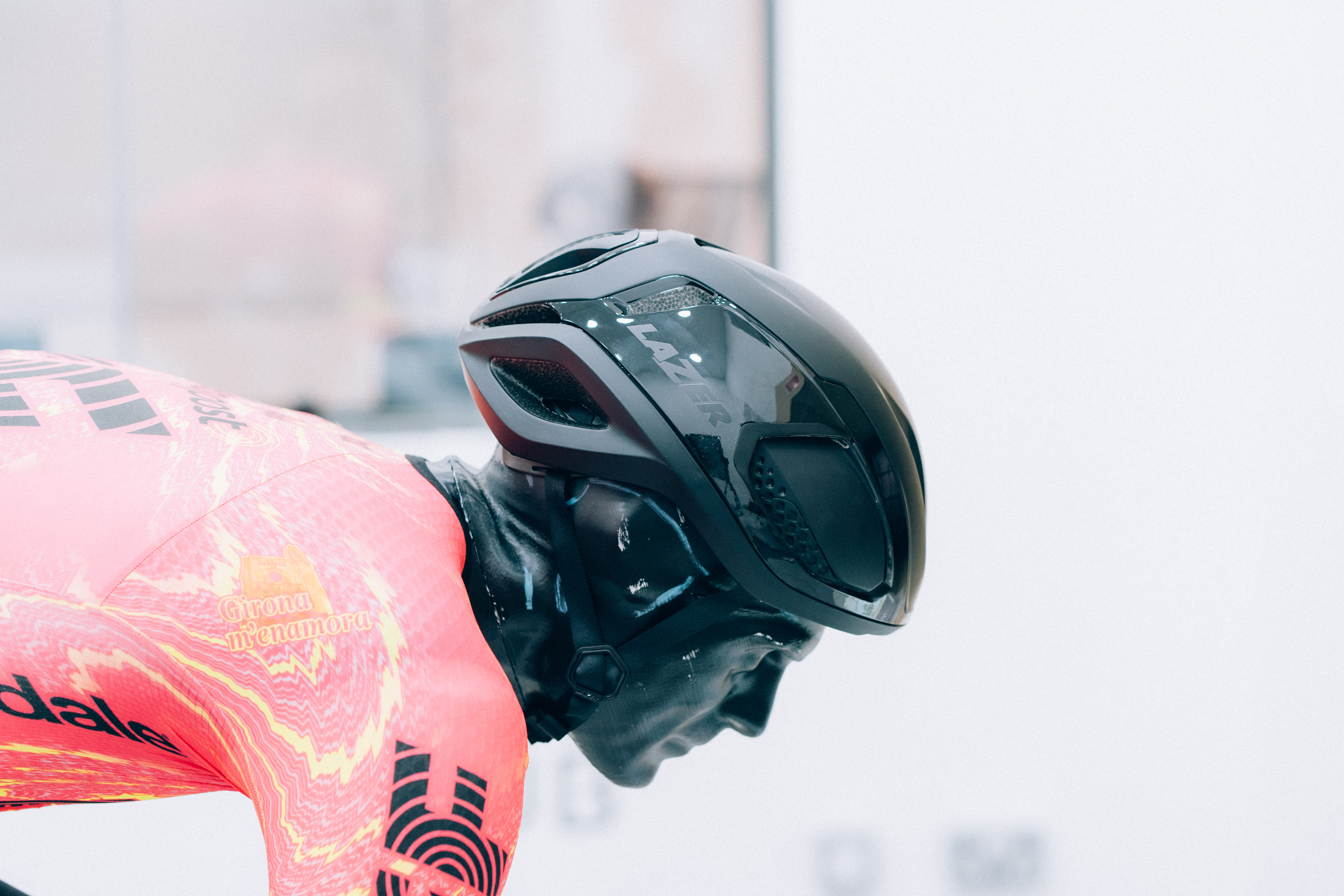
Type: Aero
Price: £249.99 / $319.99
Weight: 305g
Aero drag at 40km/h: 244.24w
Watts saved vs baseline: 4.14w
CdA 0°: 0.2929 m²
CdA 5°: 0.2856 m²
CdA 10°: 0.3106 m²
CdA 15°: 0.3216 m²
Weighted Avg: 0.2968 m²
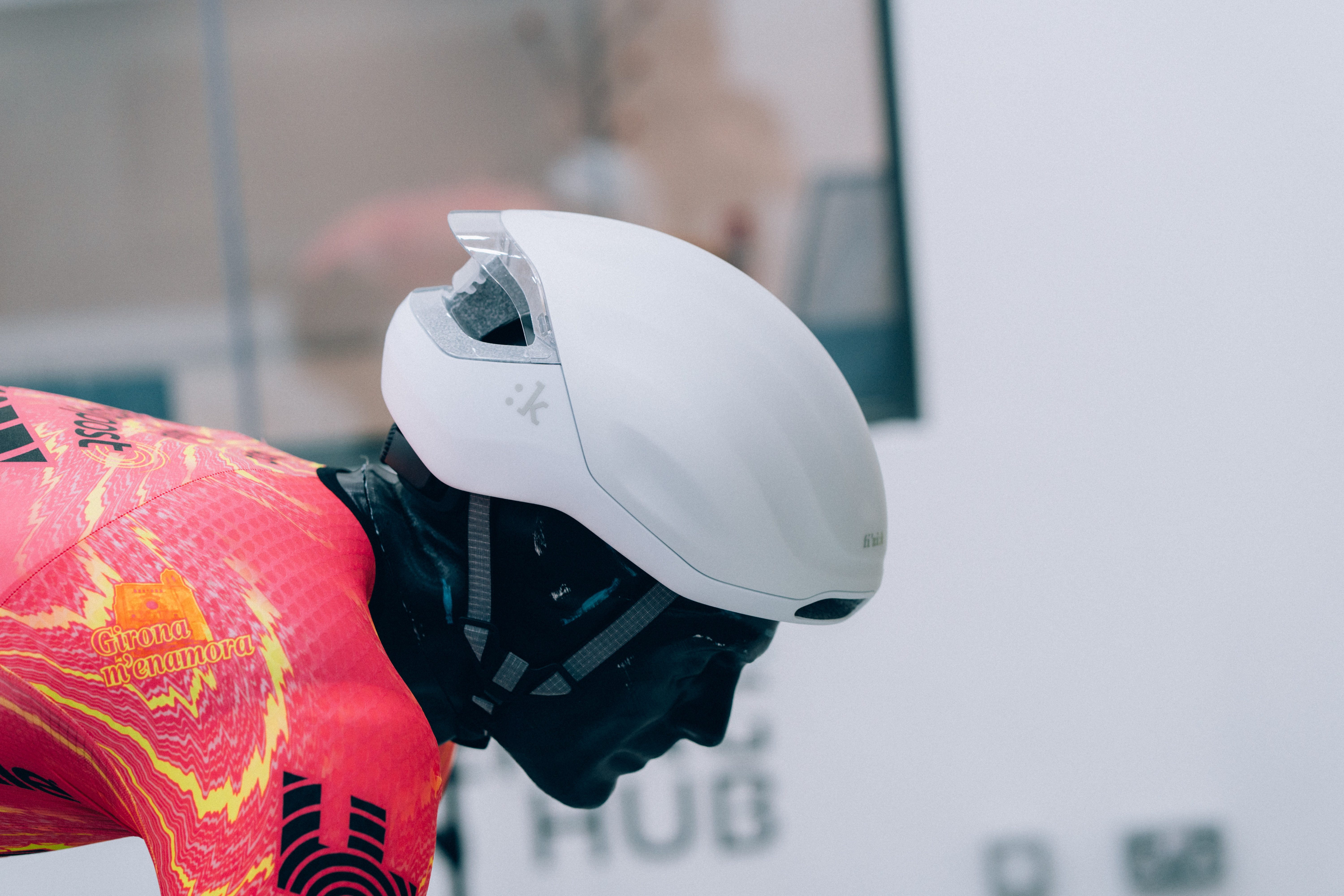
Type: Aero
Price: £269.99 / $319.99
Weight: 310g
Aero drag at 40km/h: 244.30w
Watts saved vs baseline: 4.08w
CdA 0°: 0.2927 m²
CdA 5°: 0.2864 m²
CdA 10°: 0.3102 m²
CdA 15°: 0.3213 m²
Weighted Avg: 0.2968 m²

Type: Aero
Price: £225.00 / $299.00
Weight: 250g
Aero drag at 40km/h: 244.66w
Watts saved vs baseline: 3.72w
CdA 0°: 0.2935 m²
CdA 5°: 0.2862 m²
CdA 10°: 0.3107 m²
CdA 15°: 0.3223 m²
Weighted Avg: 0.2973 m²
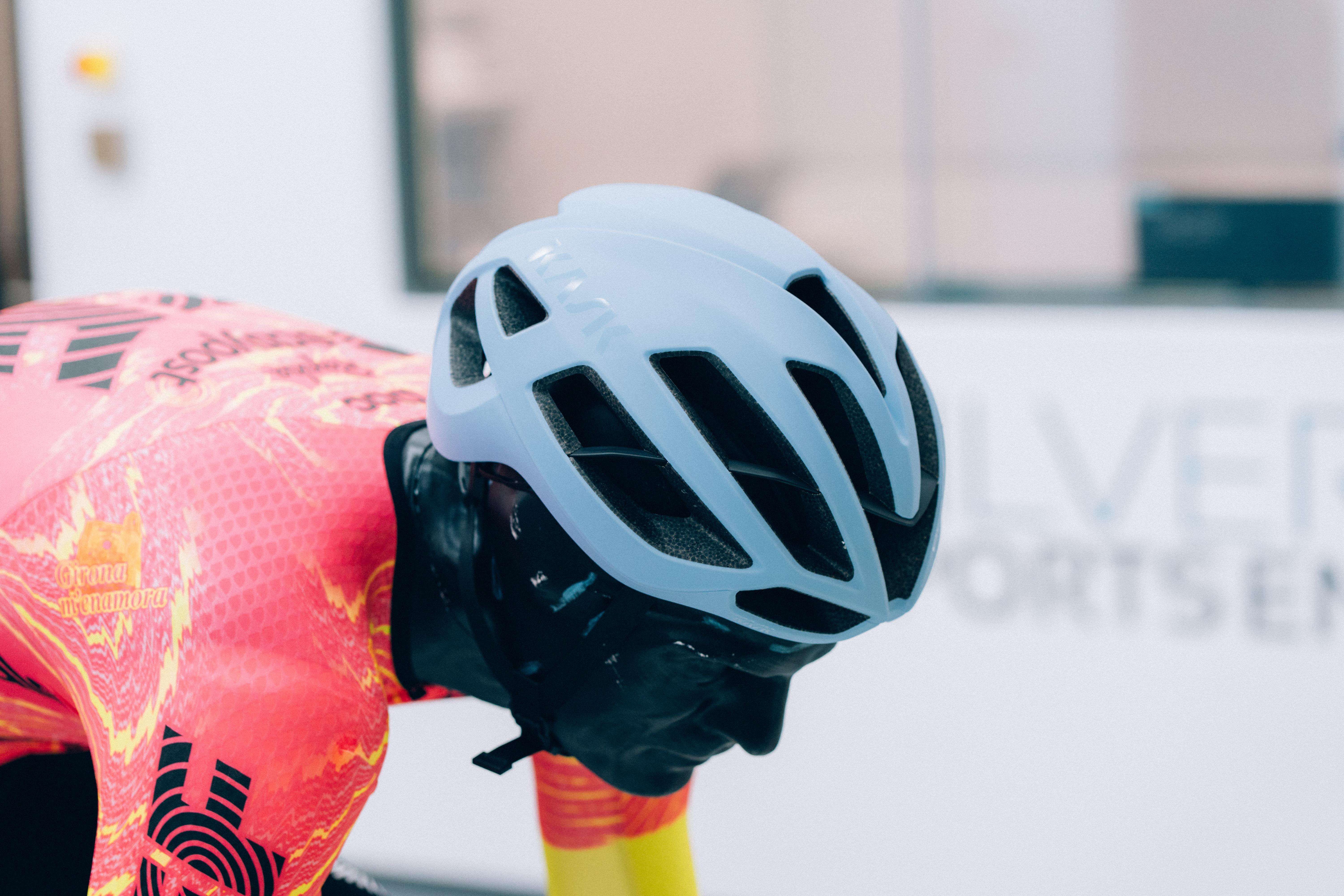
Type: Semi-aero
Price: £245.00 / $300.00
Weight: 275g
Aero drag at 40km/h: 244.84w
Watts saved vs baseline: 3.54w
CdA 0°: 0.2938 m²
CdA 5°: 0.2865 m²
CdA 10°: 0.3109 m²
CdA 15°: 0.3219 m²
Weighted Avg: 0.2975 m²
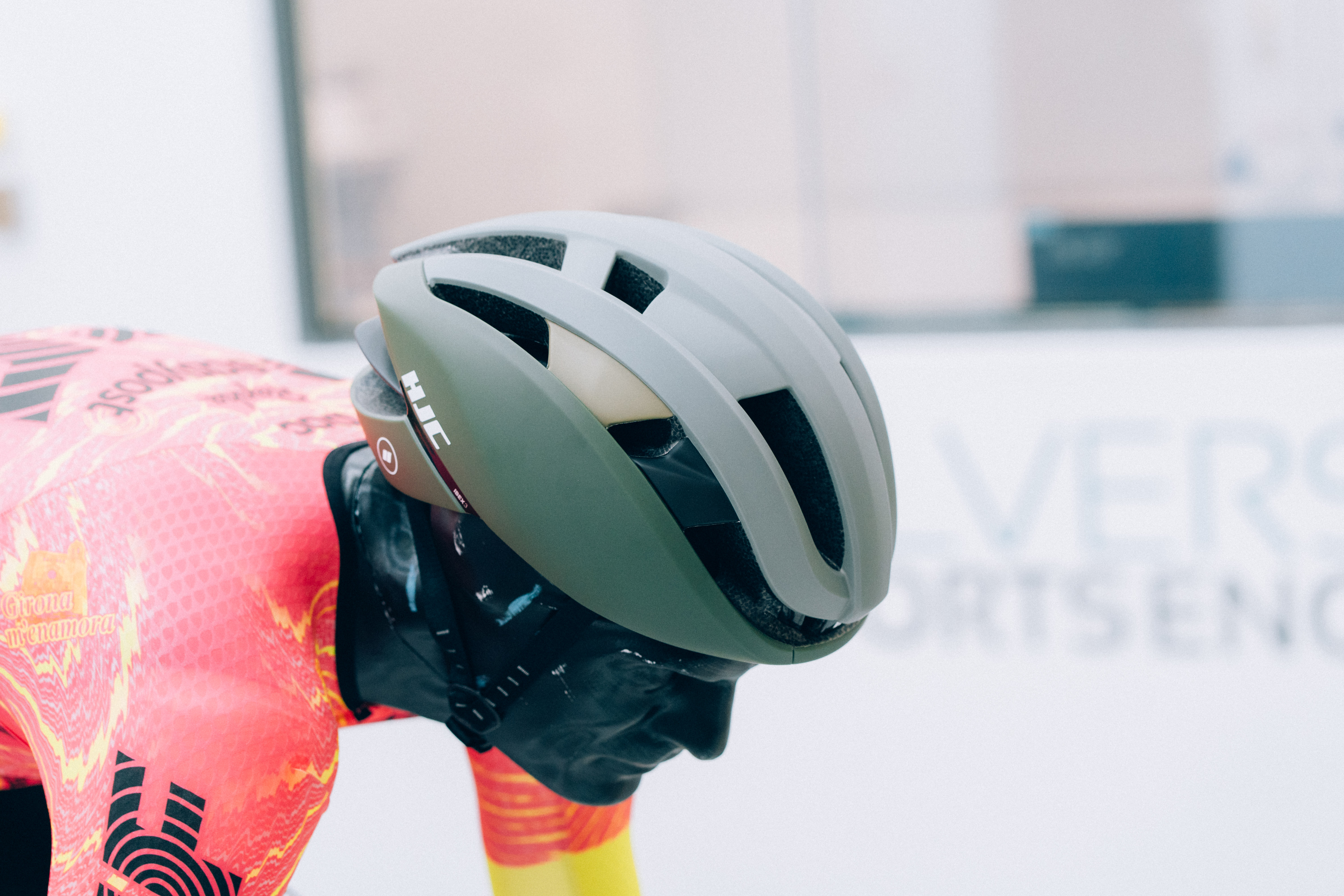
Type: Vented
Price: £249.99 / $224.99
Weight: 290g
Aero drag at 40km/h: 244.90w
Watts saved vs baseline: 3.48w
CdA 0°: 0.2936 m²
CdA 5°: 0.2866 m²
CdA 10°: 0.3109 m²
CdA 15°: 0.3232 m²
Weighted Avg: 0.2976 m²
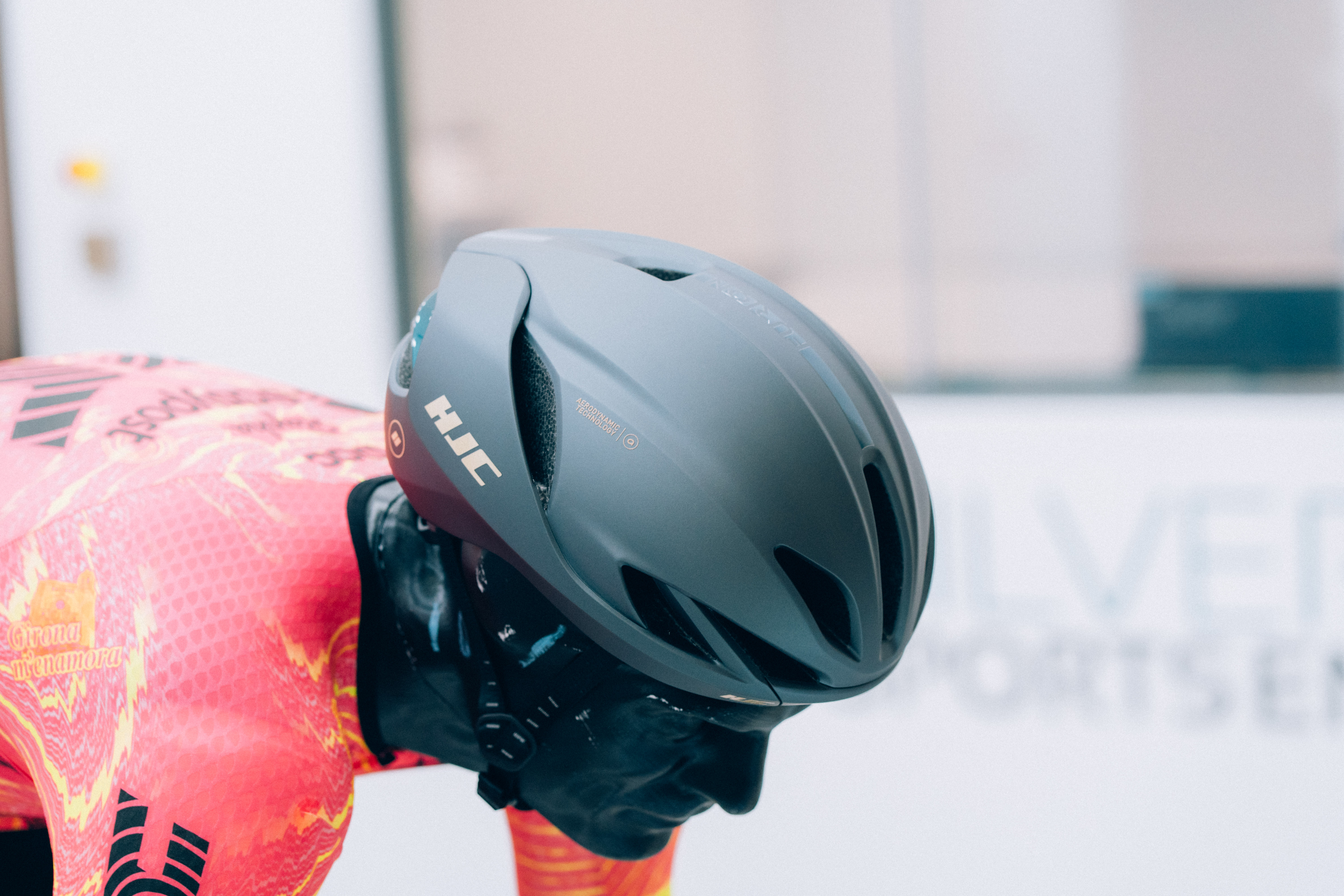
Type: Aero
Price: £199.99 / N/A
Weight: 270g
Aero drag at 40km/h: 245.12w
Watts saved vs baseline: 3.26w
CdA 0°: 0.2938 m²
CdA 5°: 0.2861 m²
CdA 10°: 0.3126 m²
CdA 15°: 0.3233 m²
Weighted Avg: 0.2978 m²
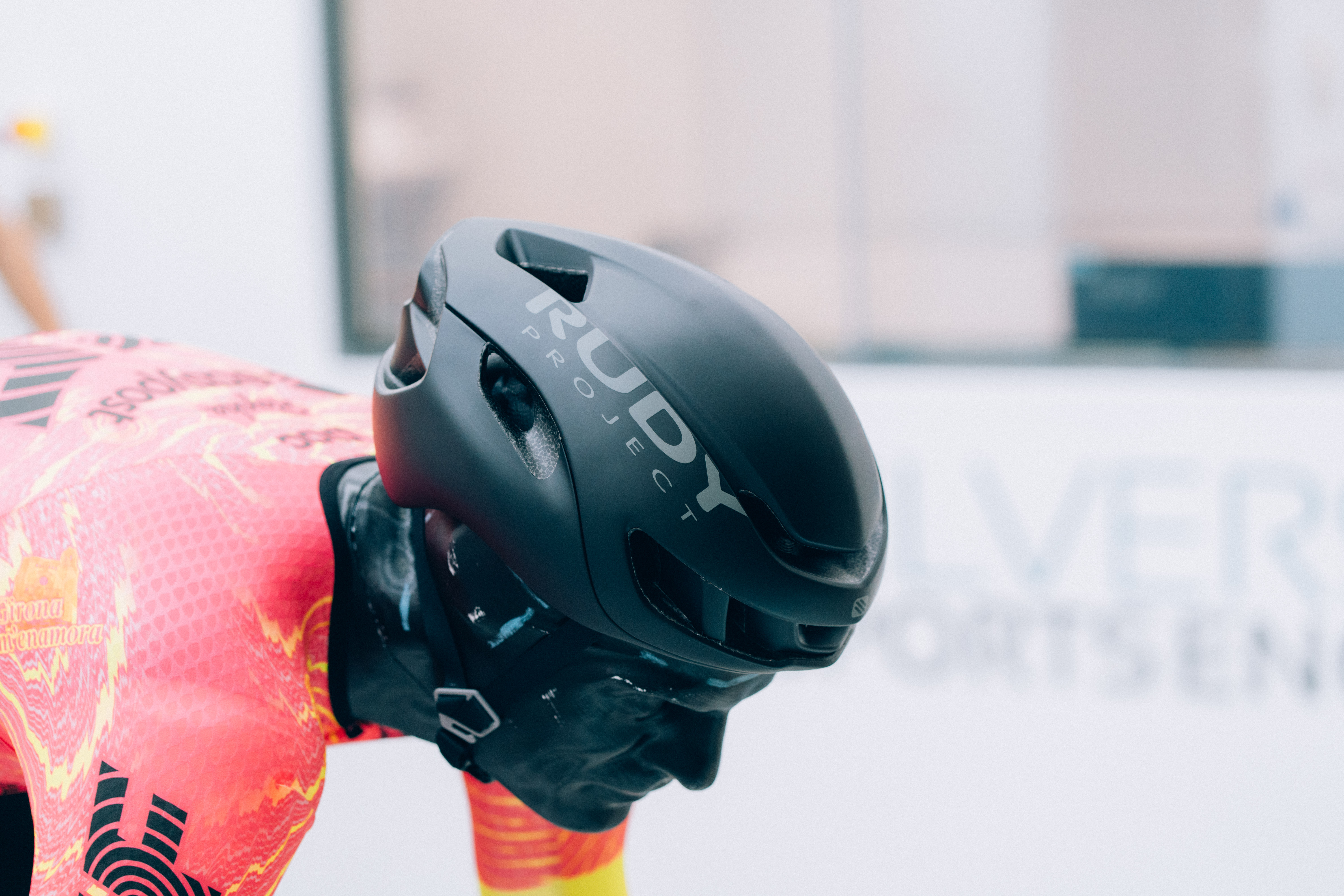
Type: Aero
Price: £189.99 / $356.99
Weight: 305g
Aero drag at 40km/h: 245.20w
Watts saved vs baseline: 3.18w
CdA 0°: 0.2942 m²
CdA 5°: 0.2867 m²
CdA 10°: 0.3114 m²
CdA 15°: 0.3233 m²
Weighted Avg: 0.2979 m²
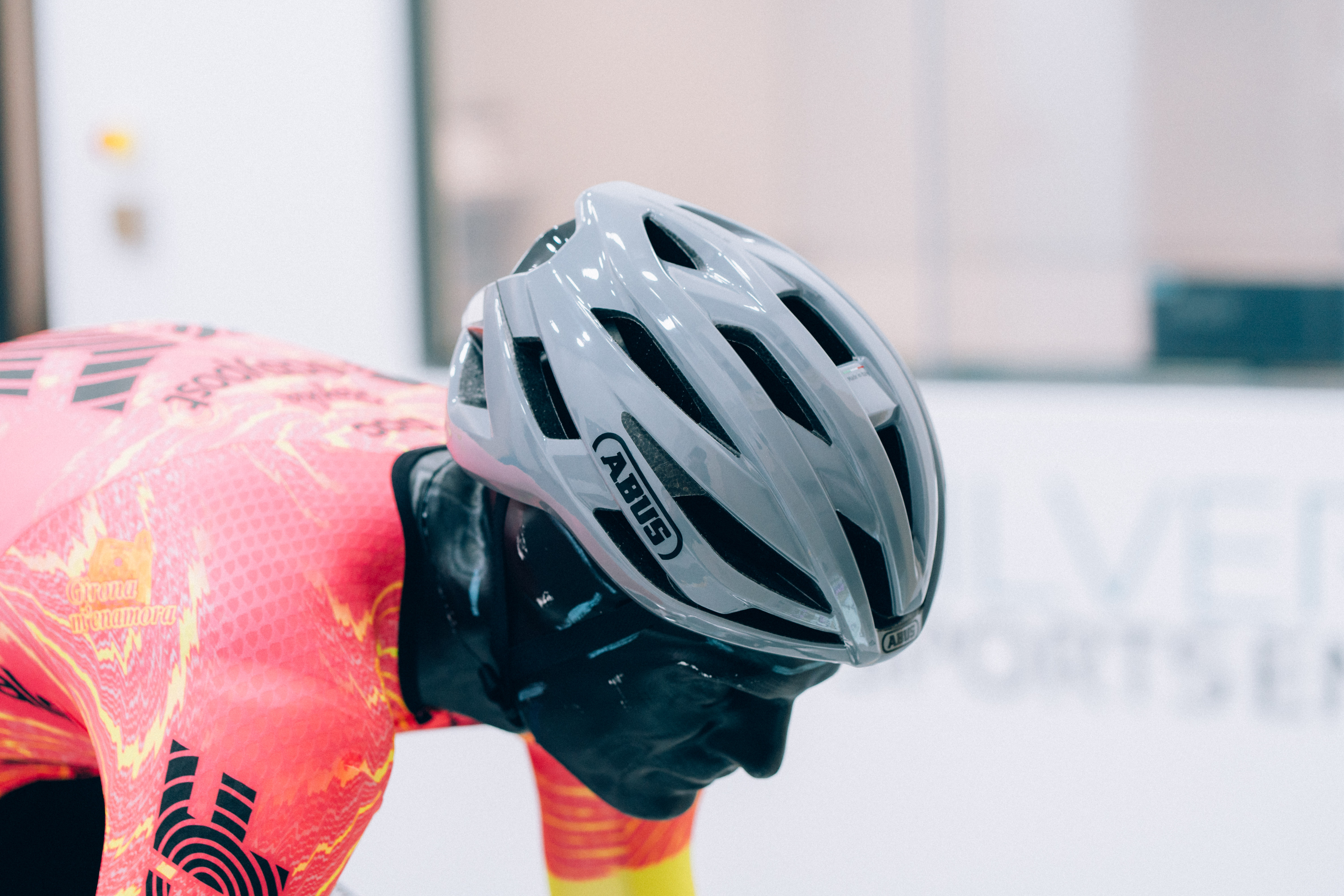
Type: Vented
Price: £130.00 / $219.99
Weight: 230g
Aero drag at 40km/h: 245.78w
Watts saved vs baseline: 2.60w
CdA 0°: 0.2946 m²
CdA 5°: 0.2877 m²
CdA 10°: 0.3123 m²
CdA 15°: 0.3237 m²
Weighted Avg: 0.2986 m²
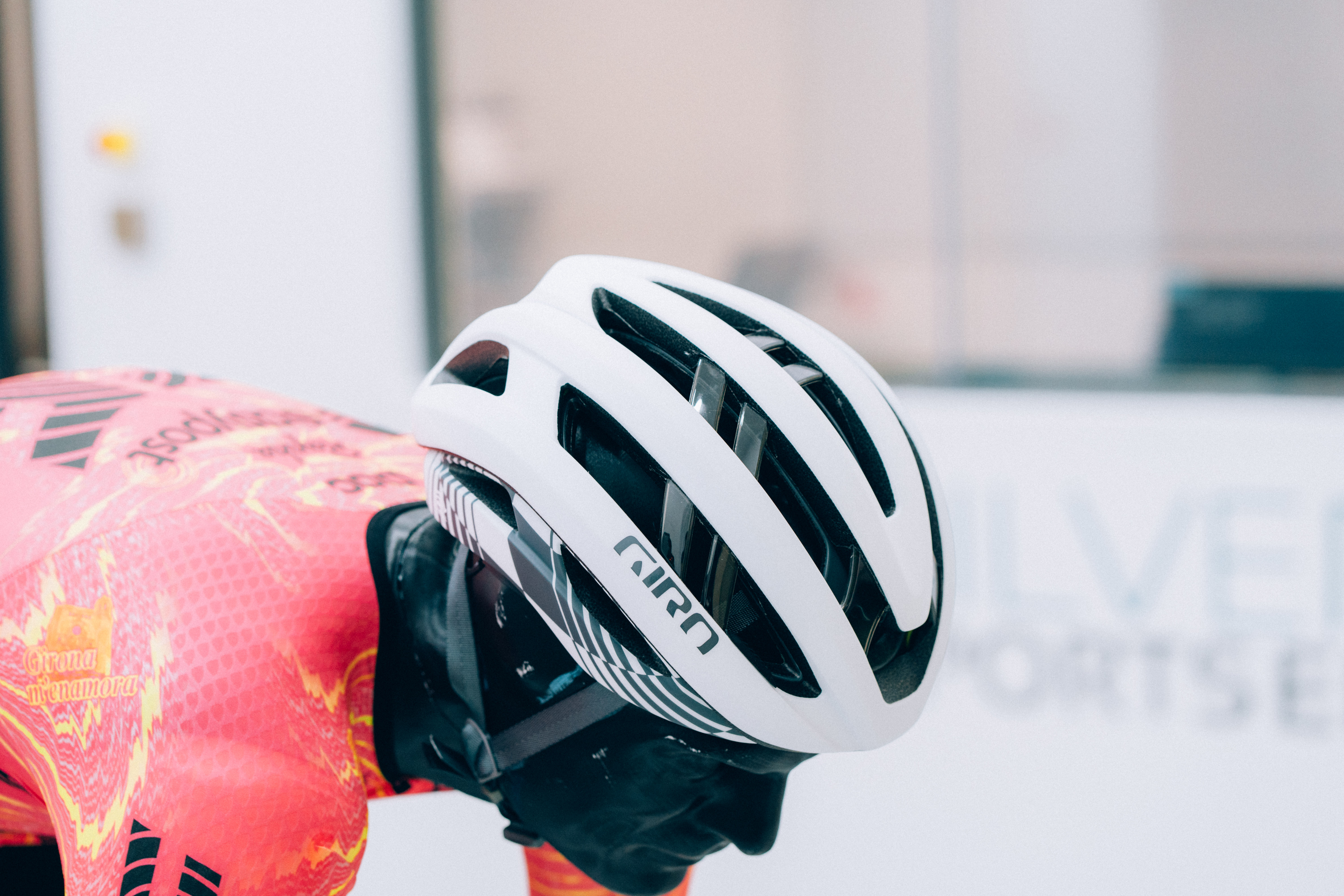
Type: Vented
Price: £289.99 / $349.95
Weight: 305g
Aero drag at 40km/h: 245.99w
Watts saved vs baseline: 2.39w
CdA 0°: 0.2947 m²
CdA 5°: 0.2879 m²
CdA 10°: 0.3122 m²
CdA 15°: 0.3257 m²
Weighted Avg: 0.2989 m²
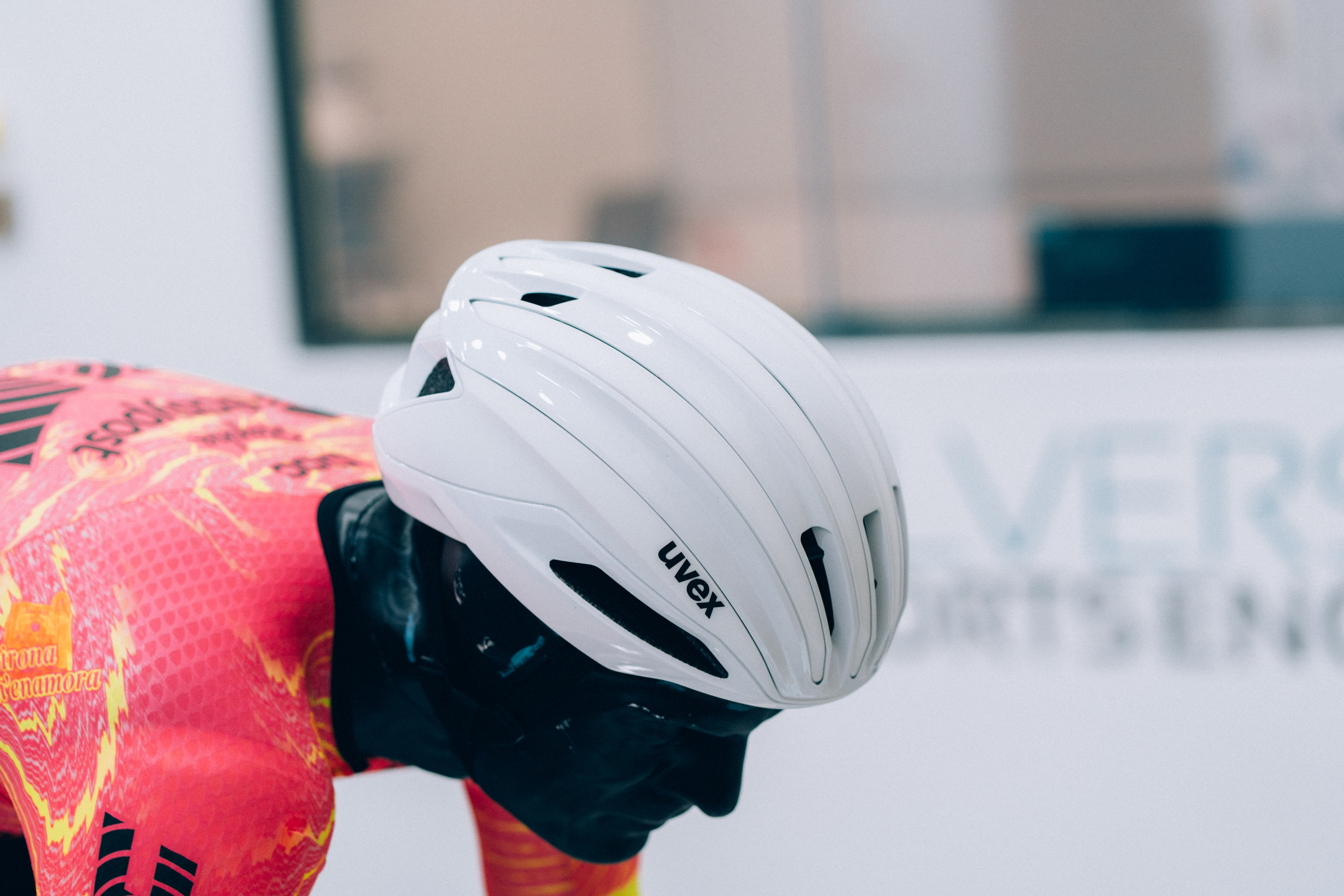
Type: Aero
Price: £219.99 / N/A
Weight: 390g
Aero drag at 40km/h: 246.16w
Watts saved vs baseline: 2.22w
CdA 0°: 0.2954 m²
CdA 5°: 0.2881 m²
CdA 10°: 0.3121 m²
CdA 15°: 0.3245 m²
Weighted Avg: 0.2991 m²
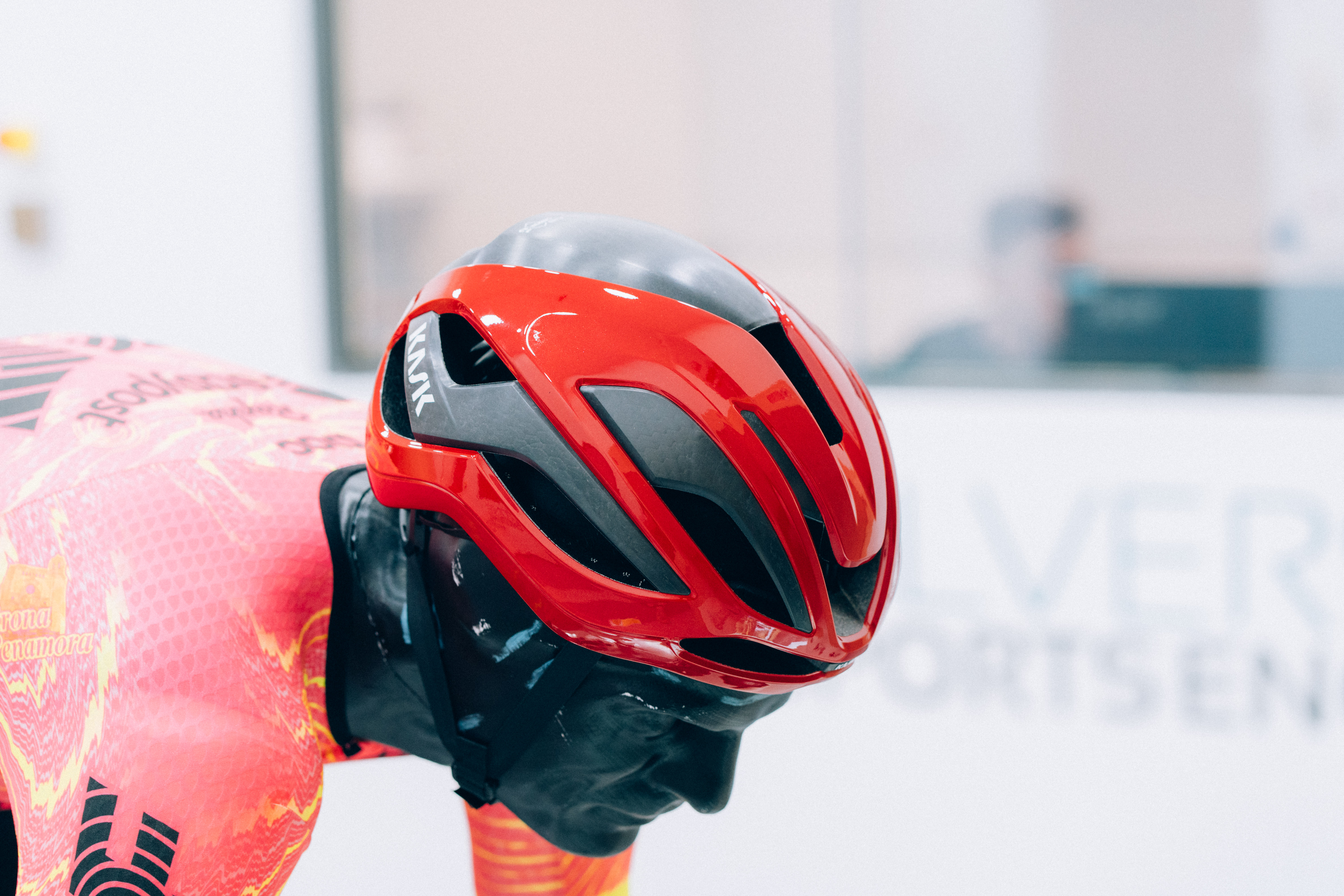
Type: Semi-aero
Price: £335.00 / $400.00
Weight: 310g
Aero drag at 40km/h: 246.45w
Watts saved vs baseline: 1.93w
CdA 0°: 0.2962 m²
CdA 5°: 0.2886 m²
CdA 10°: 0.312 m²
CdA 15°: 0.3235 m²
Weighted Avg: 0.2994 m²
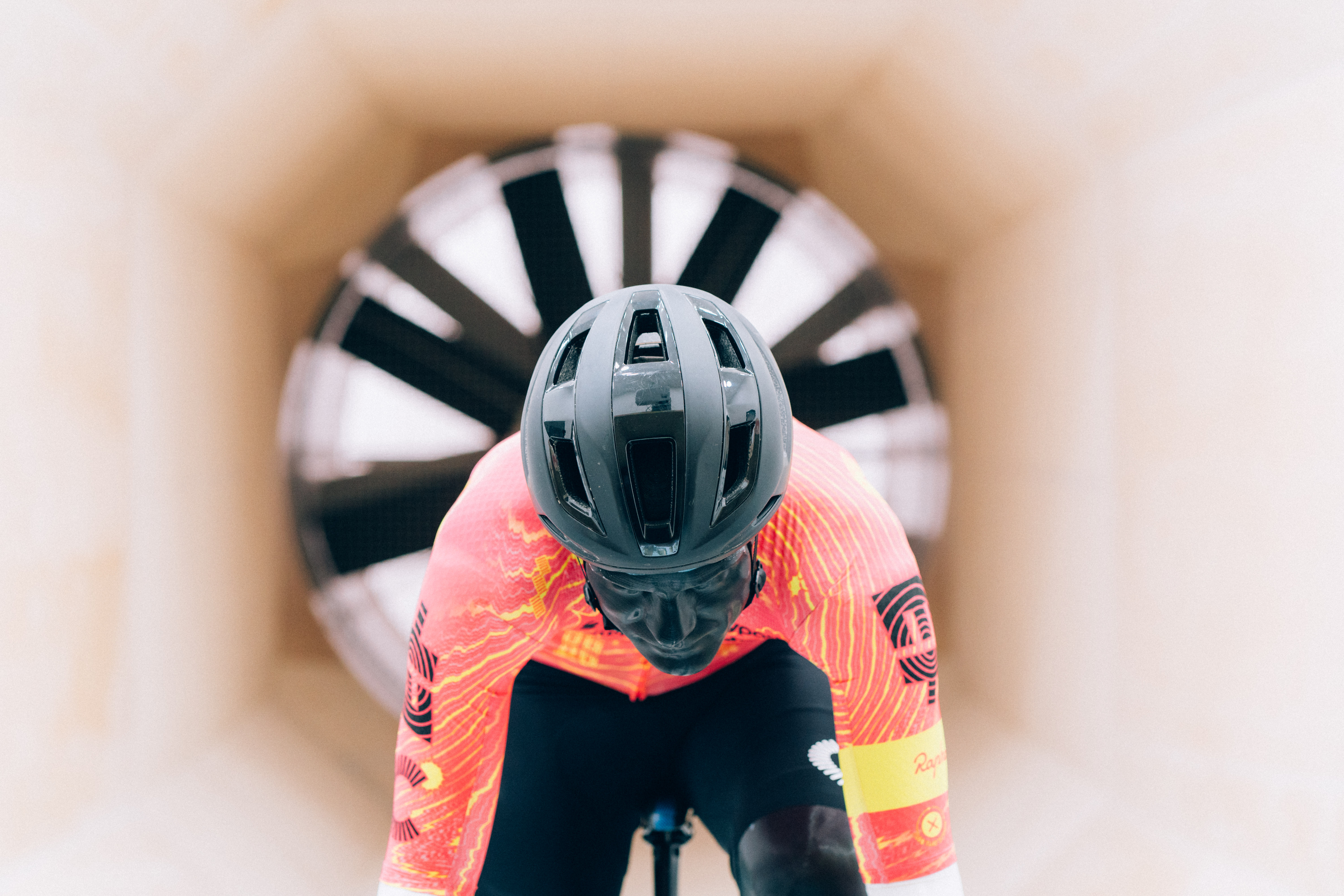
Type: Vented
Price: £125.00 / $189.99
Weight: 330g
Aero drag at 40km/h: 246.81w
Watts saved vs baseline: 1.57w
CdA 0°: 0.2957 m²
CdA 5°: 0.2885 m²
CdA 10°: 0.3131 m²
CdA 15°: 0.3283 m²
Weighted Avg: 0.2999 m²
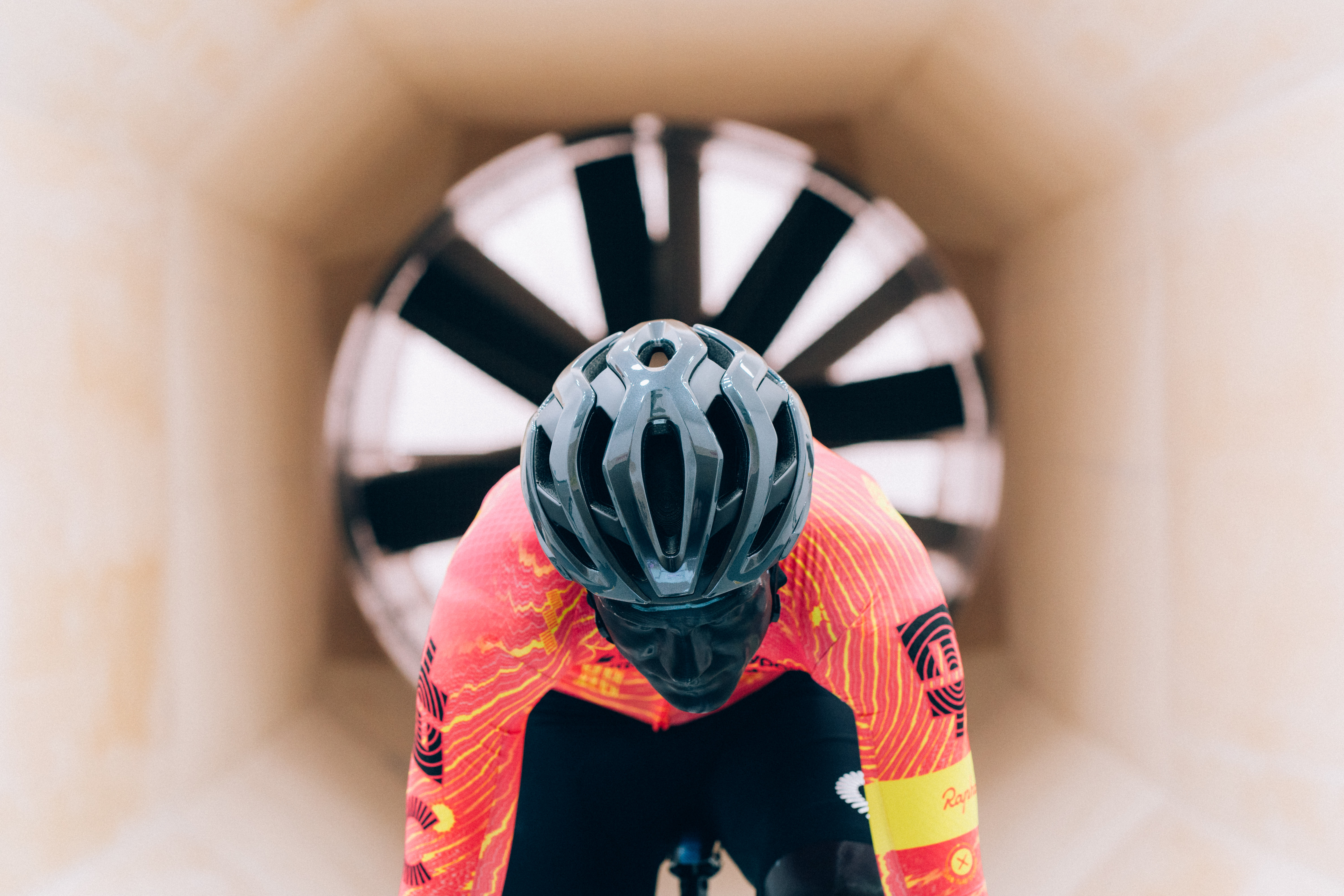
Type: Vented
Price: £189.99 / $287.00
Weight: 360g
Aero drag at 40km/h: 246.89w
Watts saved vs baseline: 1.49w
CdA 0°: 0.2969 m²
CdA 5°: 0.2875 m²
CdA 10°: 0.3142 m²
CdA 15°: 0.3254 m²
Weighted Avg: 0.3000 m²
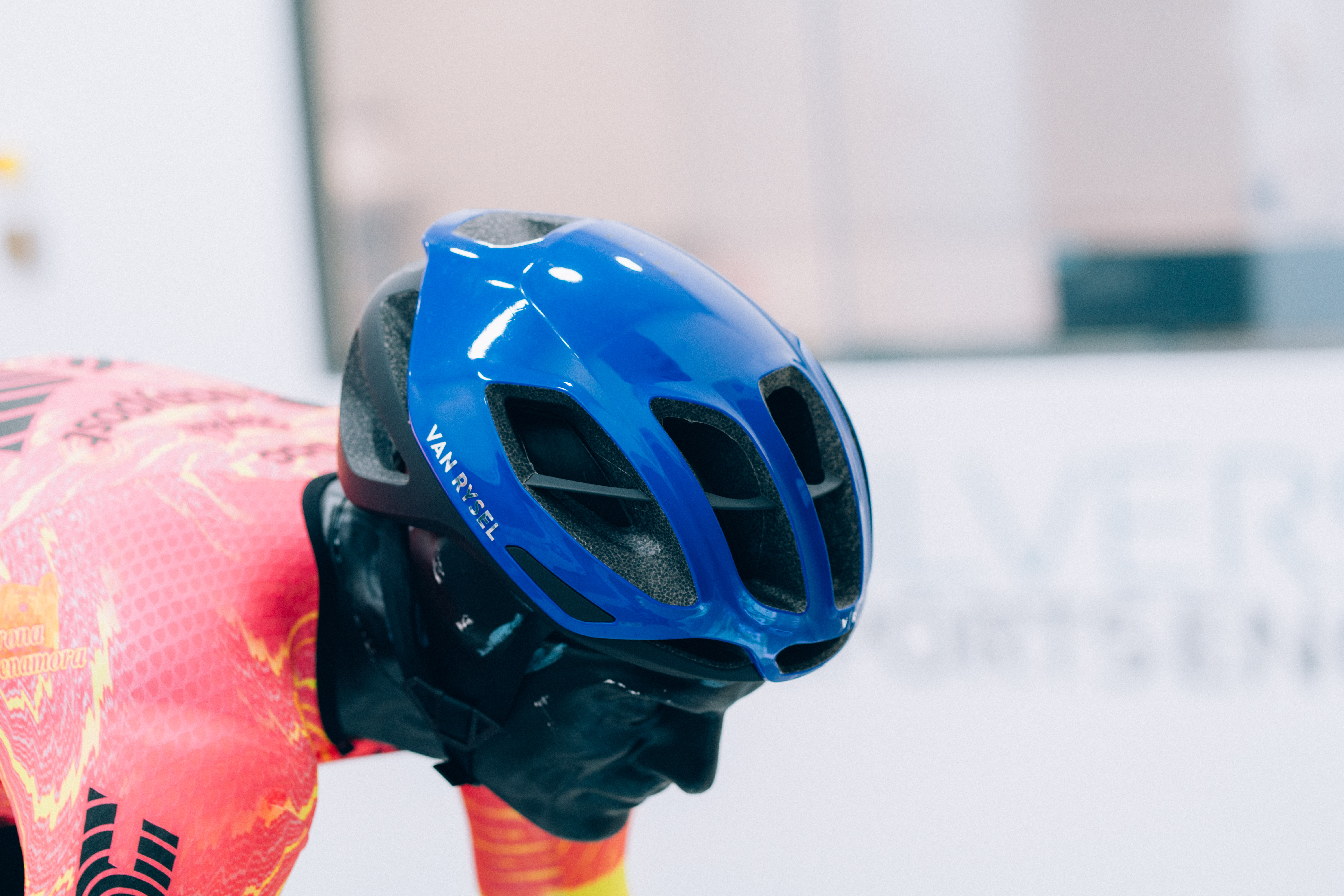
Type: Vented
Price: £79.99 / N/A
Weight: 330g
Aero drag at 40km/h: 247.07w
Watts saved vs baseline: 1.31w
CdA 0°: 0.2967 m²
CdA 5°: 0.2895 m²
CdA 10°: 0.3126 m²
CdA 15°: 0.3251 m²
Weighted Avg: 0.3002 m²
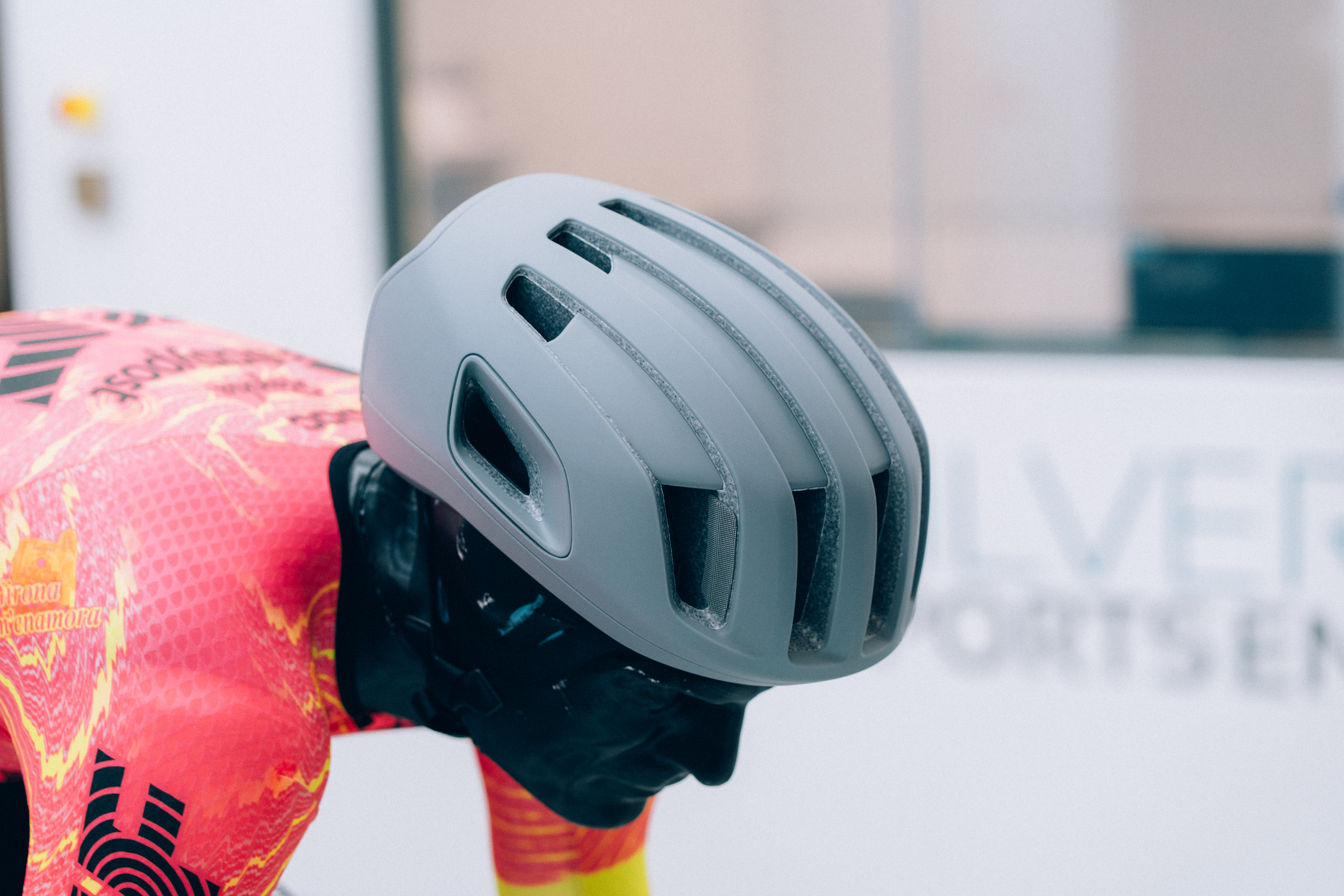
Type: Vented
Price: £290.00 / $349.95
Weight: 305g
Aero drag at 40km/h: 247.22w
Watts saved vs baseline: 1.17w
CdA 0°: 0.2972 m²
CdA 5°: 0.2894 m²
CdA 10°: 0.3127 m²
CdA 15°: 0.3251 m²
Weighted Avg: 0.3004 m²
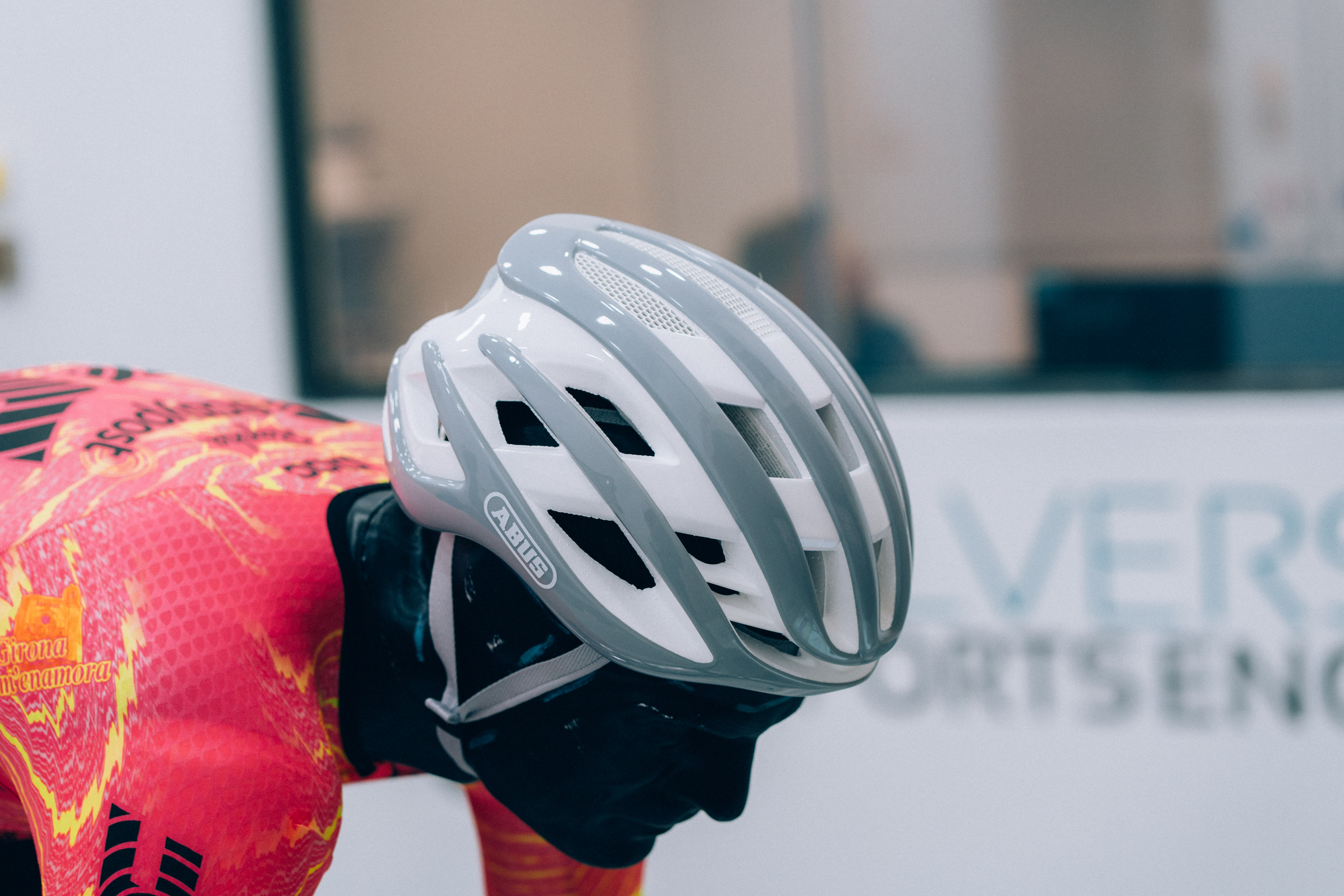
Type: Vented
Price: £225.00 / $249.95
Weight: 225g
Aero drag at 40km/h: 247.26w
Watts saved vs baseline: 1.12w
CdA 0°: 0.2964 m²
CdA 5°: 0.29 m²
CdA 10°: 0.3136 m²
CdA 15°: 0.3249 m²
Weighted Avg: 0.3004 m²
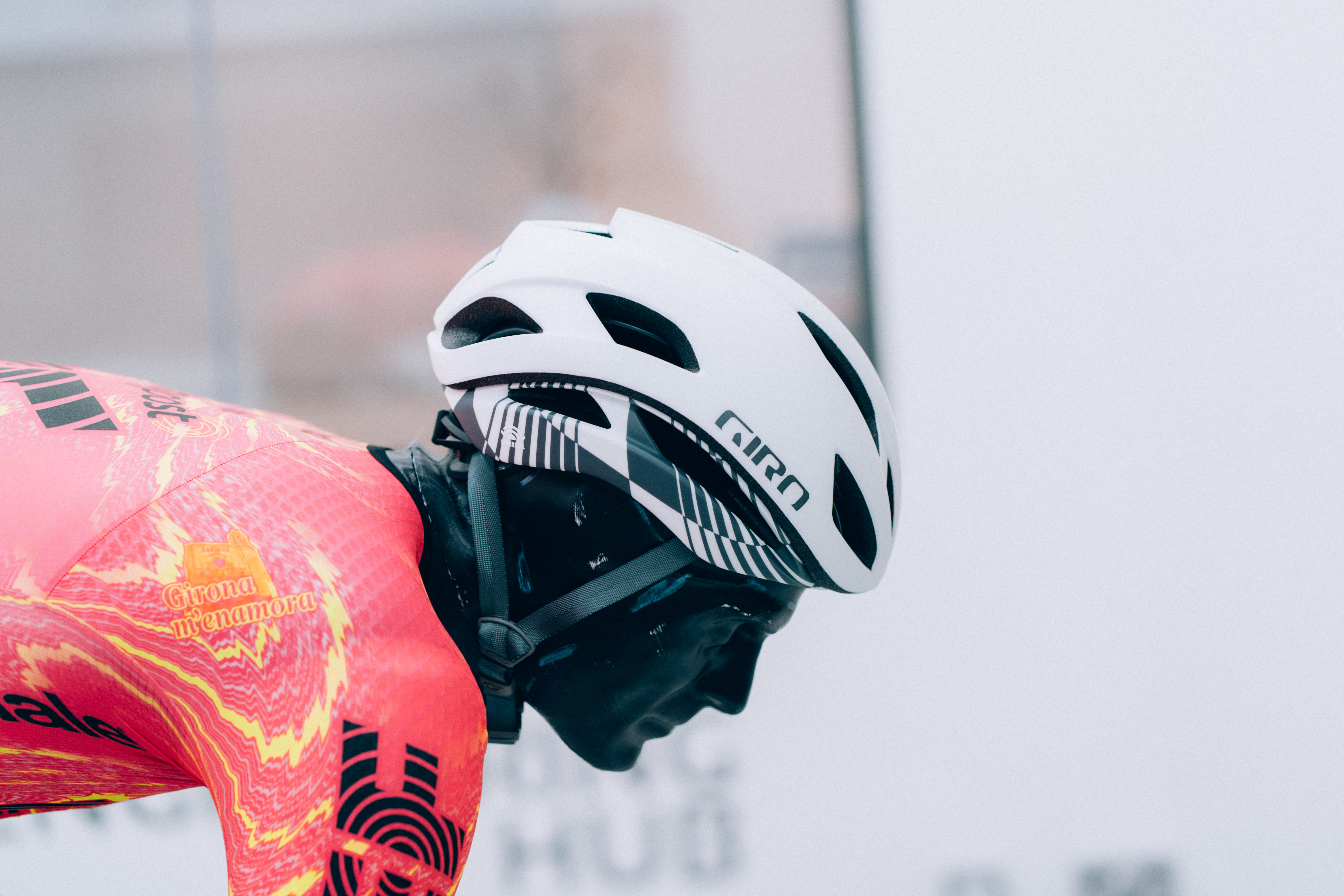
Type: Semi-aero
Price: £234.99 / $299.95
Weight: 320g
Aero drag at 40km/h: 247.28w
Watts saved vs baseline: 1.10w
CdA 0°: 0.2962 m²
CdA 5°: 0.2897 m²
CdA 10°: 0.3142 m²
CdA 15°: 0.3257 m²
Weighted Avg: 0.3004 m²
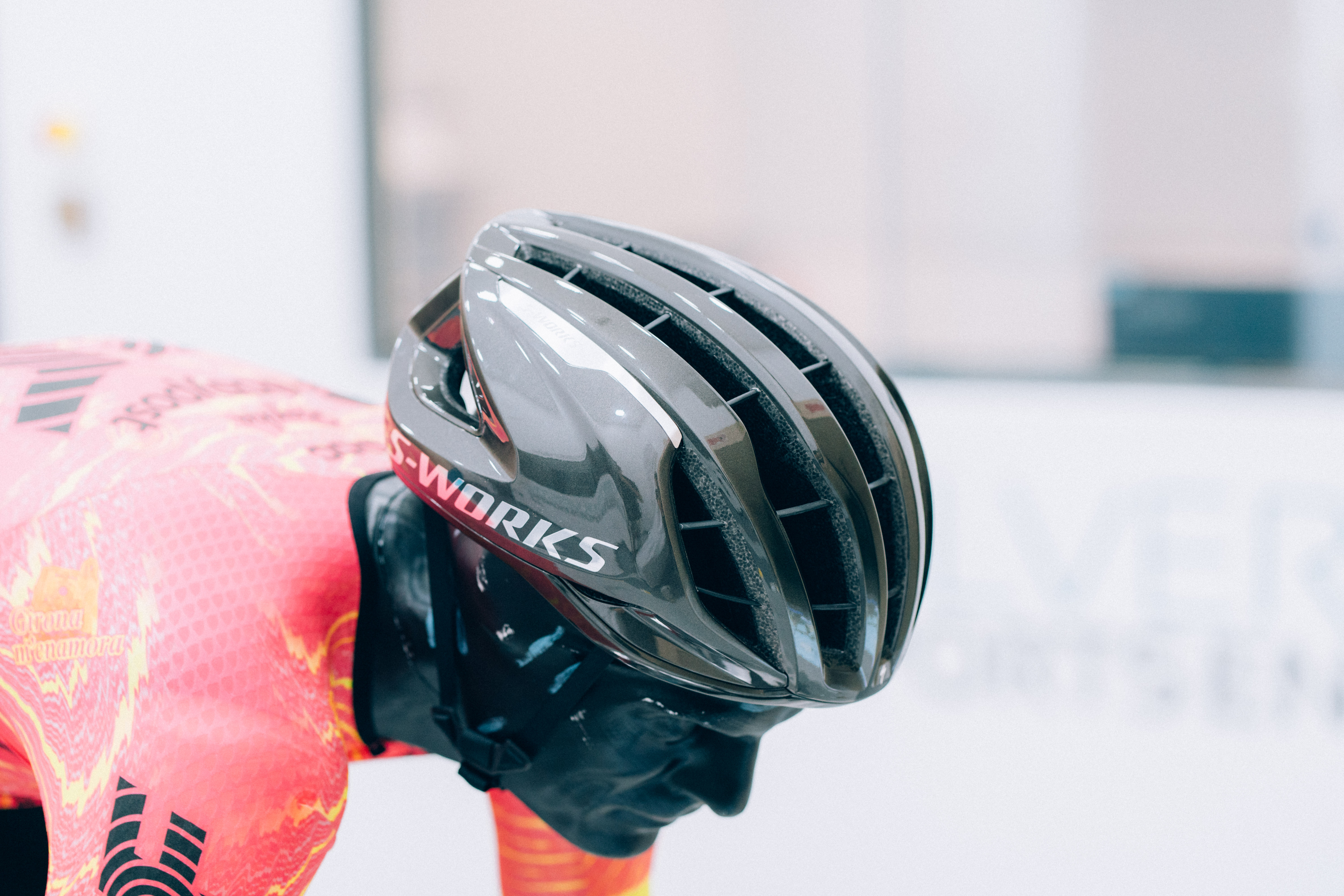
Type: Vented
Price: £250.00 / $299.99
Weight: 305g
Aero drag at 40km/h: 247.28w
Watts saved vs baseline: 1.10w
CdA 0°: 0.2964 m²
CdA 5°: 0.2896 m²
CdA 10°: 0.3139 m²
CdA 15°: 0.3259 m²
Weighted Avg: 0.3004 m²
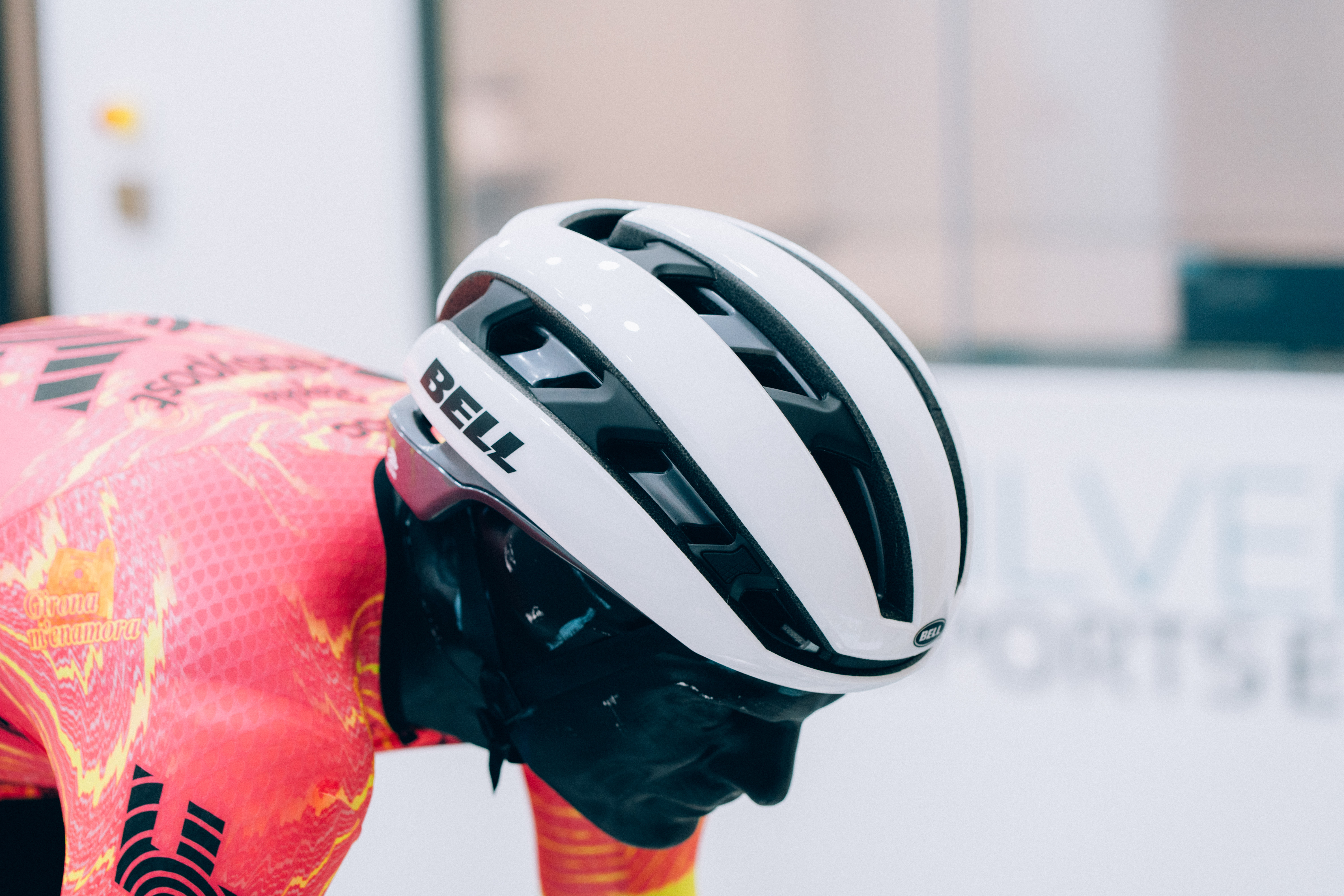
Type: Semi-aero
Price: £210.00 / $225.00
Weight: 325g
Aero drag at 40km/h: 247.31w
Watts saved vs baseline: 1.07w
CdA 0°: 0.2962 m²
CdA 5°: 0.2906 m²
CdA 10°: 0.3138 m²
CdA 15°: 0.3237 m²
Weighted Avg: 0.3005 m²
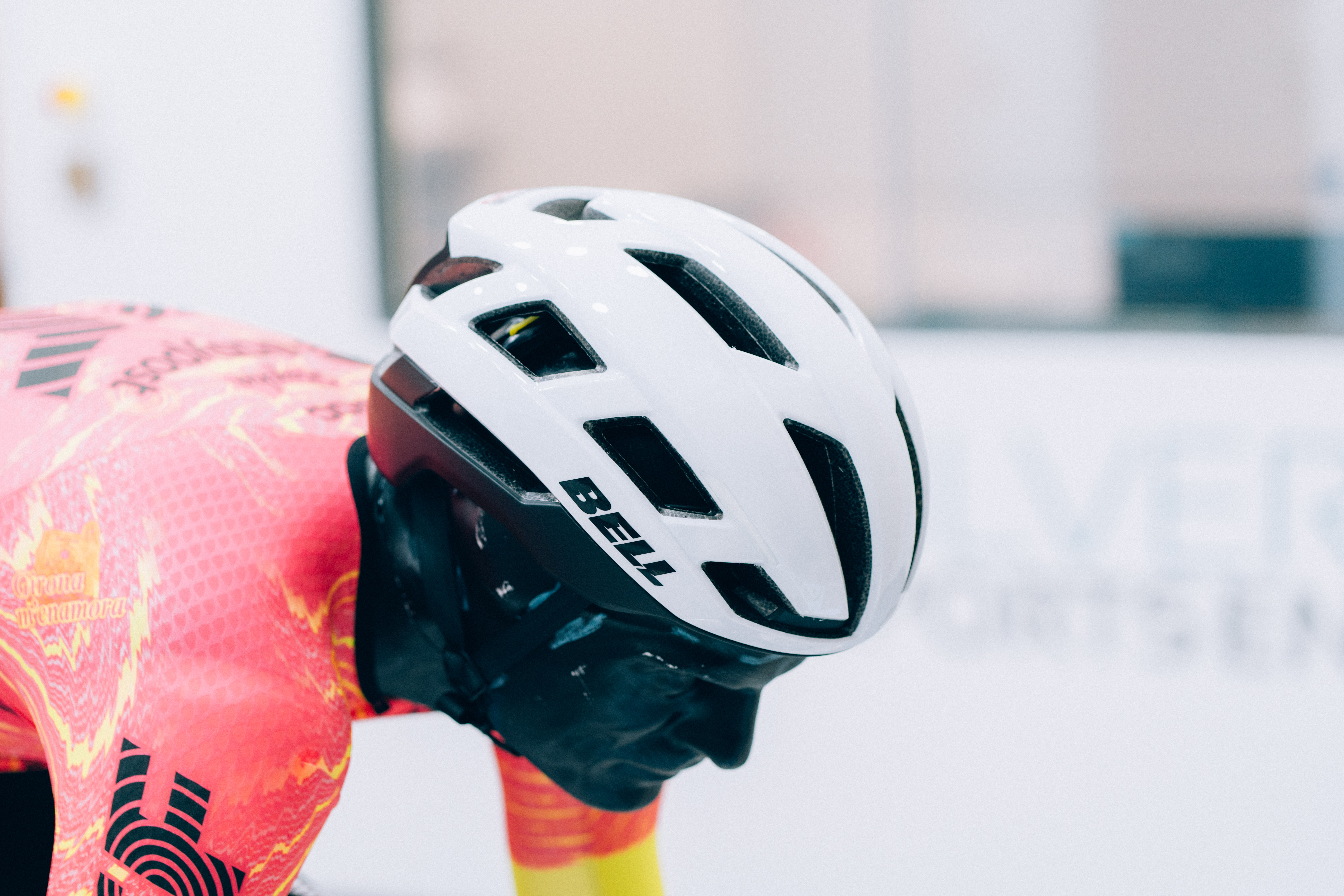
Type: Vented
Price: £119.99 / $149.95
Weight: 370g
Aero drag at 40km/h: 247.40w
Watts saved vs baseline: 0.98w
CdA 0°: 0.2964 m²
CdA 5°: 0.29 m²
CdA 10°: 0.3141 m²
CdA 15°: 0.3256 m²
Weighted Avg: 0.3006 m²
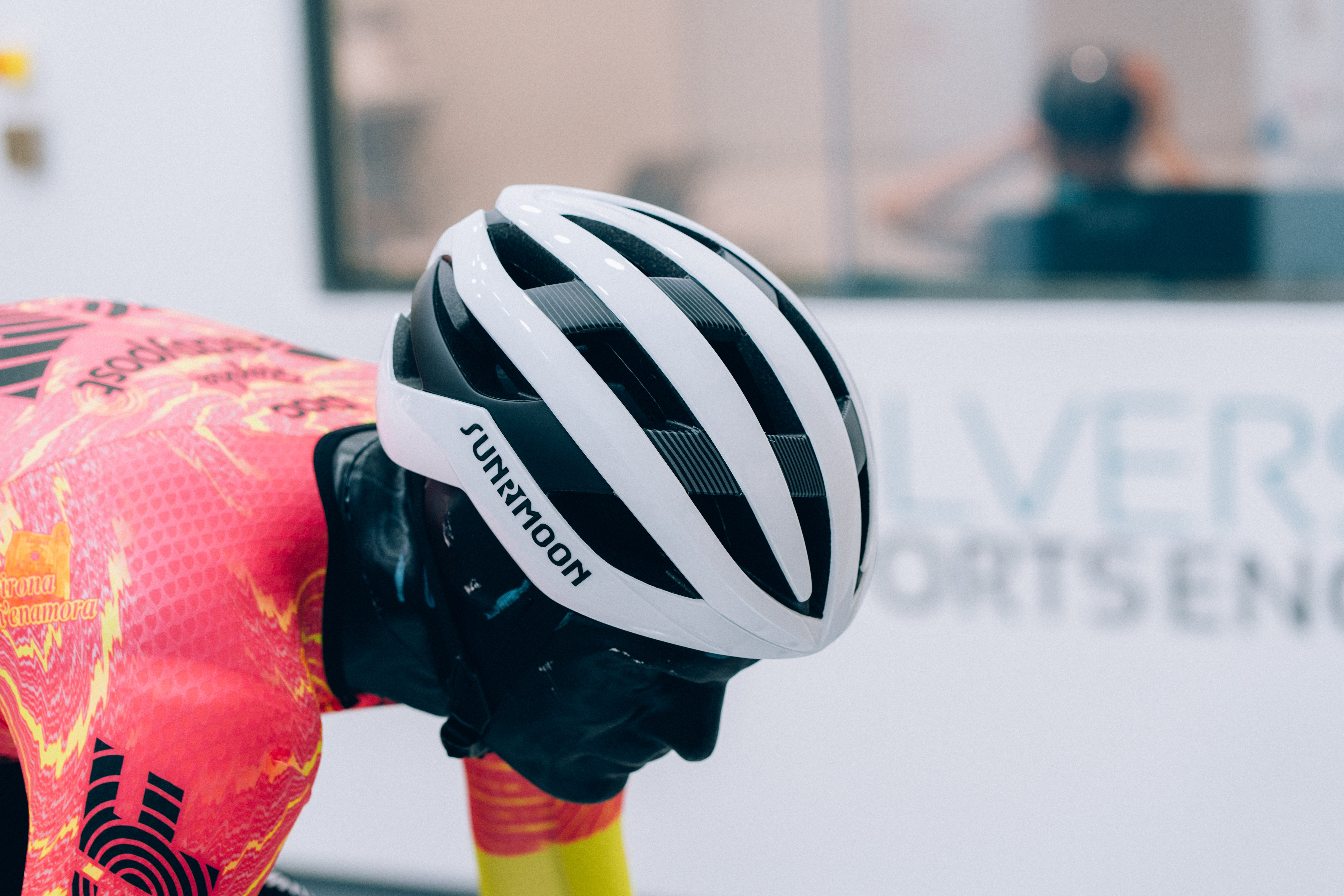
Type: Vented
Price: N/A / $65.00
Weight: 285g
Aero drag at 40km/h: 247.62w
Watts saved vs baseline: 0.77w
CdA 0°: 0.2971 m²
CdA 5°: 0.2894 m²
CdA 10°: 0.3145 m²
CdA 15°: 0.3268 m²
Weighted Avg: 0.3009 m²
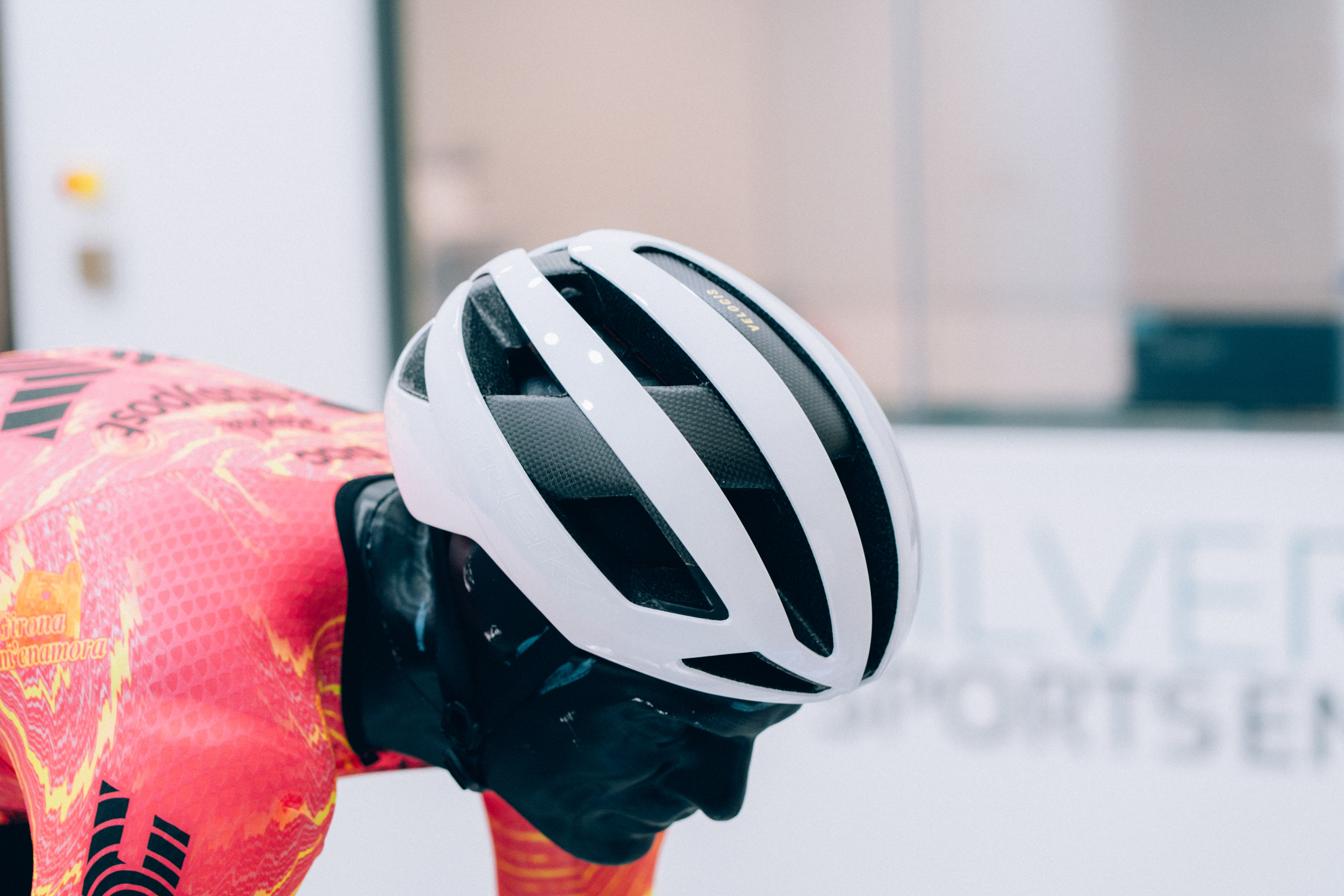
Type: Vented
Price: £199.99 / $329.99
Weight: 260g
Aero drag at 40km/h: 247.87w
Watts saved vs baseline: 0.51w
CdA 0°: 0.2977 m²
CdA 5°: 0.2892 m²
CdA 10°: 0.3148 m²
CdA 15°: 0.3278 m²
Weighted Avg: 0.3012 m²
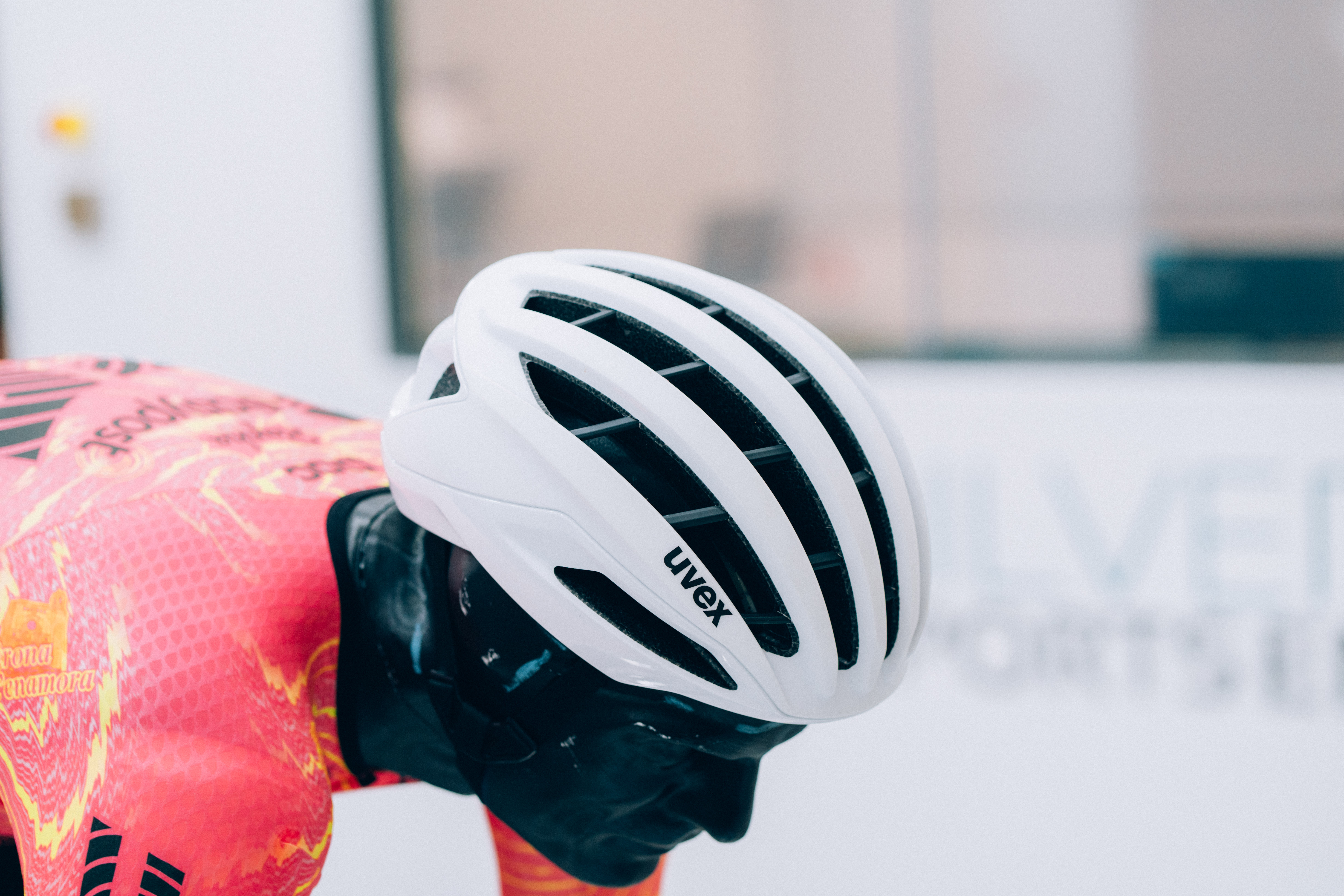
Type: Vented
Price: £219.99 / N/A
Weight: 310g
Aero drag at 40km/h: 247.97w
Watts saved vs baseline: 0.41w
CdA 0°: 0.2977 m²
CdA 5°: 0.2904 m²
CdA 10°: 0.3142 m²
CdA 15°: 0.3261 m²
Weighted Avg: 0.3013 m²
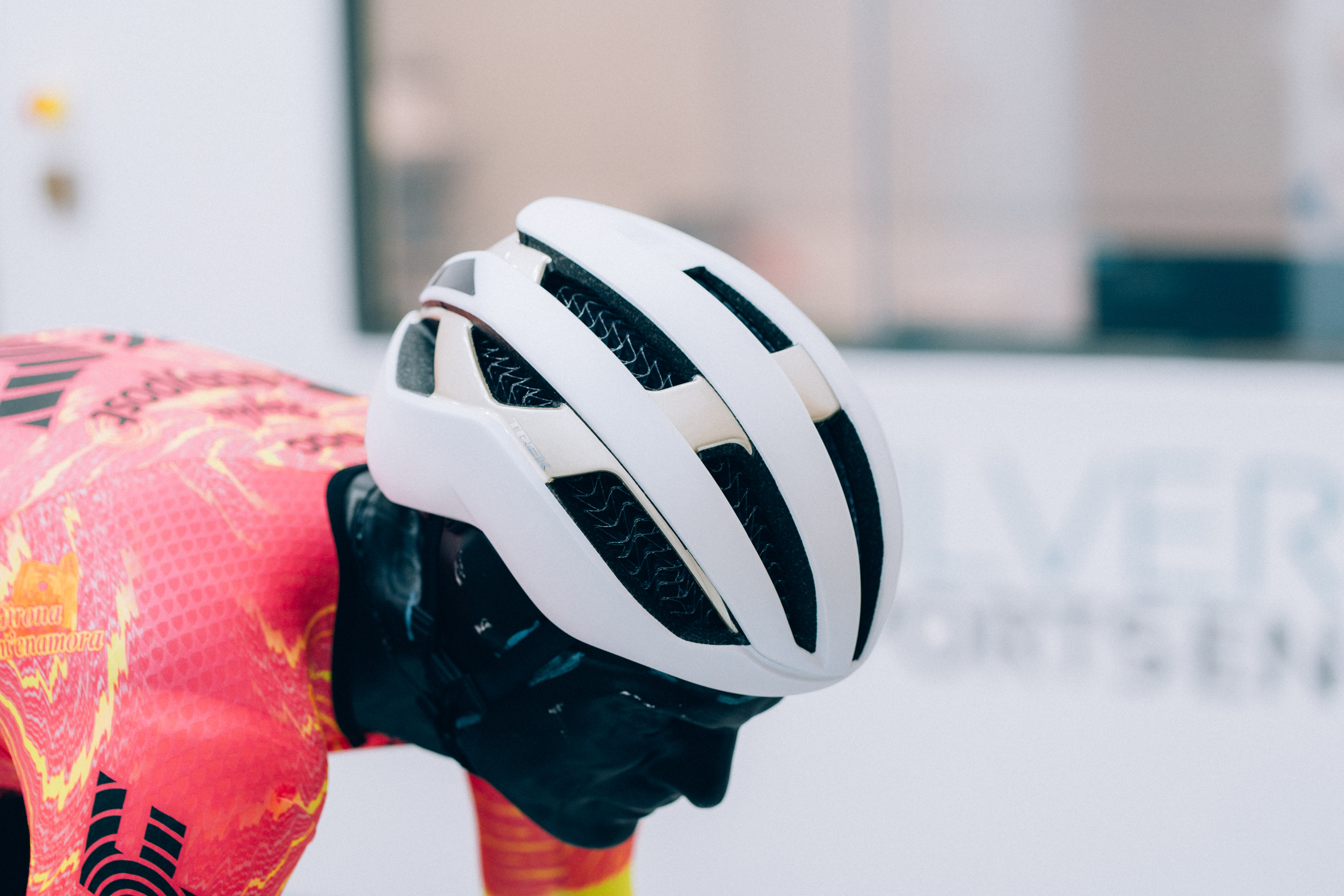
Type: Vented
Price: £150.00 / $174.99
Weight: 370g
Aero drag at 40km/h: 248.36w
Watts saved vs baseline: 0.02w
CdA 0°: 0.2972 m²
CdA 5°: 0.2916 m²
CdA 10°: 0.3147 m²
CdA 15°: 0.3281 m²
Weighted Avg: 0.3018 m²
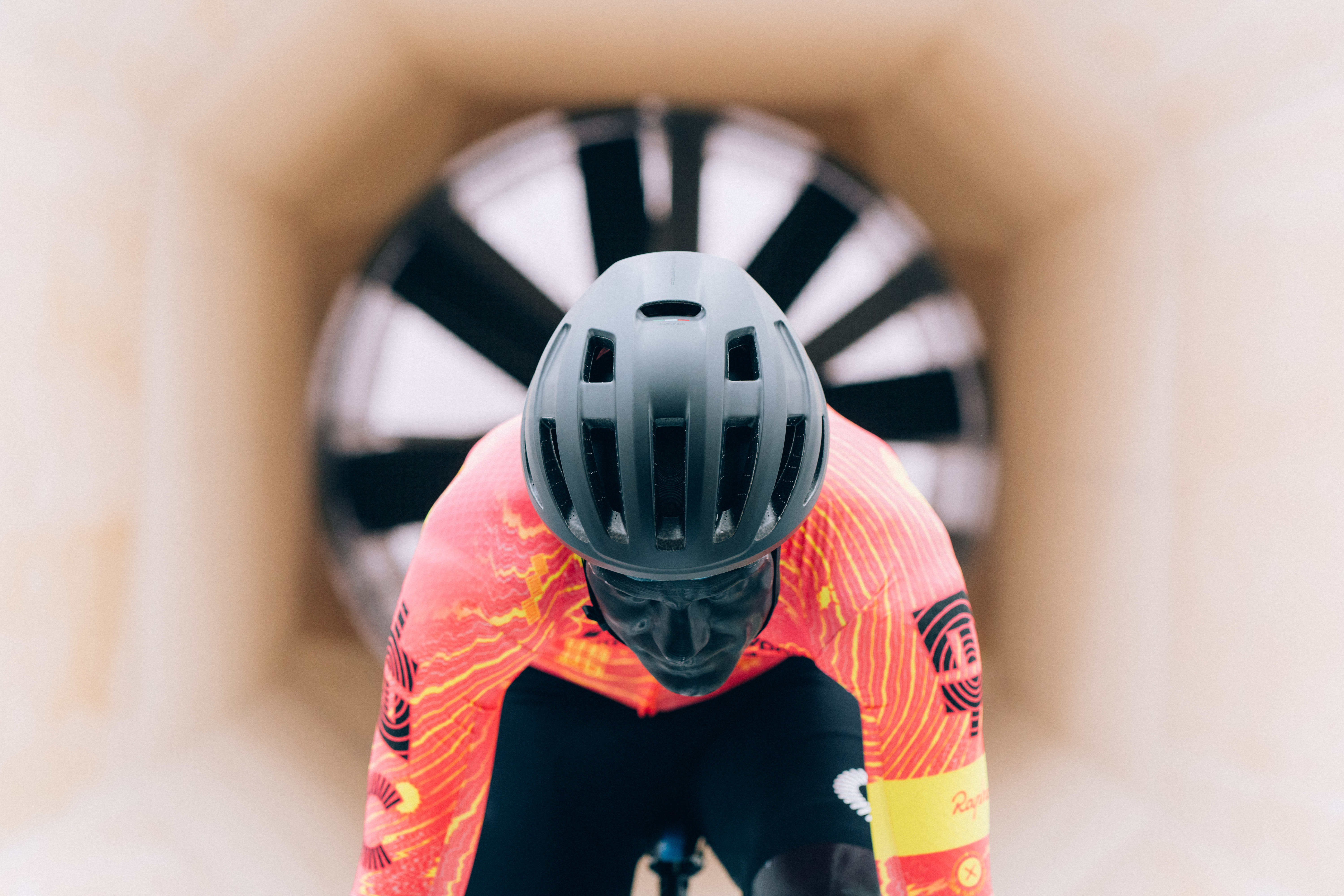
Type: Vented
Price: £130.00 / $159.99
Weight: 230g
Aero drag at 40km/h: 248.38w
Watts saved vs baseline: 0.00w
CdA 0°: 0.2970 m²
CdA 5°: 0.2906 m²
CdA 10°: 0.3164 m²
CdA 15°: 0.3286 m²
Weighted Avg: 0.3018 m²
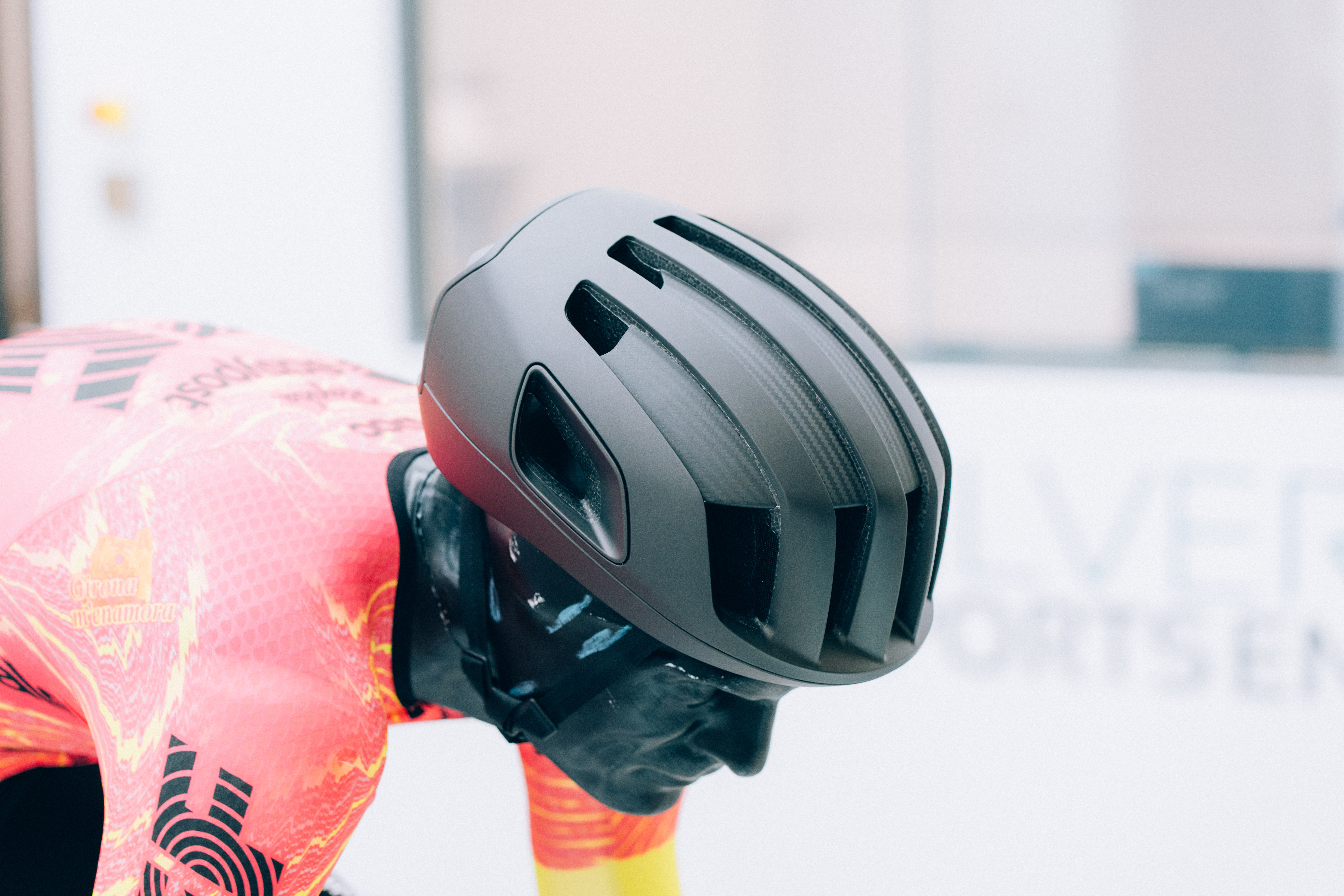
Type: Vented
Price: £360.00 / $450.00
Weight: 285g
Aero drag at 40km/h: 248.69w
Watts saved vs baseline: -0.31w
CdA 0°: 0.2978 m²
CdA 5°: 0.2908 m²
CdA 10°: 0.3163 m²
CdA 15°: 0.3292 m²
Weighted Avg: 0.3022 m²
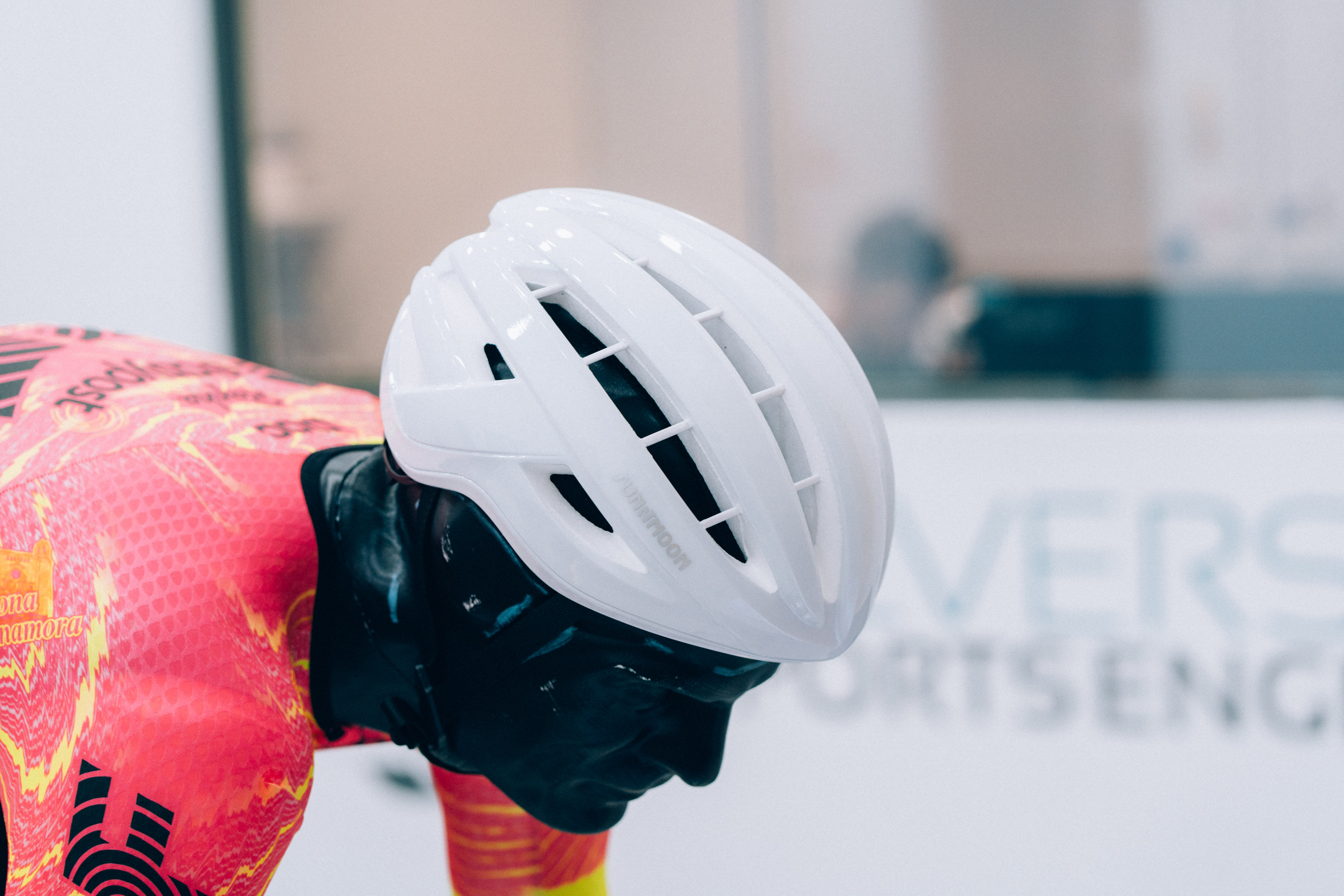
Type: Vented
Price: N/A / $85.00
Weight: 265g
Aero drag at 40km/h: 248.70w
Watts saved vs baseline: -0.32w
CdA 0°: 0.2985 m²
CdA 5°: 0.2897 m²
CdA 10°: 0.3162 m²
CdA 15°: 0.3306 m²
Weighted Avg: 0.3022 m²
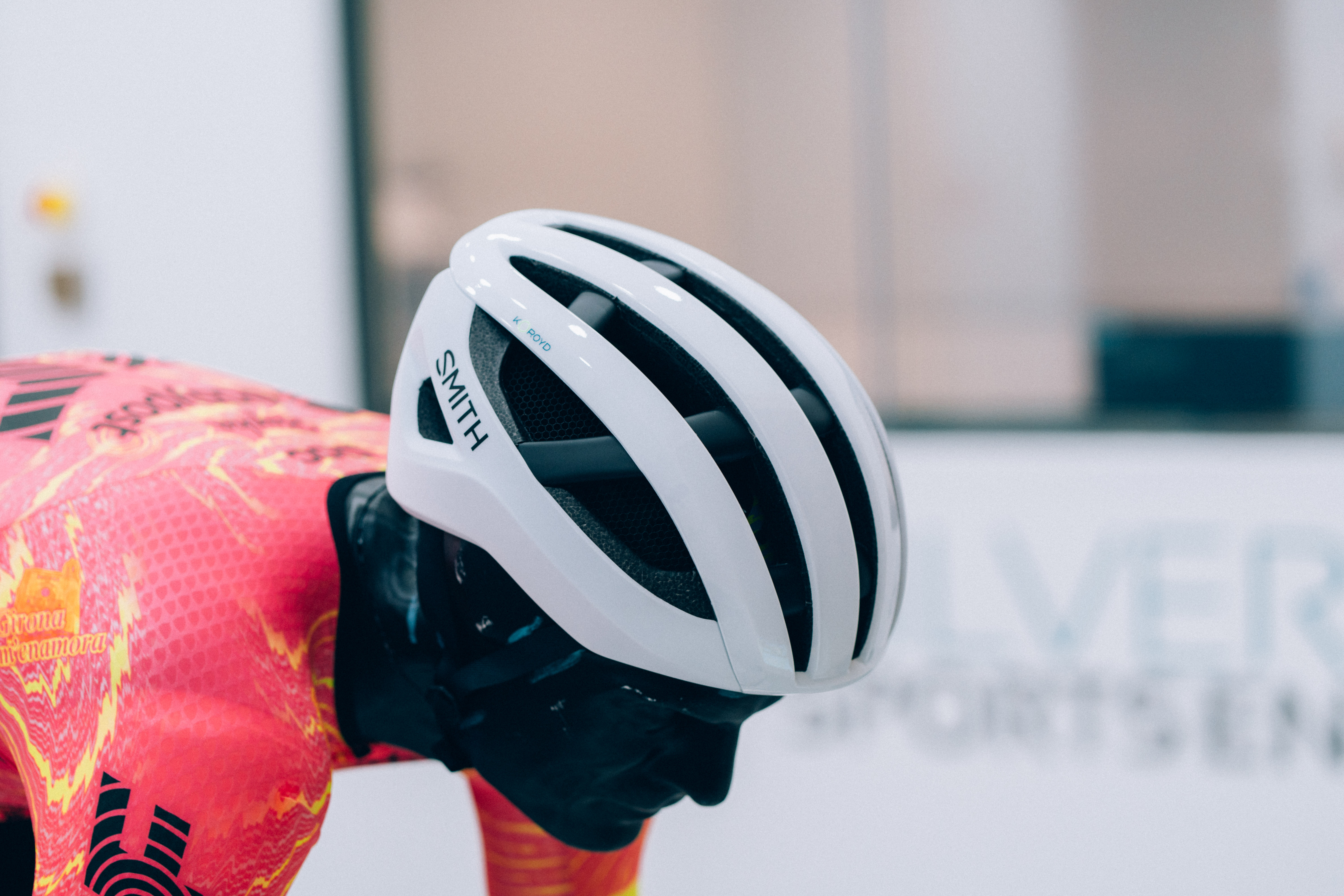
Type: Vented
Price: £149.99 / $170.00
Weight: 245g
Aero drag at 40km/h: 248.77w
Watts saved vs baseline: -0.39w
CdA 0°: 0.2971 m²
CdA 5°: 0.2915 m²
CdA 10°: 0.3168 m²
CdA 15°: 0.3295 m²
Weighted Avg: 0.3023 m²
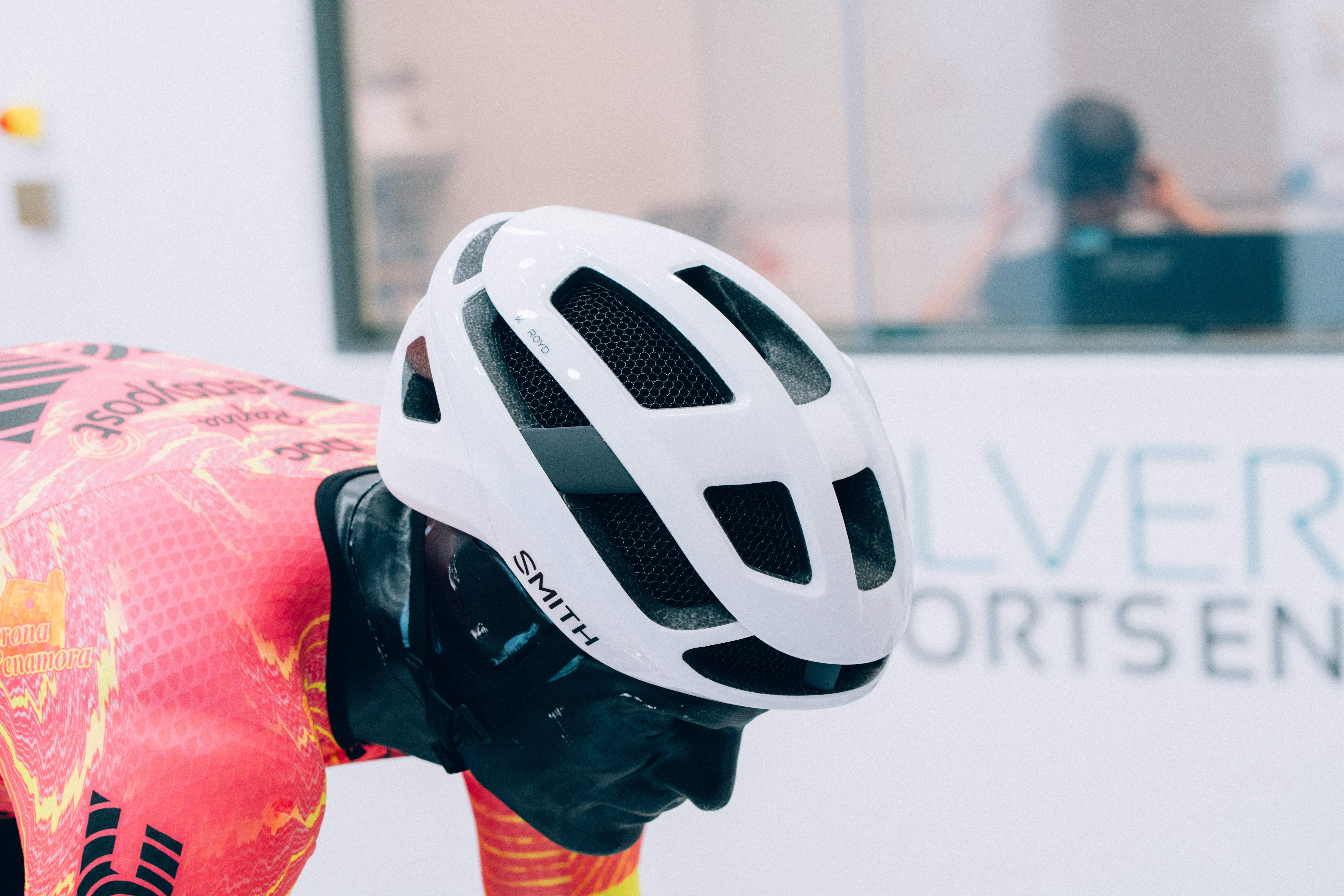
Type: Vented
Price: £219.99 / $250.00
Weight: 330g
Aero drag at 40km/h: 248.96w
Watts saved vs baseline: -0.58w
CdA 0°: 0.2978 m²
CdA 5°: 0.2921 m²
CdA 10°: 0.3161 m²
CdA 15°: 0.3286 m²
Weighted Avg: 0.3025 m²
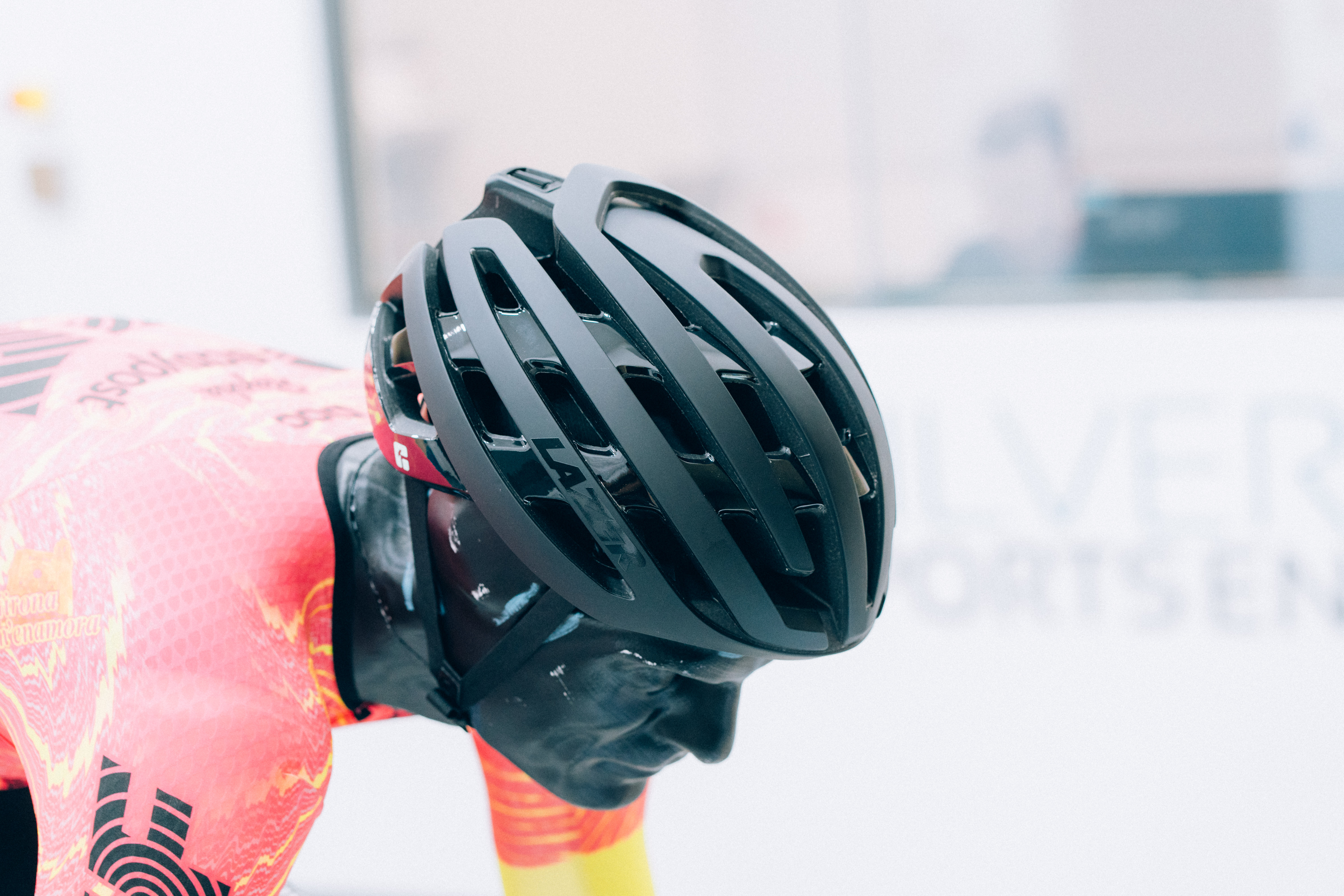
Type: Vented
Price: £229.99 / $299.99
Weight: 270g
Aero drag at 40km/h: 249.12w
Watts saved vs baseline: -0.74w
CdA 0°: 0.2985 m²
CdA 5°: 0.2917 m²
CdA 10°: 0.3164 m²
CdA 15°: 0.3286 m²
Weighted Avg: 0.3027 m²
The conclusions
There we have it, 47 helmets, 55 tests, and a whole heap of numbers for data nerds to feast upon, but what did we learn?
1. You don't have to be a pro to make savings
While we did the test at 40km/h, physics applies to all of us, and so even amateurs will benefit from improved aerodynamics.
As an amateur, riding at 40km/h on your own will be tough. Not unfeasible, but tough.
When you do ride that fast, you'll probably be riding in a bunch, where the airflow is reduced anyway. While an aero helmet is still beneficial, the real-world difference will be smaller than if you were in a time trial or a solo breakaway.
However, most keen amateurs will be able to hold 30km/h for extended periods of time, and the difference on offer here at that speed is around 3.7 watts. For someone with a 250-watt FTP, that's a 1.5% bump in performance simply by swapping helmets. That's significant, and a saving that most amateurs will be able to get.
2. Upgrade your tyres, tubes and kit before you look at helmets
Okay, I probably should have said this earlier on and saved you all the reading, but better late than never!
Ignoring the TT helmets for now, the difference between the fastest (Oakley Velo Mach) and slowest (Lazer Z1) on test, with our error margin considered, is at least 7.36 watts, and at most 10.32. The price difference between those two helmets isn't massive, but buying a new, high-end helmet will realistically set you back around a couple of hundred pounds/dollars.
When we took 24 of the best road tyres to the lab for a road tyre rolling resistance test, we found a saving of 30 watts across a pair of tyres from the slowest to fastest, and a still impressive 17.4 watts between two race-focused tyres. This will cost around the same, maybe a little less, given high-end tyres are priced at around 75-100 pounds/dollars each.
We also tested different types of inner tubes and found that even a swap from butyl tubes to latex tubes could save 8.8 watts, for a significantly smaller initial outlay.
And then once tyres and tubes have been dialled in, consider upgrading your clothing too. Our wind tunnel clothing test, using the full Kalas kit range, from entry-level bibs and jersey to the kind of super-suit worn by WorldTour athletes, found a saving of around 24 watts. The price of that setup was a little higher than the most expensive helmets on this list, but the bigger saving makes for a slightly better ratio of cost per watts saved.
3. Aero position = aero helmet
In our test, which used a rider in a fairly aggressive 'drops' position, the longer-tailed aero helmets performed better on average than rounder semi-aero helmets and well-vented helmets. As mentioned above, our protocol used a helmet angle of around 32 degrees (where zero is horizontal).
However, as was shown in our prior test, a more upright position may well see different results. In instances where your head is 'above' your shoulders (you're sitting upright), rather than in front of them, less benefit will be found from helmets that are designed to guide the air around the shoulders.
That previous test found that most aero helmets were still faster than vented ones, so on balance, assuming you care about aerodynamic performance (a safe assumption given you're this deep into this feature), an aero helmet is still the one to go for.

4. Flappy straps don't slow you down
In an amusing contradiction of our last test, in which I advised you 'sort out your straps' based on advice from a helmet designer, our latest findings are that badly-adjusted, flappy straps make absolutely no difference to your aero performance.
Of course, you should adjust them correctly to ensure your helmet will protect you as necessary in a crash, but if you're wondering if you're giving away watts, you're not. It does look naff though, so I stand by my original instruction to sort them out.
5. Safety first
The last takeaway is more of a PSA than a learning, per se, but an important one nonetheless. You are buying a helmet because wearing one is safer than not wearing one, and an ill-fitting helmet isn't safe.
If a helmet saves you six watts, but doesn't do its primary job of protecting you in a crash, those six watts might quickly seem incredibly trivial.
This is especially pertinent in time trialling, where there's a trend towards bigger and bulkier helmets, backed up here by the size Large Met Manta being faster than the Medium.
When you're buying a helmet, feel free to use these numbers as a guide, but not as gospel. If a helmet doesn't fit, feels a bit wobbly, or blocks your vision, try another one.
If you subscribe to Cyclingnews, you should sign up for our new subscriber-only newsletter. From exclusive interviews and tech galleries to race analysis and in-depth features, the Musette means you'll never miss out on member-exclusive content. Sign up now

Josh is Associate Editor of Cyclingnews – leading our content on the best bikes, kit and the latest breaking tech stories from the pro peloton. He has been with us since the summer of 2019 and throughout that time he's covered everything from buyer's guides and deals to the latest tech news and reviews.
On the bike, Josh has been riding and racing for over 15 years. He started out racing cross country in his teens back when 26-inch wheels and triple chainsets were still mainstream, but he found favour in road racing in his early 20s, racing at a local and national level for Somerset-based Team Tor 2000. These days he rides indoors for convenience and fitness, and outdoors for fun on road, gravel, 'cross and cross-country bikes, the latter usually with his two dogs in tow.
You must confirm your public display name before commenting
Please logout and then login again, you will then be prompted to enter your display name.
